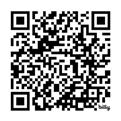




By John Yoswick, Autobody News
Collision repairers for decades have understood the concept of “judgement times,” having to determine while looking at the vehicle how much labor will be required to repair a particular dent in a panel, for example.
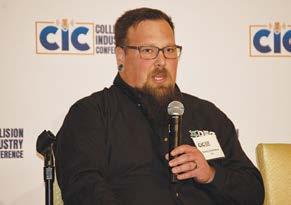
Given changes in the estimating systems in the past year, determining blend time has become another of the items requiring an “on-the-spot evaluation.”
Though the 50% of full refinish time remains the default setting for calculating blend times in the CCC Intelligent Solutions and Solera (Audatex) estimating systems, users can change that percentage, and the two companies changed their guidance to say blend times vary and require a vehicle-by-vehicle evaluation. Mitchell continues to use the 50% formula but has given users the ability to change that percentage in the system.
A committee presentation at the Collision Industry Conference (CIC) in Denver this past summer highlighted how many other collision repair labor operations there are that, like blending, require the judgement or “on-thespot evaluation” by the estimator.
Danny Gredinberg of the Database Enhancement Gateway (DEG) noted there are many notincluded labor procedures that body technicians in shops may be performing. He said the “labor general information” section of the Mitchell P-pages lists 17 bodylabor-related items that would be additions to its published times, including broken glass clean-up and tar and grease removal.
“It should not be inferred that a component with no established labor time has been included in another component’s replacement allowance,” the Mitchell P-pages state.
The Motor Information Guide to Estimating — the basis for the CCC estimating system — lists 43 not-included items in the body section alone, including “road test vehicle” and “anti-corrosion material restoration/application.”
The Solera (Audatex) database reference manual lists 61 bodyrelated “labor exclusions,” including “assembly of new parts that come unassembled,” and “disassembly of recycled parts and assemblies.”
“So there’s many different things you may need to consider in the repair process as an ‘on-the-spot’
By Paul Hughes Autobody News
California lawmakers are running for re-election, but not before they concluded a legislative session Aug. 31 that saw key bills affecting collision repairers, touching every aspect of operations.
Meanwhile, state agencies, notably the California Bureau of Automotive Repair (BAR), continuously craft industry-related rules carrying the force of law.
Gov. Gavin Newsom had until Sept. 30 to sign or veto bills. Days before the deadline, he vetoed key bills involving electric vehicles and ADAS technology. The first mandated battery recycling; the
second required equipment affecting how fast Californians drive.
Below is a roundup of issues covered in law and regulation that are among the most important to body shops.
Autobody News research and material from the California Autobody Association (CAA) underpin what follows. We note if bills failed or passed, were vetoed or signed into law, and key regulations on the way.
SB 615 would require electric vehicle batteries to be disposed of properly. Specifically, it says they must be “recovered and, when possible, reused, repaired, repurposed, or
l CONTINUED ON PAGE 16
By Abby Andrews Autobody News
The Northwest Auto Care Alliance (NWACA) is dedicated to uniting automotive service professionals, including collision repairers, in Washington, Idaho, Nevada, Oregon, Alaska and Montana.
A large part of the mission is providing training and education opportunities to its members.
“We try to keep our members engaged, to keep things fresh,
because the industry changes so fast,” said Micah Strom, collision chair of NWACA and the owner of Modern Collision Rebuild and Service in Bainbridge Island, WA, Strom and Brenda Wolslegel, NWACA executive director, provided an update on the alliance’s monthly, quarterly and annual collision repair education offerings.
Dateline
NWACA emails its Dateline newsletter
l CONTINUED ON PAGE 19

See it at our booth #31017 upstairs, South Hall

The liner reimagined.
When used with SATA spray guns, there is no need for an adapter.
Particle free premium strainers that click into the lid before painting.
Lids offer a quadruple bayonet safety system
Hard cup, liner and lid are made with high quality materials.
Complete and detailed scale system with an upside-down scale
LCS: .40 liter, .65 liter, .85 liter

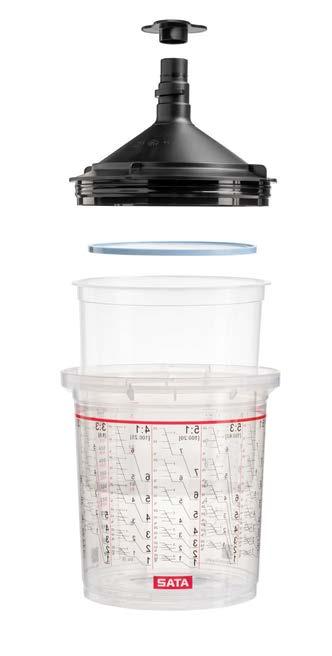
Mike Anderson Shops’ Needs from OEM Parts Wholesalers Go Beyond Prices, Discounts 22
Abby Andrews
CAA Revives San Diego Chapter with ‘Who Pays for What?’ Update 36
Connecting Vehicles Could Be Useful in Collision Repair 20
Negotiate with Insurance Companies to Get Compensated for Proper Repairs 30
NWACA Working to Keep Collision Repair Members On Top of Industry Changes 1
Using DRPs to Fuel Your Collision Repair Shop’s Growth 8
Brian Bradley Analysts: Fed Rate Cut Could Drive Brownfield Acquisitions in Collision Repair 26
Elizabeth Crumbly
Mitchell Donates $1.5M in Tech to Boost Collision Engineering Program 42
Why MSOs are Stepping Up to Purchase Dealership Collision Centers 4
Paul Hughes Arkansas MSO Owners Find Out How Much Work Goes into Selling to
Consolidator 18
California Legislature Decides Dozens of Bills Affecting Collision Repair Industry 1
Should Independent Body Shops Care About Growing State-Level Push for Consumer Privacy? 10
Vetoes Press Pause for California Body Shops on ADAS, EV Issues 34
Stacey Phillips Ronak
3M Skills Development Center Celebrates First Anniversary of Educating, Upskilling Technicians 6
Lucid Hosts First Certified Body Repair Network Conference 28
Leona Scott
How Body Shops Can Navigate the Challenges of EV Collision Repairs 44
John Yoswick
Blend Times Now Require ‘On-the-Spot’ Determination 1
Collision Shops, Vendors Can Help Counter Grim Entry-Level Tech Numbers 14
Low-Voltage Batteries in EVs, Hybrids Need Particular Attention in Collision Repair Shops 32
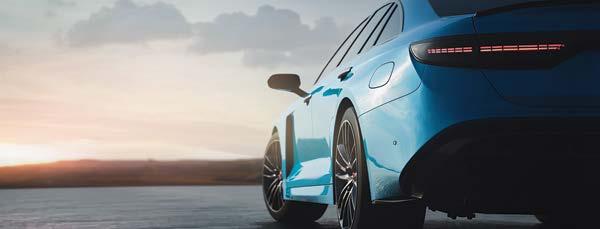
By Elizabeth Crumbly Autobody News
Sales of dealership collision centers pose multifaceted benefits, both for dealerships selling and the MSOs that often purchase. These changes aren’t without challenges, but a consolidating industry means these moves will likely become more common in coming years.
“It’s a slow and steady trend that we’ve seen for many years,” said Madeleine Roberts Rich, senior associate with Focus Advisors, a firm that represents MSO owners as they grow or exit. “The reason is
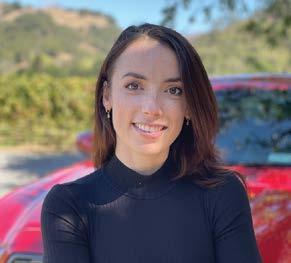
that the collision repair industry is consolidating. As we’ve seen, there’s a handful of consolidators that are establishing more and more market share primarily through acquisitions.”
When Dealerships Sell
So, why are dealerships selling? It’s primarily to streamline operations and enhance focus on automotive sales, reducing the added management needs for collision repair operations. Keeping up with technology and the hiring competition for highly trained technicians can be prohibitive in keeping a shop going.
“The game is much more expensive than it has been in the past, and the tech workforce really drives volumes,” explained David Roberts, Focus Advisors founder and managing director. “So, if you don’t have a steady volume of vehicles going through your collision repair shop, people are going to look around where they can make more money, and they’ll almost invariably find an MSO in the area that is doing more work.”
And dealerships that find a buyer free up significant funds.
“They have cash that they can then use as capital to invest in their core competency if it’s expanding their existing dealership operations in place or then trying to expand to a new location,” Rich explained. “They
have freed up cash in this liquidity event, and in a high interest rate environment like we’re in, access to cash can be quite important.”
There’s also built-in opportunity for sale of more parts for dealerships as they continue to funnel repairs from vehicle buyers toward shops they’ve sold. This scenario is beneficial when a dealership sells the shop but keeps the real estate in a long-term lease situation.
One drawback Roberts noted in that scenario is that buyers will likely extract regular repair discounts from a dealer, but the volume of business can make up for that factor. Indeed, Rich said, lifetime customers often mean lifetime servicing of a vehicle or multiple vehicles: It’s one more reason to make sure a collision center is in capable hands.
MSOs looking to purchase dealership collision centers get the benefits of having a staffed location with ready equipment, and ostensibly, they start out with dealership customers. That doesn’t mean there aren’t potential hurdles, though.
These purchasers, explained Roberts, need to be sure they’ll really have access to a steady pipeline of customers as dealerships’ modes of operation often differ from those of shops that have been historically focused strictly on repair.
“If you’re an MSO buying a dealer
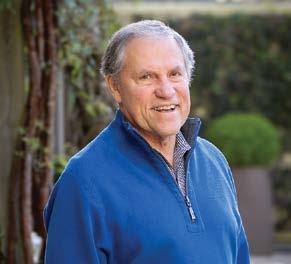
shop, you really do have to have your act together,” Roberts said. “The dealer is trying to manage a bunch of different things, and if they’ve got a bunch of different nameplates and they’re really into selling new and used cars and servicing those cars, then getting access to repairable vehicles today comes much more through insurance companies. And most dealers don’t have arrangements with insurance companies in which they participate in direct repair programs.”
Making sure a shop is the right fit is also important for an MSO looking
to purchase.
Joe Hudson’s Collision Center, an-Alabama-based MSO, which recently entered the dealership shop acquisition trend by buying Bedford Nissan Collision Center in Bedford, OH, is an example of this factor. Bedford Nissan’s existing certifications made it a fit for acquisition, Joe Hudson’s Chief Operating Officer Cameron Dickson explained in a press release.
“Identifying growth opportunities that align with our standards for quality and outstanding customer service is crucial,” Dickson said. “Bedford Nissan Collision Center’s numerous OEM certifications and I-CAR Gold Class recognition make it an ideal partner. This acquisition allows us to quickly integrate our operations and continue delivering the top-notch service our customers have come to expect.”
Dealership sales are on the rise right now, according to a report released in June by Kerrigan Advisors, an auto buy/sell advisory firm. The first quarter of this year, the firm reported, saw a 38% rise in dealership sales compared to first quarter of 2023.
It’s important for dealers to consider how their collision operations factor into these sales, and transition of body shop ownership can happen in a number of ways. Some dealers just want to be out of the game altogether, and that can mean moving the shop off their premises.
“They just want to sell the business,” Roberts explained. “They don’t get as much for the business, but they repurpose the body shop into more service space.”
In this case, he said, a buying MSO might move the business, its equipment and its employees to an existing shop that has capacity.
Dealers will also participate in the aforementioned long-term lease situation. This, Rich pointed out, makes for a built-in credit tenant and a lowered capitalization rate. Lower cap rates (annual net operating income divided by market value) indicate less risk and higher value for commercial real estate.
But how does a dealership reach this point? Long-term lease rates, Rich explained, are based as a percentage of trailing 12-month sales for the body shop. The valuation of the body shop itself is then based on adjusted EBITDA (earnings before interest, taxes, depreciation and amortization) figures.
Getting accurate numbers through this process is especially important as
the selling of a business is a bespoke thing, and it’s a process worth pursuing fully, Rich said.
“What we, as investment bankers, hate to see is for owner operators to sell themselves short by not fully understanding what their true adjusted EBITDA is,” she explained. “Because with selling a business, it’s not like selling a house where there’s tons of records on Redfin or Zillow.”
Some dealers want to sell the whole business, dealership and all, and in those cases, it can be beneficial to look at chunking up the transaction, as selling the body shop separately can result in more money, Roberts contended.
Separating the body shop from the rest of the sale allows consolidators and MSOs to step into the equation. Sometimes in these situations, the real estate changes hands, and there’s a lease opportunity for the new owner. Body shop acquisition may not be a priority for another dealer looking to acquire the business, so the profit opportunity can be less there.
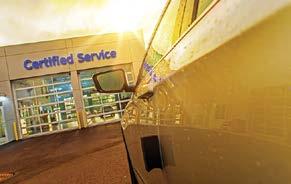
“If they just want to sell their body shop, the process is different because dealers are always being approached by other dealers that want to buy to bulk up in their market, but they’re not often being approached by people that want to buy their body shop,” Roberts explained.
However a sale takes place, offloading a body shop can be relief for a dealership owner looking to free up cash. And it’s a way for dealers to simplify operations and for MSOs to step up and do what they do best.
“The body shop business and the business of selling cars are very different, and they’re both getting a lot more complex,” Rich said. “So, splitting one’s focus, especially if the body shop, as involved as it is, is only a very small fraction of your annual sales — it’s just going to pull focus. Doubling down on what you do best and then getting a best-in-class operator to run the body shop side is an advantage.”

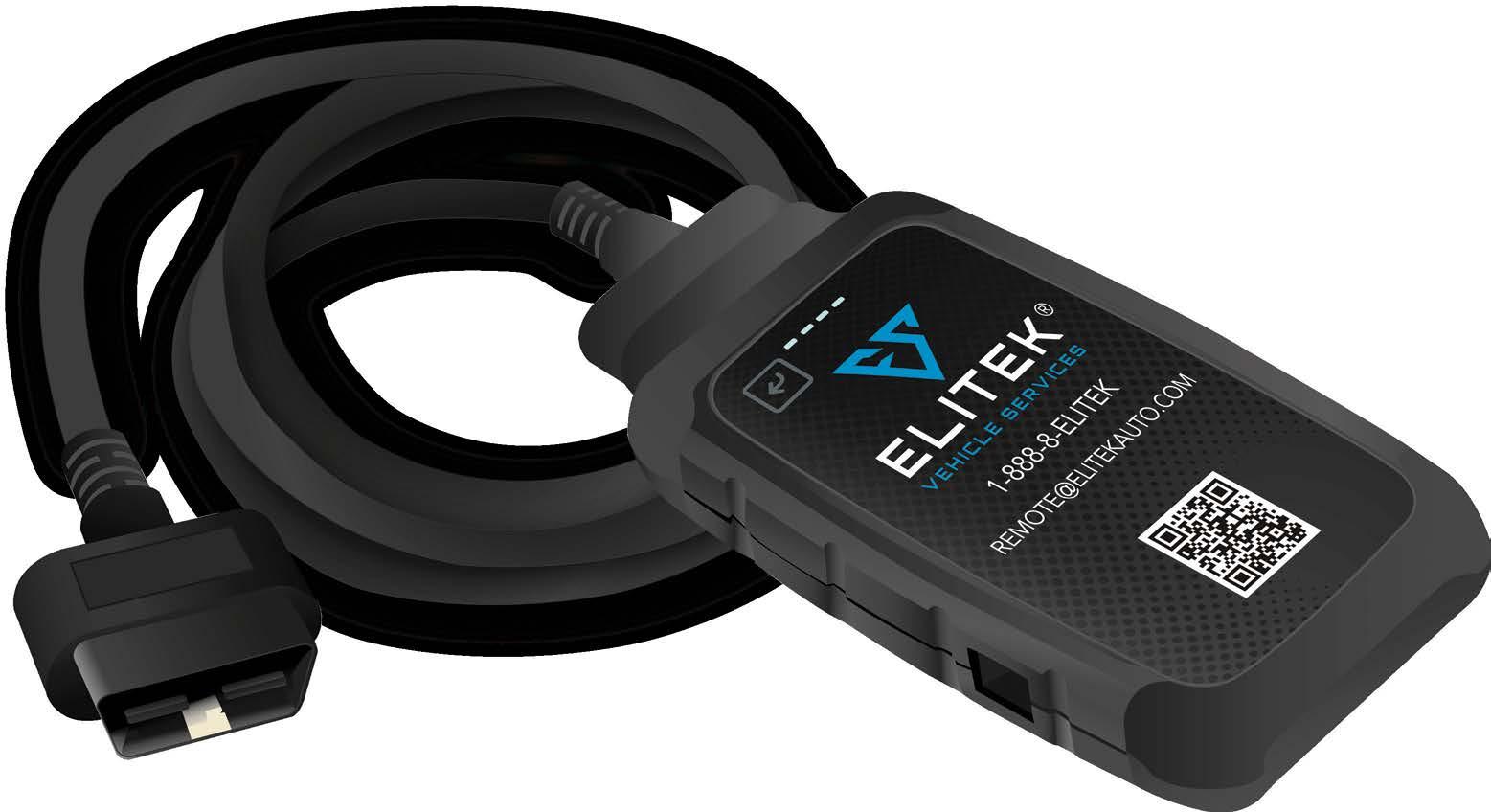

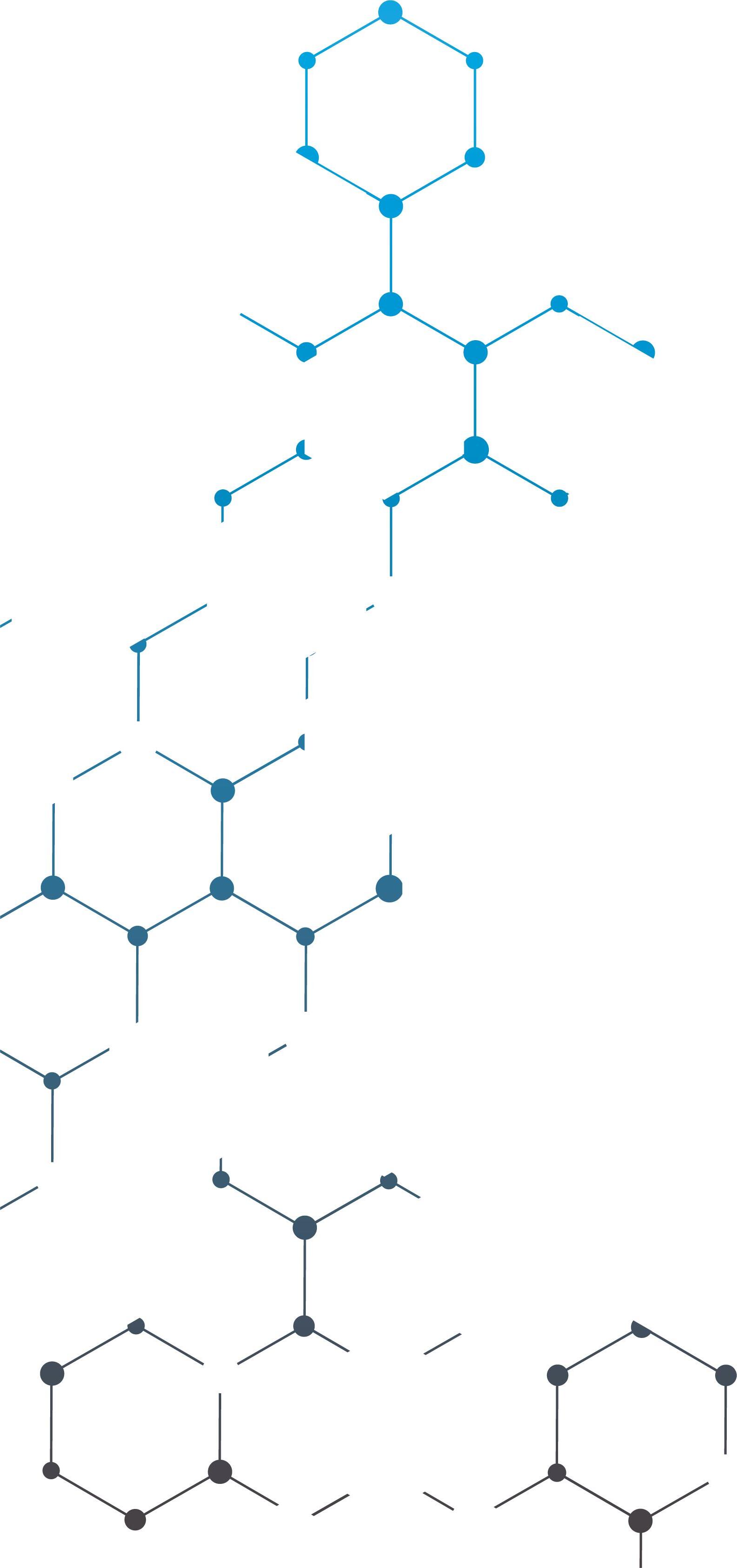

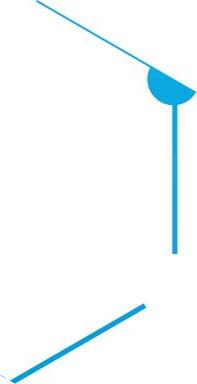



By Stacey Phillips Ronak Autobody News
Just over a year ago, the 3M Skills Development Center opened its doors in St. Paul, MN, to help educate and upskill the collision repair industry. Since the first class was held in June 2023, more than 55 events
3M is finding the classes are also attracting people from outside collision repair facilities. For example, students from different military bases have been interested in attending the courses.
“We’re fixing cars and they’re fixing planes, automobiles and tanks,” said Spah. “You might be next to

have taken place with more than 1,100 attendees from all experience levels. They include technicians, CEOs and managers, OEM partners, distributors, performance groups and the military.
Adam Spah , application engineering manager at 3M, said the 15,000-square-foot 3M Skills Development Center has been a source of training for students from across the country in 42 U.S. states, as well as Canada, with 80% of attendees from outside Minnesota and the surrounding states.
“It has been an exciting journey over the last 12 months,” said Spah. “The industry is very busy, but proactive business owners and shop managers are realizing the importance of investing in training technicians to increase the quality of work they put in each day, even though it’s a challenge to send a technician away for three or four days.”
The backbone of the Skills Development Center is multi-day hands-on training that focuses on the most updated body repair and paint preparation and refinishing methods. The body repair and paint classes are each held one week a month and offered to anyone who has an interest in taking them, whether that’s a college student, someone working out of their garage or technicians who have been part of the industry for just a few months or more than 30 years.
“We’re really focused on getting people through the classes to help upskill the industry,” said Spah.
around knowledge, skills and abilities so students learn what they need to repair vehicles properly. Within the open enrollment courses, 3M focuses on being product agnostic, hands-on, OEM-aligned and process-oriented.
“You would think that coming into a 3M facility, you’re just going to learn about 3M products, but we keep it very product agnostic, so you could potentially use various brands during the classes,” Spah explained.
With much of the industry training being conducted virtually during the pandemic, 3M has put a high emphasis on 90% of the learning at the facility being hands-on. Rather than looking at a screen and flipping through slides, Spah said students are doing the activities they are taught.
depending on that OEM,” said Spah. “There is also a focus on the science of ‘why’ something is done so students will retain the skills taught.”
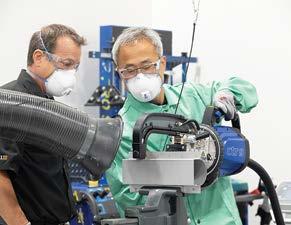
Technicians learn the proper OEMapproved techniques for squeeze type welding on various components of a repair.
a bodyman or painter in the class, but we’ll also have somebody from a military base in that same class learning together.”
When training classes aren’t being held, the center typically plans meetings and events with industry organizations, OEMs, vocational technical instructors, collision performance groups, MSOs, distributors and several others.
The Collision Repair Education Foundation (CREF) has brought in students to get a glimpse of the industry and encourage interest in working on vehicles.
“We explain to them that they can make really good money — even six figures — in this industry and have a good career,” said Spah. “Their eyes light up and they get excited.”
The 3M Skills Development Center works closely with OEMs to share information about what is taking place at the facility. Several auto manufacturers have visited over the past year.
“They want to learn what we’re teaching and how they can leverage our high level of education for their technician certification programs,” noted Spah. “We tell them how we dive deep into OEM repair manuals and find that it excites OEMs to know technicians are following the procedures.”
Since opening the center, Spah said there has been a solid increase in demand for open enrollment classes and site visits, which he predicts will continue to accelerate in 2024.
Training classes are centered
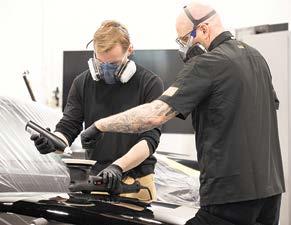
“Getting somebody out of their element and focusing on what they’re learning goes a long way,” he explained. “They are more likely to learn and retain the skills as well as the proper technique by doing the repair activities on a physical piece.”
To support the goal of handson training, the facility was built with a flexible layout that can be adjusted to fit the needs of those in attendance. In addition to a traditional classroom space, there is a hands-on work environment that features stations with electrical and air service. A 36-foot GFS XL paint booth is set up with three-stage filtration, which can accommodate 16 painters. There is also a dedicated welding area with stations equipped with fume extraction hoods.
Spah noted only about 40% of technicians look at repair manuals or procedures when they fix vehicles. As a result, 3M educators spend time teaching where to find the OEM procedures and how to fix a vehicle to its pre-collision condition.
“Trainers explain the standard operating procedures (SOPs) to follow to ensure the procedure is done the same way every time,
3M’s trainers are technical engineers with a strong collision repair background. Their backgrounds range from 20-40 years of collision experience, and include I-CAR certified instructors, paint company technical experts, and those with insurance experience. Some have authored several technical articles.
“We know vehicles are becoming more complex so we work closely with trainers to ensure the training is relevant to the cars being repaired,” said Spah.
The training programs complement those available through the online 3M Collision Repair Academy, the 3M Collision YouTube channel and virtual I-CAR Alliance training. In addition, live webinars are held at the facility where students can participate in a real-time Q&A.
Spah said they have noticed an uptick in skills as technicians leave and they’re becoming more efficient.
“They are reporting getting more repair orders through after going through our sessions,” he added.
After a course is completed, 3M asks for feedback from students to continually improve the program.
“The feedback we’ve had with the classes so far has been incredibly positive,” said Spah.
3M also welcomes feedback from the industry to ensure timely and relevant courses are offered. Looking ahead, potential classes include welding certification, front office training and repair planning. Spah said 3M is currently working toward a new curriculum with a new course set to debut soon. Look for new classes in early 2025.
For more information about courses offered through the 3M Skills Development Center, visit www.3M.com.

By Abby Andrews Autobody News
G&C Auto Body was founded in Santa Rosa, CA, in 1972 by Gene Crozat and Leo Gassell. Two satellite locations were opened in the 1990s. When the business was handed down to Crozat’s children, they decided to ramp up the growth. It now has 42 locations in 14 counties in Northern California.
Patrick Crozat, Gene’s son and the current COO of G&C Auto Body, appeared on The Collision Vision podcast, hosted by Cole Strandberg and driven by Autobody News, as part of its “Insurance Talk: Navigating Insurance and Repairs” series, to talk about how Direct Repair Program (DRP) agreements with insurance companies have fueled his family business’ explosive growth.
Crozat said DRPs have been a part of the collision repair industry since he got into it 22 years ago.
He described them as “contractual agreements where in turn for referrals from that insurance partner, you’re going to make concessions where you’re going to look out for the cost of the bill for them, and provide customer service.”
He said DRPs are valuable to insurance companies because they help foster a relationship with a body shop, which is the “face” of the repair process for the customer, while giving the insurance company some control over the customer’s experience.
“To ease the process between the claim and the body shop and the insurance company, I see a lot of benefits to the programs,” Crozat said.
DRPs have been “crucial” to G&C Auto Body’s growth, Crozat said. “I think it would be very, very hard for any body shop owner to grow to multiple locations without DRP relationships. I think it’s always been that way,” he added.
It’s difficult to run multiple stores in the same niche, Crozat said, whether it’s going after luxury brands or referrals from a local dealership.
Crozat said his dad was always an advocate for DRPs. “He wanted it to be a symbiotic relationship between the body shop and the insurance company, and that we’re both working towards taking care of our customer,” he said.
Pros and Cons of DRPs DRPs require a lot more administrative paperwork, and usually include a
discount on the shop’s stated labor rate.
“You are focusing on pleasing a second customer in a way,” Crozat said, referring to the insurance company.
There are often multiple body shops in an area with the same DRP, leading to competition for the insurance company’s referrals.
“I love competition. I think competition is always needed and it drives businesses to excellence,” Crozat said. “If someone owns the market and they don’t have to work hard for it, they don’t have to try and earn it every day. Human nature. I think people will get very complacent and they wouldn’t give the best job that they could do.”
Most of G&C’s DRP partners like to have sit-down meetings with management at least twice a year to review the business, Crozat said. A large MSO like G&C Auto Body then disseminates any information to all of its locations.
G&C has a DRP account manager, who has nine employees under them, each with a specialization. The company has a training website with every DRP’s individual processes, to serve as a reference for employees, and holds monthly training sessions on each DRP for any new hires or anyone who needs a refresher.
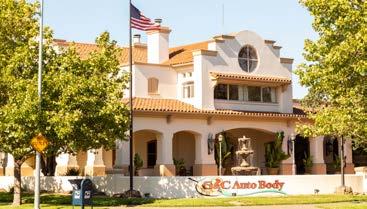
Strandberg asked what advice Crozat could give owners of smaller companies looking to build infrastructure like that.
“It all starts with one step,” Crozat said. “It can be overwhelming to look at the big picture.”
certified facilities, it is restricting other repairers from being able to get parts for those manufacturers. Crozat said that led G&C Auto Body to get Tesla certifications at 11 locations, since there are so many Teslas in the MSO’s California markets.
He said when going after an OEM’s certification, form strong relationships with the local dealerships who the vehicles for repair. But it is also key to advertise OEM certifications directly to consumers, in the event of personnel changes at the dealership.
G&C Auto Body updates a “scorecard” weekly showing each shop’s performance in the metrics important to each DRP agreement at that shop.
Technology has made it easier to track shops’ KPIs and other metrics, meaning insurance companies now make referrals based on performance. “That’s what’s going to drive profitability for the insurance company, and that’s going to drive better CSI and lower rental days,” he said.
That has helped G&C Auto Body excel, Crozat said, as it performs well in terms of cycle time and CSI, so insurance companies want to establish a DRP at any shop the company opens.
Strandberg asked if G&C’s DRPs are leading to it being pulled into some of the markets it is growing into
Crozat said there have been instances of an insurance company asking about G&C’s growth plans, and then encouraging entry into a particular market.
“In those conversations they’ll be like, ‘Hey, you know what? We could really use a shop in that area. So let’s start looking at it,’” he said.
Crozat said his company prefers to open locations within a certain distance of each other, to support each other and build out markets. Insurance companies can provide data on how many competitor shops already exist in a set radius.
“It would have been really scary back in the day to do something like that, if you didn’t know if you could get the insurance companies and have that business,” Crozat said.
Crozat’s wife, Tara Crozat, joined G&C Auto Body as a customer support representative. She was then promoted to a clerical lead and then a writer. Now she manages the service writer program, which includes building SOPs and maintaining the training website. She also implemented a training program for new hires interested in becoming estimators.
“She was the most thorough, detailed writer,” Crozat said. “I would look internally at who is a writer in your organization that is on top of everything — very detail-oriented, process-driven and organized.”
Crozat said he thinks DRP agreements will largely remain the same, but maybe with some tweaks.
“I don’t think I’ve seen too much evolution with insurance partner relationships over the years,” he said.
G&C Auto Body has at least six DRPs per facility; some longerserving locations have up to 13.
“We’ve always been an advocate of having every DRP that we can get in our locations, so that we’re not hoping that all of our business comes from one insurance company all the time,” Crozat said. “I would recommend going towards having more DRP partners and growing your business to be able to meet all their needs.”
As more OEMs demand their vehicles are repaired only at
If a store isn’t hitting certain metrics, its estimates are reviewed centrally until they meet the standard, Crozat said.
“It’s continuous coaching until people understand the program and how to win with that insurance contract,” he said.
Overcoming Challenges with DRPs There have been instances where an insurance company hasn’t wanted to pay for a part of the repair process.
“You’re not always going to get what you want with an insurance partner. And that’s what is -- it’s a partnership, and a partnership is everyone gives and takes,” Crozat said.
He recommended maintaining good communication with DRP partners, as it increases the likelihood they’ll work with a shop if a part of the agreement is harming their business.
“Be open and honest and share the numbers with them,” Crozat said. “Maybe they’ll make a concession with you and work with you on it.”
Crozat also recommended talking to them regularly about how the shop can “be a better partner” for the insurance company.
“How am I doing currently? Where could I improve? How can I earn more of your business? And how can I grow with you? See if you can chart that path with the insurance partner,” Crozat said.
“If that path isn’t there, go looking to add maybe more insurance partners, where then you have enough business to be able to open a second location, or to take the building over next door down the street,” he added.

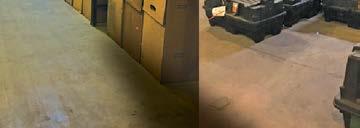
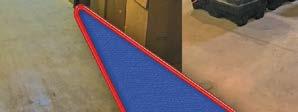

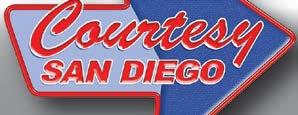













By Paul Hughes Autobody News
A push by individual states to regulate consumer information collected by businesses isn’t yet touching smaller body shops and collision centers, but efforts are gaining steam and there are great reasons for indie operators to know and prepare for local laws.
Act in 2018, and two years later, voters approved a proposition that expanded on CCPA. All regulations were effective by January 2023.
Other states are joining in.
Six states’ laws will have gone into effect this year and last, when Montana’s begins Oct. 1, according to nonprofit International Association of Privacy Professionals (IAPP). Nine
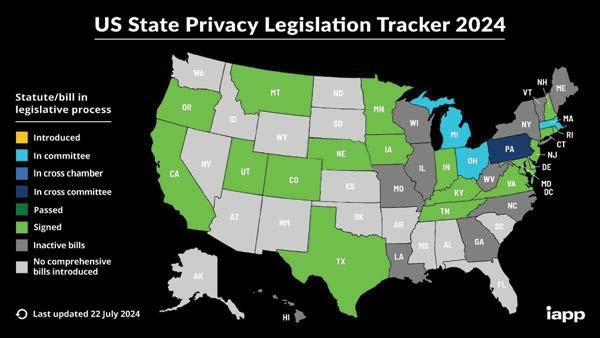
California was first with legislation often presented as “privacy protection” bills dealing with individuals’ data. The state passed the California Consumer Privacy
more are slated to hit in 2025 — six of these by January — with three more in January 2026. Four more states have active bills.
Only about one-fourth of states
haven’t tried to enact privacy legislation.
There is currently no national law, but that’s in the works as well.
“What’s really changing is the statelevel stuff,” said Brad Miller, head of legal at Utah-based ComplyAuto, which develops software to aid companies’ compliance with state and federal regulations.
The changes are more than just new legislation itself. Because it’s happening — or not — one-by-one, there are differences within and among various laws. Multiplied by dozens of states, it gets complicated.
Miller said “privacy” generally refers to “non-public personal information” — but not just the usual suspects. It involves obvious datapoints — insurance, driver licenses, Social Security numbers — but “anything personally identifiable” as well.
Some states let businesses correct a problem before they’re punished; some don’t.
“There are lots of layers to this, and all the laws are different,” Miller said.
A common approach seems to
be good for most shops: smallbusiness exemptions, which also differ state-to-state.
California’s law applies to businesses with more than $25 million in gross annual revenue or information on at least 100,000 residents or households.
Most independent body shops aren’t touched. MSOs and dealerships with shops likely are, and online privacy adds a whole ‘nother slew of considerations.
Roberto Baires owns Micro Tech Resources IT in Northern California. Among his clients are 100 or so body shops. More are concerned with the long-time CARFAX issue — past repairs not being in a vehicle history — than with the state’s stringent customer data privacy rules.
He stressed the limited information shops hold, noting, “customer data they see is in the estimating software, insurance companies, parts procurement, credit cards — they’re the ones managing it.”
“We have to keep some information for lifetime warranty repairs,” said Tiffany Silva, who
The Collision Industry Foundation (CIF) is a non-profit organization dedicated to providing support and assistance to collision repair professionals during times of crisis and hardship.
MISSION
Secure and distribute donations to individuals who have experienced significant losses due to natural disasters or other catastrophic events.

Tax-deductible donations needed to provide assistance: www.CollisionIndustryFoundation.org


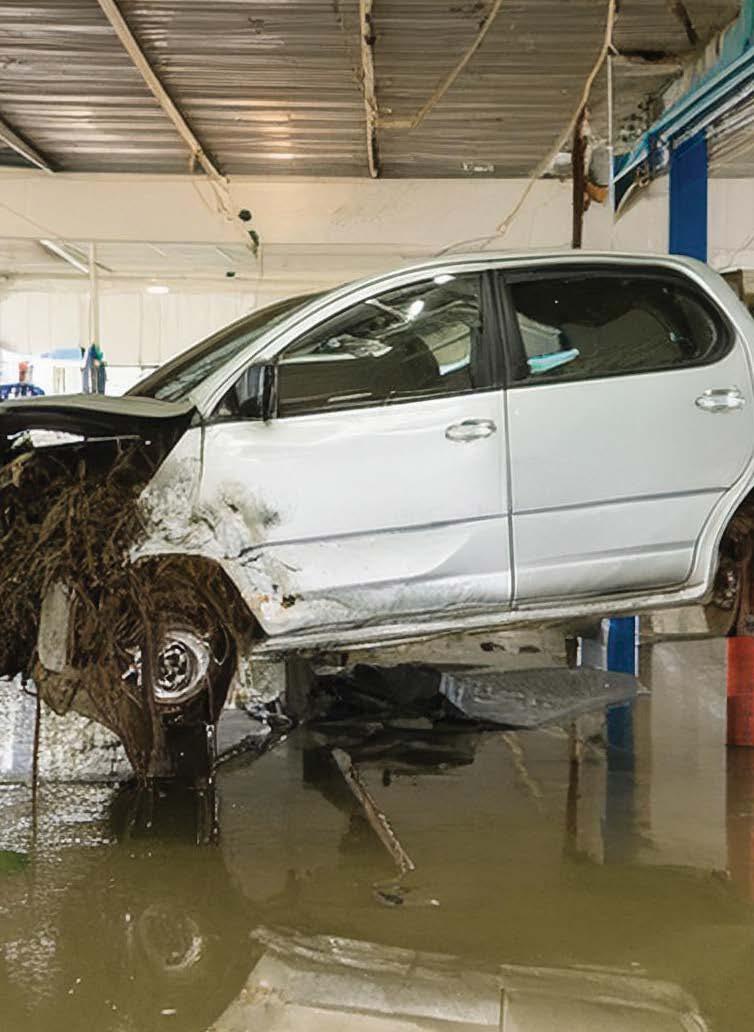

co-owns Accurate Auto Body in Richmond, CA. But for the most part, “there’s nothing for me to hold.”
“Shops hold some data, but more of it is physical,” Baires added.
“I’m ‘old-school,’” said Ken Pike , owner of Ken’s Custom Auto Body in Marysville, CA. He collects a name and phone number for estimating but doesn’t keep any customer data. “I charge their credit card and that’s it.”
He’s never had a customer ask about their information.
Silva said her shop has policies in place — where it can exist, what happens if an employee takes a photo of a vehicle — developed with an attorney and IT. “We have data and we protect the data, but it doesn’t come up.”
Miller said if the law applies to a shop, it overlaps with much standard practice, apart from the exemptions.
And Silva’s policy approach is a good step even for shops that don’t strictly “need” it.
With the industry’s increasing complexity, technological advances and customer privacy and data concerns, there are good reasons to be ready to act.
Acquisitions: If a shop might ever
be sold, it’s best to have operations as pristine as possible. Big buyers will have their own method, of course, but keeping data collection clean and in compliance is never bad.
Breaches: Shop relationships with insurance companies, suppliers and dealers, among others, are at risk for hacking, ransomware and other cybersecurity issues. And these attacks are only expected to increase.
Customers: A formal policy developed with the right people and communicated to anyone who walks in the door ups the body shop’s game. It speaks to professionalism, customer care and a strong work ethic.
A policy defines relationships with consumers, third parties and the state. It prevents problems and prepares a shop for service today, and tomorrow.
Miller said federal legislation frequently stalls over particulars; but if not inevitable, it’s also not impossible. And without one, the news is more complex than good, since states passing a different law every time doesn’t make compliance any easier.
“The auto body industry is having to deal with this,” he said. “And new regulations are coming.”

ProColor Collision opened its doors to a new facility in Lynwood, CA, promising enhanced service capabilities for both personal and commercial vehicles. Located strategically off the Long Beach exit of I-710, this center is poised to deliver superior collision repair solutions across the central Los Angeles Basin.
Leading the new ProColor Collision location is Qazi Asad, alongside Obeer Qazi and Saady Qazi
Asad, who has amassed more than 37 years of experience in the auto insurance and collision repair industry, began his management career with ProColor Collision in 2021. His tenure with the company, managing multiple locations owned by franchisee Ashraf “AJ” Jakvani, has provided him a deep insight into the operational excellence and growth opportunities within the network.
“As someone who has seen first-hand what ProColor Collision
offers and the success it brings, I am thrilled to launch the Lynwood location as the first among several planned centers,” Asad said. “The training and ongoing support from ProColor Collision are invaluable, and I am confident they will ensure our success here.”
The Lynwood facility is equipped with state-of-theart equipment, including a large paint booth capable of accommodating a wide range of vehicle sizes. The center is staffed by a team of highly experienced customer service representatives and technicians committed to delivering quality repairs.
“The Lynwood team is already demonstrating their commitment to our core values of customer service, quality repairs, and teamwork,” said Scott Bridges, senior vice president of Fix Network, ProColor Collision. “They are a vital part of our network’s growth in Southern California and nationwide.”
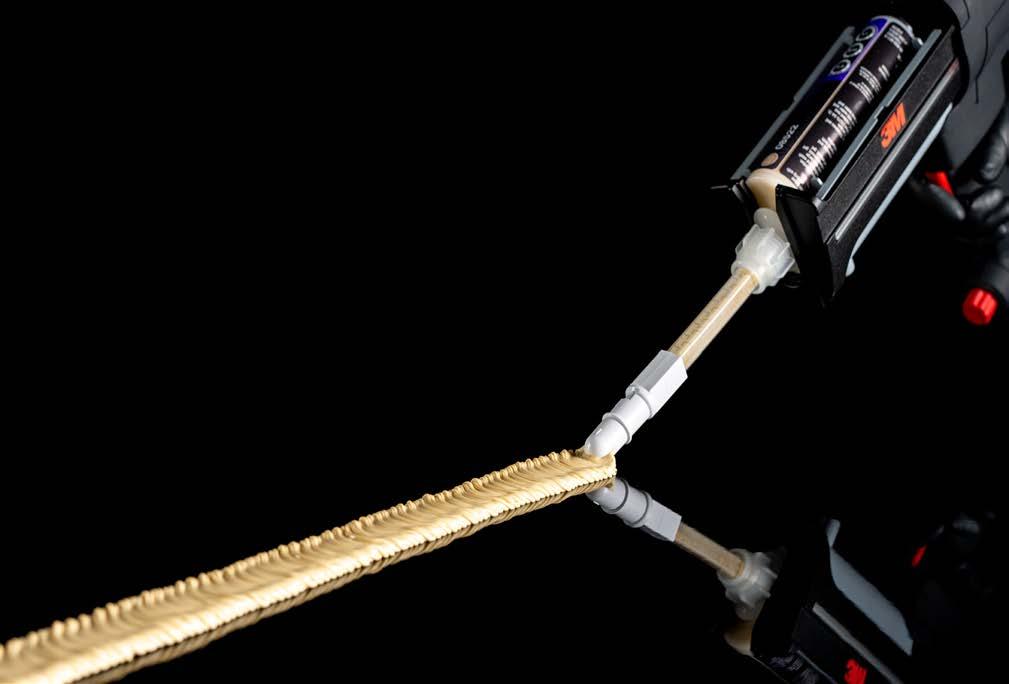
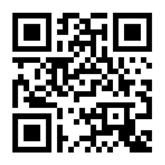
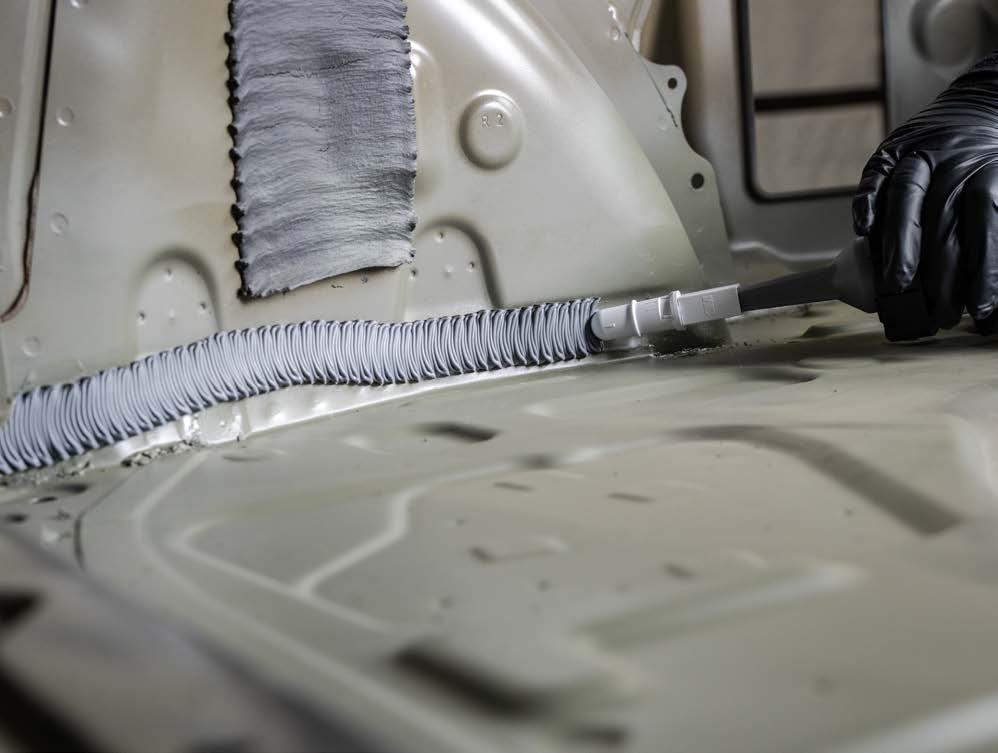
evaluation,” Gredinburg said.
‘Repair or Replace’ Considerations
Andrew Batenhorst of the CIC Estimating and Repair Planning Committee pointed to a series of factors that can play into case-bycase decisions during estimating related to repair versus replace of a damaged panel.
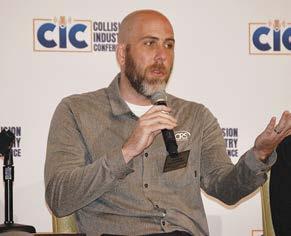
The first, he said, involves reviewing the automaker documentation to look for any guidelines, the types and mil thickness of material involved, limits on the use of heat, whether there are restrictions on access to replacement parts, and what types of tools or consumables would be needed for repair.
“That brings us to accessibility, basically factoring what panels are around where we’re working, how much room we have from the backside, are we going to have any issues with getting the tools onto the panel to do what we need to do to properly straighten it,” Batenhorst said. “If we’re inhibited from doing that, that could lead to a ‘replace’ decision instead.”
Another factor is whether there is damage in a crumple zone that would affect repairability.
“In many cases, that’s a dealbreaker automatically,” he said. “If a crumple zone is affected, going back to the OEM instructions, that may right away warrant the replacement.”
Similarly, an estimator needs to determine if body lines or contours on a damaged part can be recreated accurately.
“The invasiveness of the repair is also very important,” Batenhorst said. “Our approach is always to minimize the intrusiveness to the vehicle, and try to preserve as much of factory e-coating, and limit how drastically we need to go into the car.”
There are refinish considerations, such as how much factory corrosion protection needs to be protected or restored, maximizing the amount of factory paint as possible, and considering whether refinishing or blending of adjacent panels would be involved.
One final consideration is part availability.
“Obviously, there’s a financial or economic decision that gets factored into this,” Batenhorst said. “We are still dealing in many cases with part delays from all the turmoil that’s in the world currently. Sometimes that may cause you to have a different approach to that repair or replace decision that you’re trying to make.”

Despite the prevalence of onthe-spot evaluations required during estimating, many in the industry see resistance among some insurers to move away from strict use of the 50% formula for blending rather than looking at it based on the factors that vary from vehicle to vehicle.
Darrell Amberson of the LaMettry’s Collision chain in Minnesota said changes to such things as the blend formula often take too long to get implemented.
“As an industry, when we have some significant changes come along, we’re notoriously slow,” Amberson said. “It tends to take us years to really evolve to the point where the dust settles and common compensation methodologies are established as the norm.”
He said he’s discouraged by how few insurers have been open to moving away from the old blend formula.
“I get a lot of excuses that are not necessarily based on good logic,” Amberson said. “Right now we have one insurer that’s adjusted its normal pricing. We have some others that are on a case-by-case
basis. But a whole lot of them are just not doing anything.”
He said he agreed repairers need to focus on the variables impacting the blend procedure the paint companies point to, rather than just the outcome of the 2022 blend study by the Society of Collision Repair Specialists, despite the efforts to make the study “accurate, fair and reasonable.”
“I’ve seen many industry changes over the years where we start a conversation and often there’s not much flexibility on the two sides,” Amberson said. “And then after a lot of education and discussions, we tend to evolve and find some kind of common ground. But we don’t do that enough or quick enough.
“We need more discussions like this [at CIC]. We need more activity from the paint companies. We need more insurance companies to come in and really understand the situation and help us all evolve,” he continued. “Too many times there’s a kind of a bullheadedness, ‘We’re just not going to accept a change,’ and that’s not necessarily reasonable.”
Saying he was speaking for a shop owner who couldn’t attend CIC, Andy Tylka of TAG Auto Group said that shop owner sees part of the problem is that 50% of full refinish time is still the default for blending in the CCC estimating system.
“He feels that doesn’t open up the mentality that it is an on-thespot evaluation,” Tylka said. “He is continuing to get responses from insurance companies that assume that the default is the standard. They’re referencing it as the standard, the established formula of CCC. He asked me to [say] that he feels like that 50% needs to go away. It needs to be a forced adjustment on every profile. Because right now it [seems to be] implying that there’s a recommended formula.”
Dan Risley of CCC Intelligent Solutions is the current chair of CIC, and he addressed that comment later in the meeting.
“I think it’s really a continual education process because we have the slider in there for the [user] to choose whatever they feel is necessary as an on-thespot evaluation,” Risley said. “The language is in there referencing the fact that it’s an on-the-spot evaluation. But that said, I heard the point loud and clear, and I’ll make sure I’ll bring that back to our team.”
The ASE Education Foundation is actively calling on automotive industry professionals to volunteer as mentors in an effort to combat the ongoing shortage of qualified automotive service technicians. Mentorships are a critical tool in bridging the skills gap by giving students hands-on experience and industry connections.
Mentors from local businesses provide essential real-world training, enabling students to apply classroom knowledge in professional settings. These mentors work alongside schools and instructors, offering both guidance and feedback to students while helping place them in entrylevel positions within the automotive and transportation industries.
Industry members interested in becoming mentors are encouraged to contact their local ASE field manager, who serves as a liaison between students, schools, and ASE industry partners. A full list of ASE field managers and the areas they serve is available at www. aseeducationfoundation.org.
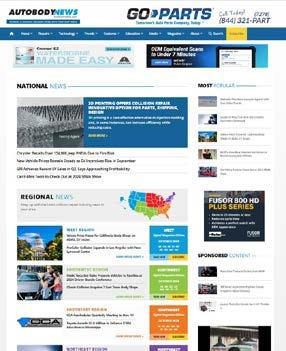
Axalta Irus Mix is the future for bodyshops. It is the fastest fully automated, completely hands-free mixing machine for the automotive refinish industry. It delivers highly accurate color, maximizing profitability and minimizing environmental impact to help bodyshops meet or exceed key business goals. Axalta Irus Mix, which works with Axalta’s innovative bottles made from 50%
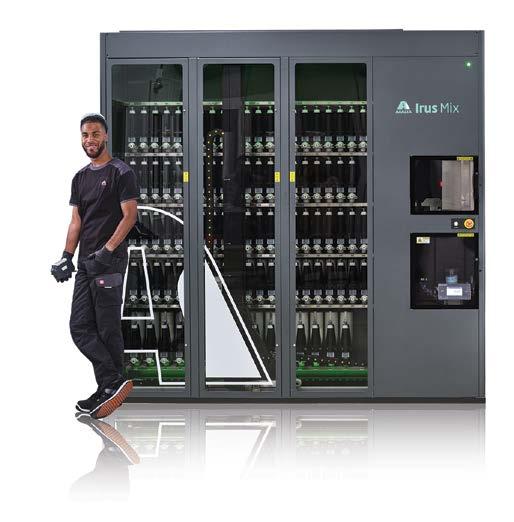
Axalta Irus Mix, with its patented technology, is the fastest fully automated mixing machine on the market - between 15% and 100% faster than anything else available. Refinish customers can save more than 60% on labor time with Axalta Irus Mix compared to manual mixing.
As cutting-edge as Axalta Irus Mix is, it is extremely easy to use. In fact, one of the benefits of Axalta Irus Mix is that a skilled refinisher doesn’t have to operate it; anyone can, freeing up skilled technicians to do other jobs while the paint is being mixed. It is straight-forward and intuitive so after only one training session someone will be very comfortable and confident using Axalta Irus Mix.
Axalta Irus Mix was designed to work with Axalta’s proven bottle system, so there is no need to refill or decant product into special bottles. Additionally, the bottles are fitted with precise dosing lids, delivering accurate color without waste. The computer-controlled dosing enables bodyshops to mix colors in small amounts resulting in less consumption and less waste. And for those tints that are not used frequently, there are four optimized bottle sizes that perfectly match tint popularity. For the bodyshop, this means less money tied up in stock.
Axalta’s bottle system is made from 50% recycled plastic, underscoring Axalta’s commitment to sustainability. Spies Hecker Permahyd Hi-TEC is available in bottles exclusively with Axalta Irus Mix.
Axalta Irus Mix is the final step of Axalta’s simple, three-step Axalta Irus digital color management process: Scan – Match – Mix.
First, refinishers scan the color with Axalta Irus Scan – the newly launched spectrophotometer. This new technology scientifically measures paint color on a vehicle to provide accurate color matches in both waterborne and solventborne basecoat technologies.
Second, match the color using Axalta Nimbus Color, a revolutionary platform that leverages proprietary algorithms to find, sort, and return accurate color formulas.
Then it’s time to mix with Axalta Irus Mix. Axalta Irus Mix enables its users to work more efficiently, profitably and sustainably. Everything about Axalta Irus Mix is technologically advanced. Simply launch the mixing process from a PC or tablet and put the empty mixing cup in Axalta Irus Mix. The mixing formula is wirelessly sent from Axalta Nimbus Color to Axalta Irus Mix and, with a simple push of a button, Axalta Irus Mix does the rest, allowing skilled refinishers to do other, more productive tasks. The mixing cup is removed when finished and ready to be attached to the spray gun. For added convenience, after dispensing, the machine carries out quick automatic nozzle cleaning procedures to avoid blockages.
Axalta Irus Mix is linked to a cloud-based monitoring system that continuously checks its status. Users also have access to Axalta sales, technical and color teams.
Troy Weaver, Senior Vice President, Global Refinish, says, “At Axalta, we strive to be at the forefront of innovation. We constantly look for ways to help our customers to do business better, to enable our customers to work as efficiently as possible and to maximize their profitability. Axalta Irus Mix has done just that – as we have seen with more than 100 machines in use globally. Axalta Irus Mix is ideal for bodyshops and multi-shop owners who are looking to increase efficiency, profitability and to do more jobs per day. It not only reduces bodyshops bottlenecks and frees up refinishers to carry out more profitable, highly-skilled tasks, but also it boosts bodyshops’ capacities, saving them money and helping them become more sustainable. We are delivering technology that truly automates color like never before.”
By John Yoswick Autobody News
George Arrants, vice president of the ASE Education Foundation, doesn’t think the collision industry’s technician shortage is based on a lack of interest in the trades by young people nor too few students entering collision repair training.
“The number of students in a program this year is higher than ever before,” said Arrants, whose organization evaluates and accredits entry-level automotive technology education programs against industry standards. “We see that most of our programs are at capacity or higher. But then for some reason, once we get them in the programs, we think our job is done.”
The problem, he said, is the followthrough during those students’ time in the program and into their first job in the industry. Arrants estimates 1 in 5 graduates of automotive training programs never enter the industry, and about an equal number leave the industry within two years.
I-CAR research has produced even more stark findings: Only 15% of students who enter the industry stay for more than 18 months.
“We’re eating our young,” Arrants said. “These people are interested in our industry. But we bring them into our shops and expect them to be productive. There’s not one of us who was productive our first day on the job. There’s no on-boarding, there’s no mentoring.”
Waiting to employ students only once they finish a program is also an issue, he said.
“If you don’t hire them until after they graduate, the only thing they know is the program they were in,” Arrants said. “That means when they come to you, it’s a whole new experience. And that’s why we lose a lot of them. But we have found that for those students who work in your shops while they’re in school, it’s a more seamless transition. And they stay for decades.”
He said there’s another sad truth about those entry-level technicians leaving the collision industry: “They’re not leaving skilled trades,” he said. “They’re staying in the skilled trades. They’re just not staying with us.”
What else can shops and vendors in the industry do to help collision repair training programs and the students they are training to help stem the flow of potential technicians out of the industry?
Supporting the Collision Repair Education Foundation (CREF) is one good step. CREF provided $136,000 in scholarships to collision repair students last year, and another $678,000 in grants to 110 schools to benefit their collision repair training program. CREF also donated more than $18 million in product donations to the programs, including 78 current model Audi and Volkswagen vehicles to schools.
for more participants in their program advisory committees.
“One of instructors’ biggest pet peeves is an employer, who they’ve never heard from or seen, coming in at the end of the spring semester and saying, ‘I want your best students,’” Eckenrode said. “The instructors look at them thinking, ‘Where have you been for the past school year? I’m going to help those employers and local businesses that
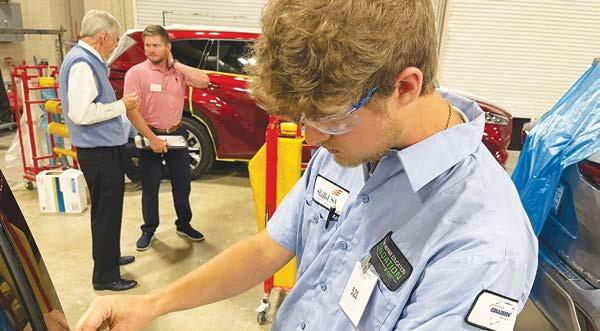
Brandon Eckenrode, executive director of CREF, said any organization within the industry can sponsor uniforms for students at their local school.
“We’ve heard from instructors that when the students have brand new uniforms rather than just wearing street clothes, that has made the biggest impact of all that we’ve given out,” Eckenrode said. “It’s a way for you to connect with the students as it’s you, the sponsoring company, that’s helping distribute the uniforms, and talking to these students, helping make sure that these students look professional while they’re learning. The sponsoring company’s logo is on the front of all the uniforms, so it’s almost a walking billboard for your company.”
CREF can also assist with parts donations.
“Instructors have told us their No. 1 need is donated scrap and spare parts,” Eckenrode said. “We literally have instructors rummaging through the Dumpsters of body shops and dealerships looking for spare parts that they can bring back for their students to work on. I think we can agree that with the number of damaged and slightly used parts that are taken off of customers’ cars, there’s absolutely no reason why instructors should be rummaging through the trash to get these parts.”
He said most schools are looking
different companies that are waiting for them to graduate, and it’s that that motivates them to stay in the collision industry and that program,’” Eckenrode said. “They walk out of those events with a stack of business cards. Some of them walk out with multiple job offers.”
For more information about working with CREF to help a school’s collision repair program, check the foundation’s website.
Shops can also help relieve the industry’s technician shortage by training new entry-level workers inhouse. I-CAR is now making its new I-CAR Academy Program available to collision repair facilities, after launching it for schools earlier this year. The I-CAR Academy program is an early career program to educate and recognize new technicians starting a career in the industry.
I-CAR’s Jeff Peevy said the program is in part a response to what he heard from shops about entry-level technicians they were seeing from school collision repair training programs.
are committed throughout the entire year, not just coming in and trying to cherry pick those best students when they are graduating.’”
Eckenrode noted that in-kind donations made up the bulk of the assistance the foundation provided to schools last year.
“Tools, equipment, supplies, parts, everything that your companies may have, we can find homes for those in local schools,” Eckenrode said. “There are some schools that have 150 students and their total program budget is $3,000, and that is the state of what they have. So it’s an opportunity for us to make sure that they have the items they need to provide a quality technical education.”
He said CREF also continues to hold career fairs around the country.
“These help showcase to these students all the different companies that are interested in them, Eckenrode said. “And what’s great about these events is it’s not just repair facilities. It’s tool and equipment companies, paint vendors, insurance, rental car. Everybody is there to showcase, ‘Hey, we need you.’
“We’ve heard from instructors who say, ‘I’ve had students who are kind of trying out collision repair and they’re not quite sure if they like it, but they come to these career fair events, they see all the
“There was a lot of feedback saying a young person coming out of a school had experienced an inch-deep and a mile-wide training experience,” Peevy said. “And when they were put into the shop environment, they really did not have a high level of proficiency in anything. They had experienced a lot of things, but they could not be put on something to do without having a lot of oversight.”
The new program focuses instead on “what would you have an entrylevel technician do that would make them valuable to your operation from day one, what would make them feel valued from day one,” he said.
I-CAR Academy’s curriculum covers collision repair fundamentals such as safety and tool skills, plastic repair, small dent repair, disassembly and reassembly, and supports a shop using it by including resources on selecting and training a mentor. A badging system recognizes a new technician’s progress.
“Our industry is in dire need of technicians,” I-CAR CEO John Van Alstyne said. “For some, the right starting point is a school, while others excel beginning their career in a shop. Regardless of where a technician enters the industry, they can count on I-CAR Academy to give them a solid and relevant foundation from which to build their future.”


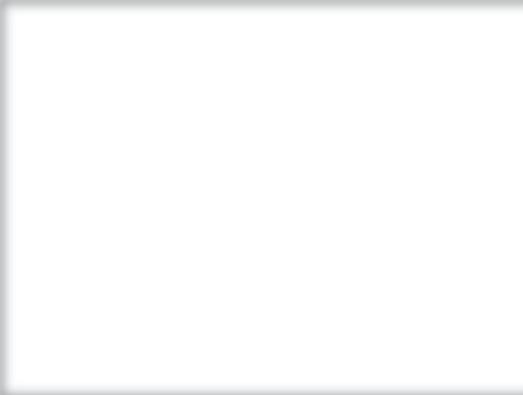



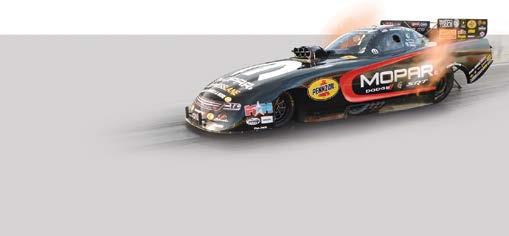

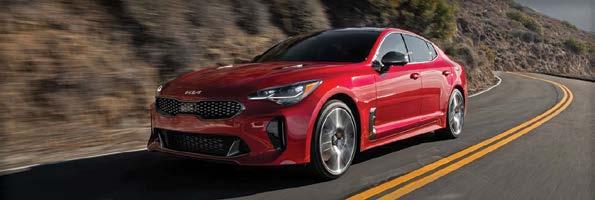



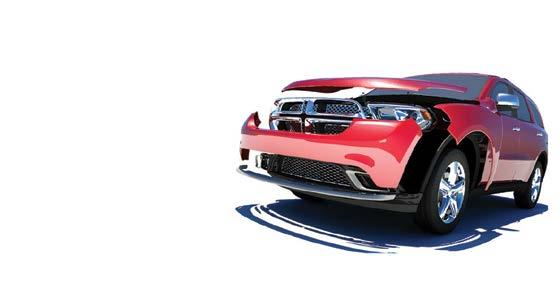





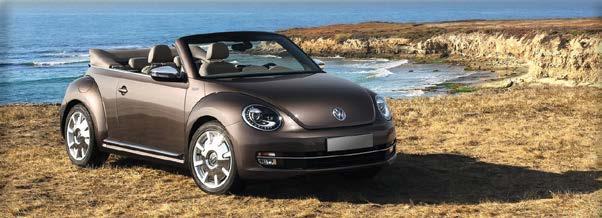
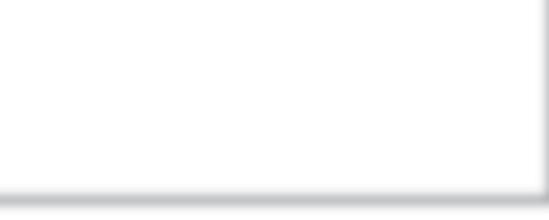






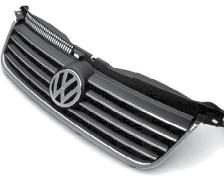


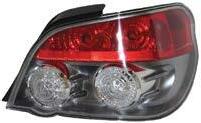
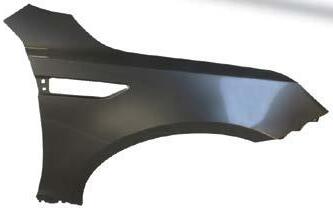




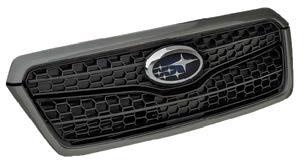




remanufactured, and eventually recycled,” according to a state site on legislation.
The bill passed 62-5 in the Assembly and 33-1 in the Senate, on the last day of the session.
Despite the big majorities — with 14 Republicans absent between the two final votes — Newsom vetoed SB 615 the day before his Sept. 30 deadline.
In his veto message to the Senate on SB 615, Newsom said he agreed with the bill’s intent, but he said the Department of Toxic Substances Control (DTSC), the agency tasked with writing its regulations, would experience “a significant burden...to implement the policy.”
Newsom said “market-based solutions” create jobs, and suggested supporters “explore if a producer responsibility organization” might be a better choice “in sharing the administrative burden required by this policy.”
The bill returns to the California Senate to consider overturning Newsom’s veto.
If it does override, the DTSC by July 1, 2028, will write regs to “interpret
and implement the law,” said Jack Molodanof, a lawyer and lobbyist who works with CAA.
“We were actively engaged in this,” he said.
EV makers are bringing more midpriced models to market and buyers are warming to them as an option. More EVs, more batteries; more batteries, more recycling. Body shops and collision centers will participate in this, if the bill becomes law.
“It’s important consumers are protected and that it’s fair to the industry,” Molodanof said, as regulations take shape via agency action and public comment. “It’s big and complicated; this is new territory.”
Two bills aimed to enact laws involving Advanced Driver-Assistance Systems (ADAS).
The first, SB 1313, prohibits equipping vehicles with devices “designed for, marketed for, or being used for, neutralizing, disabling, or otherwise interfering with a driver monitoring system,” and prohibits people “from using, buying, possessing, manufacturing, selling, advertising for sale, or otherwise distributing” such a device.
SB 1313 passed both houses unanimously, and Newsom signed it
Sept. 25.
The second bill, SB 961, would require most vehicles, beginning with 2030 models, to have equipment that can discern speed limits, and notify drivers if they drive 10 miles over it. Exclusions for motorcycles, large trucks, emergency vehicles and cars lacking GPS were included, and carmakers could have offered alternative ways of signaling drivers.
“[SB 961] was amended several times,” Molodanof said. “SEMA was actively engaged on this” as well. In March, SEMA released a study showing voter opposition to the bill. Its SEMA Action Network also issued a “legislative alert” to marshal opposition. The state Chamber of Commerce also opposed the bill.
SB 961 passed 47-17 in the Assembly and 26-9 in the Senate, with 20 legislators — 18 of which were Democrats — marked absent.
Newsom vetoed the legislation, citing federal vehicle safety standards and noting the National Highway Traffic Safety Administration is considering rules for such new equipment, according to the Associated Press.
Body shops would have seen repairs and calibration for the new “notification” equipment, had the law gone into effect. As it is, and based on
SB 1313, they’ll still need to deal with vehicles potentially arriving in-shop with ADAS-disabling equipment installed.
The state Senate could still consider an override of this veto as well.
“We follow [ADAS] bills,” Molodanof said. “There’s going to be more and more of these.”
Three bills that would have expanded technical education in the state didn’t get out of committee.
AB 377 would have boosted annual career technical education funding 50% to $450 million, according to a CAA summary note.
AB 2273 would have established a paid internship program for high school students pursuing skilled labor jobs, with an initial $12 million appropriation.
AB 1927 would have expanded a state grant program for teachers to include people planning to work at least four years as technical education instructors. Molodanof said budget woes prevented the allocation of new money to programs. California in June enacted a budget for the coming year to close a $47 billion shortfall.
Oscar Moreno, who owns Integrity Auto Collision Center in Fairfield, CA,
Achieve unmatched results with less product and less time. Plus, ® 3D ACA contains no fillers, vir tually eliminating comebacks from reoccurring swirl
Tr y the 3D ACA system today.
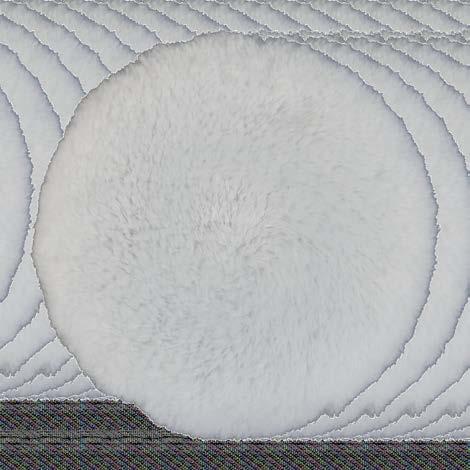
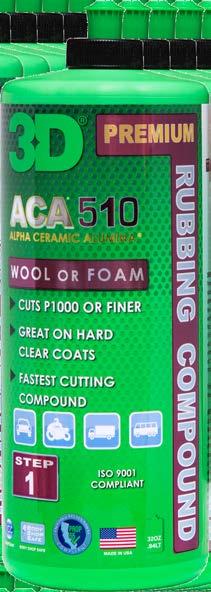
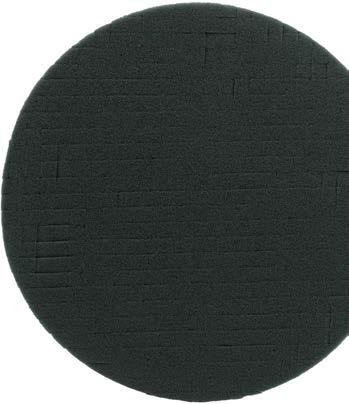
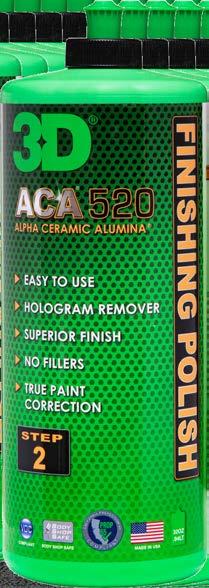
employs a B-tech who graduated from the program at Contra Costa College in San Pablo. “It’s a good opportunity for body shops to have [these techs], and we’d like to have more,” he said.
Two bills — one each in the Assembly (AB 2288) and Senate (SB 92) — already signed by Newsom are aimed at addressing labor issues that have grown since 2004’s Private Attorneys General Act (PAGA).
Since then, employee lawsuits against businesses have increased. CAA’s summary said “bills address major problems in the law while protecting workers and limiting shakedown lawsuits that hurt employers.”
The new law requires filing a complaint with state agencies first, before civil actions under PAGA can begin. If an agency investigates and finds citable issues, employers will have an opportunity to correct the problems.
Both bills passed unanimously and Newsom signed legislation into law July 1.
“This was a win for businesses in California,” Molodanof said.
Also a win, he added, was the defeat of SB 1116, which would have provided unemployment benefits to workers who go on strike. Body shops
aren’t union shops but increases in unemployment benefits, Molodanof noted, “increases unemployment insurance costs for all employers.”
The bill passed in the Senate but failed in an Assembly committee.
SB 301 would have offered up to a $4,000 rebate for converting a gasoline-powered vehicle to a zeroemission one. It passed both houses unanimously but was vetoed by the governor June 14.
SEMA issued a press release the next day decrying the veto, given the existence of other, current state efforts, and saying the program would have created 149,000 new jobs and $40 billion in positive economic impact.
“SEMA is profoundly disappointed by Governor Newsom’s lack of foresight in vetoing SB 301,” SEMA CEO Mike Spagnola said in the release.
California is also requiring all new vehicles in the state to be zeroemission by 2035, with staged milestones of roughly one-third by 2026 and two-thirds by 2030.
SB 903 would have banned products containing perfluoroalkyl and polyfluoroalkyl substances (PFAS). PFAS are used in many
automotive products, including gaskets, shock absorbers and bushings, CAA said. The bill didn’t get out of committee.
“This was important and there was a lot of opposition,” Molodanof said. “I’m not sure what they’d have made products out of” if PFAS were prohibited.
Catalytic converters came up a couple times.
The final results included defining vehicle theft crimes to include parts or components, such as the converters. This bill, AB 2536, was passed and signed into law.
Failing, however, was AB 2188, which CAA had backed, and which would have let vehicle owners who have a catalytic converter stolen replace it with an EPA-compliant one, rather than a California Air Resources Board-compliant model.
Also failing were bills exempting 2024 model and later heavy-duty trucks from state emission standards if they meet federal ones; requiring disclosure of tobacco residue in used vehicles when sold and transferred; bringing the DMV and other agencies into “enforcement and compliance activity related to unlicensed and unregulated automobile dismantling” according to a CAA summary; and requiring businesses handling
hazardous materials to report the release or possible release of the material to state agencies.
“Not just legislation but also regulation” affects body shops and collision centers, Molodanof said. BAR is currently working in several areas touching the industry, according to CAA.
Citations and Fines: BAR “has increased the number of citations and fines issued to California automotive repair dealers,” CAA said. Appeals conferences, conducted remotely before a panel of a public member, a BAR rep and an industry rep, are ongoing. Successful appeals remove the citation from the BAR website.
Vehicle Safety Systems Inspection: Licensing of VSSI stations and techs began in March; inspections are underway since July. The previous brake and lamp inspection program ended Sept. 27, and the DMV now no longer accepts these certificates of compliance for registrations. BAR will collect and refund unused certificates. VSSI information is available on the BAR website.
Storage Fees: BAR is proposing l CONTINUED ON PAGE 23
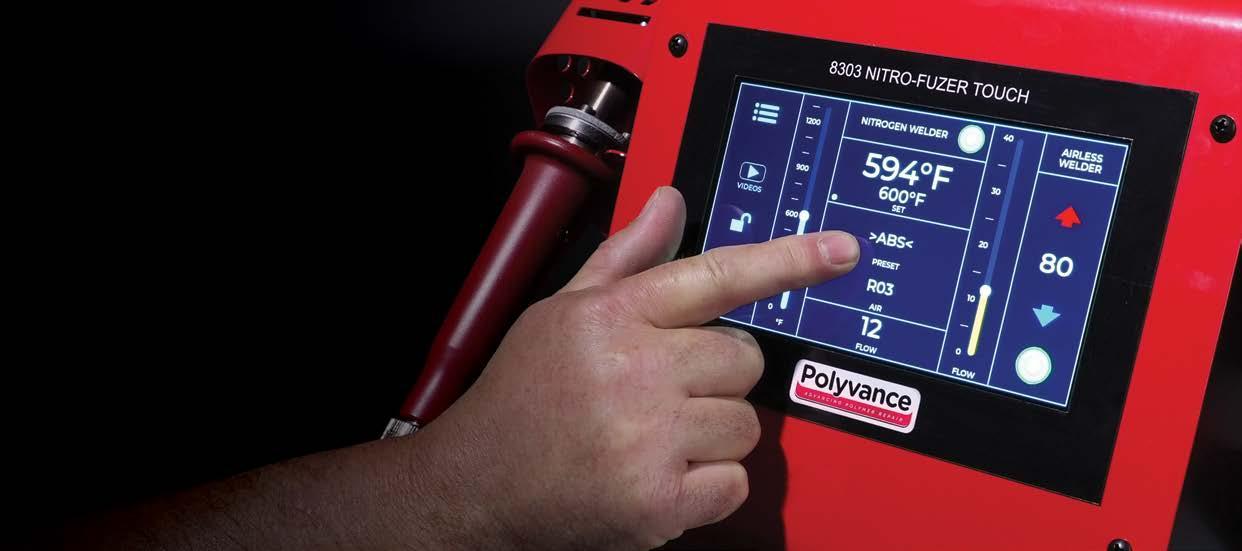
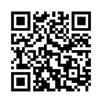
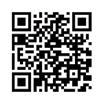
By Paul Hughes Autobody News
Sometimes a “nice problem to have” is not quite true.
Two Steve Halls — father and son — and son and brother Shaun Hall sold their four-unit MSO, Steve’s Auto Body, in northeastern Arkansas to consolidator Joe Hudson’s Collision Centers in September 2023.
The four shops were in Marion, Jonesboro, Paragould and Searcy. In a way, they ended up like eight shops, and, in an unhelpful way, like just one.
Steve Hall Sr. had the first one in Marion by 1999. The others came in five years, between 2010 and 2015. At its sale, the four sites —
“that was our first mess up,” Hall Jr said; a near-monopoly in the market — “the only MSO … we had a great reputation;” inexperienced workforce — “the talent we had, had never done anything that large;” and exponential expense growth — “keeping up with ADAS … changing metals … I-CAR [training.]”
Grouping expenses is a big no-no, but the Halls are by no means unique in the industry here. And while a near-monopoly sounds like a nice problem to have, market dominance bred some carelessness. The busy business has to keep serving the customer; paperwork didn’t get done.
Expense growth is a given, and employment issues — changes wrought by COVID like finding willing techs, then having them miss time for training on new systems -also hit ops.
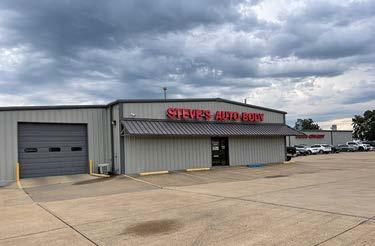
The shops had no fulltime bookkeeper.
Boiled down: scant attention for financials. “We were just focused on getting things done.”
“It was chaotic,” Hall Jr. said. “We’d created a beast.”
center, taxes — make you want to say, “Are you sure?”
She’s sure.
Hall added to the list: “assets, sales information, land, leases, list of employees and their certifications.”
“This is something all shop owners should do,” Gay said.
Employment issues crop up, again, too.
“Estimator, parts person, whoever closes the ticket, the actual person doing the books, coding it all properly,” Gay said. “You need people who embrace it.”
She said ideally collision centers do this as they go; often they don’t. “There’s always lug nuts that don’t get tightened.”
Steve’s Auto Body created a whole new set of books for each shop, and filed amended tax returns as numbers clarified.
“There was a lot of unwinding to rewind,” Gay said.
“I didn’t want to sell to an MSO that wasn’t like us,” Steve Hall Jr. said. “Joe Hudson — the quality, good reputation, they take care of their employees; they‘re not coming in to just completely change everything.”
Joe Hudson’s has more than 230 locations. This month it entered Ohio, its 17th state, and most recently bought shops in Georgia and Mississippi.
It had 194 shops in 15 states when it bought the Halls’ MSO, which was its entrance into Arkansas. JHCC CEO Brant Wilson said in a press release on the deal the consolidator would be “developing a successful Arkansas market with these new locations.”
Gay called buying a dominant mini-MSO “a platform opportunity for a consolidator.”
Joe Hudson’s website this month lists 12 Arkansas collision shops in its system.
The Halls have seen more health issues, and Hall Jr. said they can spend more time together.
And work slower, doing real estate development. The family kept the land the shops sit on, and lease it to the new owner. Hall Jr. called the lease “awesome.”
Five acres near one of the shops remain in the family; the Halls plan to develop a self-storage facility. They work with the accountant who rebuilt the shops’ financials.
“She’s very black and white,” Hall Jr. said.
regularly outgrowing original spaces; renovated; and adding land, buildings and shop space — totaled some 120,000 square feet, 55 employees and north of $13 million in annual sales.
The brothers joined as growth began.
Opening and expanding multiple shops fast, usually doubling space, means four were like eight. Combining numbers across the four means you could see them as one operation.
Which became a problem.
“We just didn’t know,” Steve Hall Jr. said.
The business was growing, new hires coming onboard, technology spawned new equipment, there were loans for land and building buys —and money was coming in.
The MSO saw 15% gross sales growth annually for the five years from 2018 leading to the exit, Hall Jr. said.
“We were growing so rapidly and didn’t realize it had gotten out of control until we got ready to sell.”
There were four problems: grouping expenses for the shops —
Much work was done in the family: dad on a construction project, Shaun running a store.
“Things got away from us a bit.”
The MSO’s metrics were good, the family said, and made shops an acquisition target, with the usual nosing about by big buyers, including Joe Hudson’s, who’d been calling for about a year, and Caliber Holdings LLC.
Before they saw the problem, the family had decided to sell.
“My dad’s health started turning [and] COVID left a bad taste” on labor, Hall Jr. said. “Big MSOs were buying up shops; we felt it was a good time.”
Consultant Laura Gay of Floridabased Consolidation Coach stepped in.
“It’s hard to keep the books clean, if you’re running a fast-paced, highproduction collision shop,” she said.
“To take it to market,” material has to be structured for the gimleteyed, green eyeshade guys. Gay called the process “forensic financial analysis.”
The list of financial must-haves — multiple income and cost-of-goods accounts, separate labor costing for each area, profitability by profit







monthly to about 2,500 service professionals. It includes a “Collision Corner” column, written by Strom.
Once a quarter, NWACA hosts a Collision Roundtable, a Zoom meeting for collision members and local non-members who want to get a taste of how joining the alliance could benefit them.
Most recently, the Sept. 10 virtual event featured Jim Anderson from Real Shop Coaching who spoke about outside-the-box ideas for marketing a collision repair shop.
Next up, on Nov. 12, Steve Dawson of Hunter Engineering will speak about collision repair alignments. Strom said Dawson led a class on alignments at NWACA’s Collision Training Expo earlier this year.
“The feedback we got on that class was awesome,” Strom said.
On Jan. 14, Aaron Schulenberg of the Society of Collision Repair Specialists (SCRS) will present on the blend study conducted by SCRS in 2022.
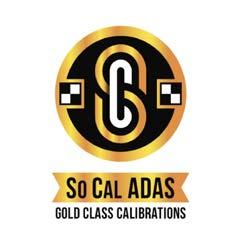

PAVE
NWACA is one of four partner organizations collaborating to put on PAVE (Professional Automotive Virtual Education), an annual twoday, virtual-only training event which will be held Feb. 21-22, 2025.
PAVE was born during the COVID pandemic, when in-person events could not be held. Next year’s will be the fifth edition.
“There’s still a need for virtual training because there’s some people who are not in an area where training is readily accessible,” Wolslegel said. “They don’t have to worry about the venue and trying to travel.”
In 2025, PAVE will feature more than 30 sessions, several of which will be geared toward collision repair.
In addition to being able to attend the sessions live, registrants will have 30 days of on-demand access following the event.
Learn more at www.pavetraining. com.
NWACA held its first CTE in 2023. The single-day inaugural event was so well-received, the alliance expanded it to two days this year.
In 2025, the third annual CTE will be held May 2-3 at Clover Park Technical College in Lakewood, WA.
CTE features hands-on training, panel discussions and a trade show.
The agenda for 2025 is far from finalized, but Strom said the event will feature more trainers, some of whom reached out to NWACA to offer to participate. There are also talks of breaking down some of the three-hour training sessions into two 90-minute classes on two different aspects of the repair process.
“We’re not sure how that’s going to work out, but we’re thinking about how to change things up, so people have more choice,” Strom said.
More information about the 2025 CTE agenda will be available closer to the show date.
To learn more about NWACA and how to become a member, or to register for events or the email newsletter, visit www.nwautocare. org.
ASE announced a partnership with Convertible AI to establish artificial intelligence accreditation criteria in the automotive diagnosis and repair sector, a significant step towards integrating advanced AI tools into everyday automotive service practices.
This partnership will focus on three main objectives: assessing AI performance and fairness, examining AI transparency and accountability, and defining ethical guidelines and best practices. The first area involves rigorous testing of AI systems across various automotive scenarios to ensure accuracy and mitigate bias. The second will tackle the transparency of AI-driven diagnostics, aiming to make AI decision processes clear and auditable for technicians. Lastly, the initiative will look at setting ethical standards for AI in automotive services, focusing on privacy, data governance, and regulatory compliance.
With ASE’s 52-year history of promoting excellence through certification and Convertible AI’s cutting-edge technological prowess, this partnership is poised to shape the future of automotive services.
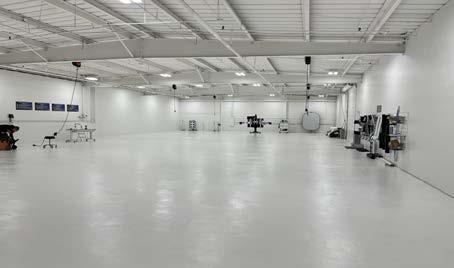



by Abby Andrews Autobody News
CIECA recently hosted a webinar, “Why the Collision Industry Should Be Interested in V2X,” to dip into the emerging world of Vehicle to Everything (V2X) technology and how it could affect road safety, traffic management and even collision repair.
The presentation was led by Arif Rafiq , a transportation industry expert who advises governments on systems developed to manage roads, highways and public transportation infrastructure.
Rafiq spoke about why V2X technology will be critical to the future of mobility, including how it could be applied to collision repair.
Rafiq said V2X is communication between a vehicle — which could be a car, truck or even a burrito delivery robot — and everything around it — other vehicles and the local transportation infrastructure. C-V2X is when the vehicle receives and sends data through the cellular network.
He opened with an imagined scenario: two autonomous cars driving side by side on a road,
approaching an intersection.
Currently, if those cars are built by different manufacturers, “they may have different perspectives on what actually is at that intersection” based on data collected by other cars made by their respective manufacturers. One might think it’s a regular intersection, but the
different perspectives of that same intersection,” Rafiq said. “What’s going to happen when they both reach that intersection? That depends on the intelligence built into the cars. The risk to the occupants has now gone up.”
Rafiq said that scenario is one he is working to avoid in the

other could be more up-to-date and know it’s now a roundabout with an active work zone.
“Now these two vehicles have
future, as autonomous vehicles become more common.
He shared a screenshot of what an autonomous car “sees” for data
collection, not navigation, which it sends “home” to be used to build an HD map that all the same manufacturers’ cars then use for navigation.
“A tremendous amount of data needs to be stored to track every road and intersection in the world,” Rafiq said.
There are three options.
First, all of that data could be stored directly in the vehicle, but it quickly becomes outdated.
Second, the car can sense and interpret all data in real time, similar to an image Rafiq shared from a traffic camera identifying cars, large trucks and people in different colored boxes. But that technology is not perfect and doesn’t always recognize everything correctly.
Third, the data could be delivered to the vehicle as needed.
Rafiq said he thinks the third option “has a lot of merit.” He referred to the earlier example of the two autonomous cars approaching an intersection that recently became a roundabout. If the local government supplied that information on a platform open to the public, it could theoretically be accessible

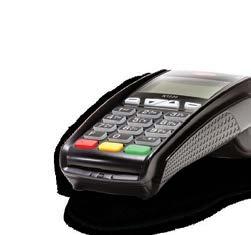
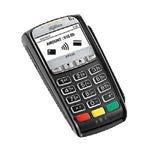

to connected vehicles as well.
“If [vehicles] are able to read a precise and up-to-date ‘digital twin’ of the transportation infrastructure, then that puts all of us in a better state,” Rafiq said. “No matter which manufacturer is reading this data, it’s authoritative, reliable and up to date.”
Rafiq said he started helping governments in Southeast Asia and later Canada create these “digital twins” for road safety and public transportation management and planning purposes.
A webinar viewer asked if Rafiq has confidence governments would provide that information in a timely manner.
“No, I do not,” Rafiq said. “The technology to do it is there, but we have to take advantage of it. Some do, but not all.”
In late 2023, the U.S. Department of Transportation announced
75% of intersections.
In the U.S., the number of roadway deaths has fallen from a peak of 44,000 in 1975 to 38,000 in 2020.
A better indication in the reduction of roadway deaths is the number of fatalities per 100 million vehicle miles traveled, which fell from 3.35 in 1975 to 1.34 in 2020.
“We’re getting better, but we’ve got lots of work to do,” Rafiq said.
One viewer asked if V2X could be used to validate ADAS calibrations are done correctly.
Rafiq said he thinks it could get there, but right now there is not a place for that kind of data in the current message subset within V2X data, which include those related to basic safety, local geography, signal phase and timing, road
“Collisions will still happen; I’m not saying it will eliminate them,” Rafiq said.
He said there will be an aftermarket to serve V2X data, and the data could be used to treat collisions that do happen with more intelligence.
For example: if an ADAS feature quit working because it was too foggy, leading to a collision, that data could be sent to both the OEM and the local government that’s maintaining the “digital twin,” which could useful for improving autonomous driving.
The data could also potentially provide a detailed audit of a collision, like a “black box” on an airplane.
That information could help quickly identify the precise repairs needed, which could streamline the insurance claims process. It could even be used to optimize health care for people involved the collision.
One hurdle that needs to be cleared before V2X becomes more common is ensuring the security of vehicles owners’ Personally Identifiable Information (PII), which Rafiq said is being worked on now.
“If there was communication of information standardized between vehicles, and between the vehicle and the intersection, we would be saving lives and would have safer roads. That for me is the ultimate reason I’m in this industry,” Rafiq said.
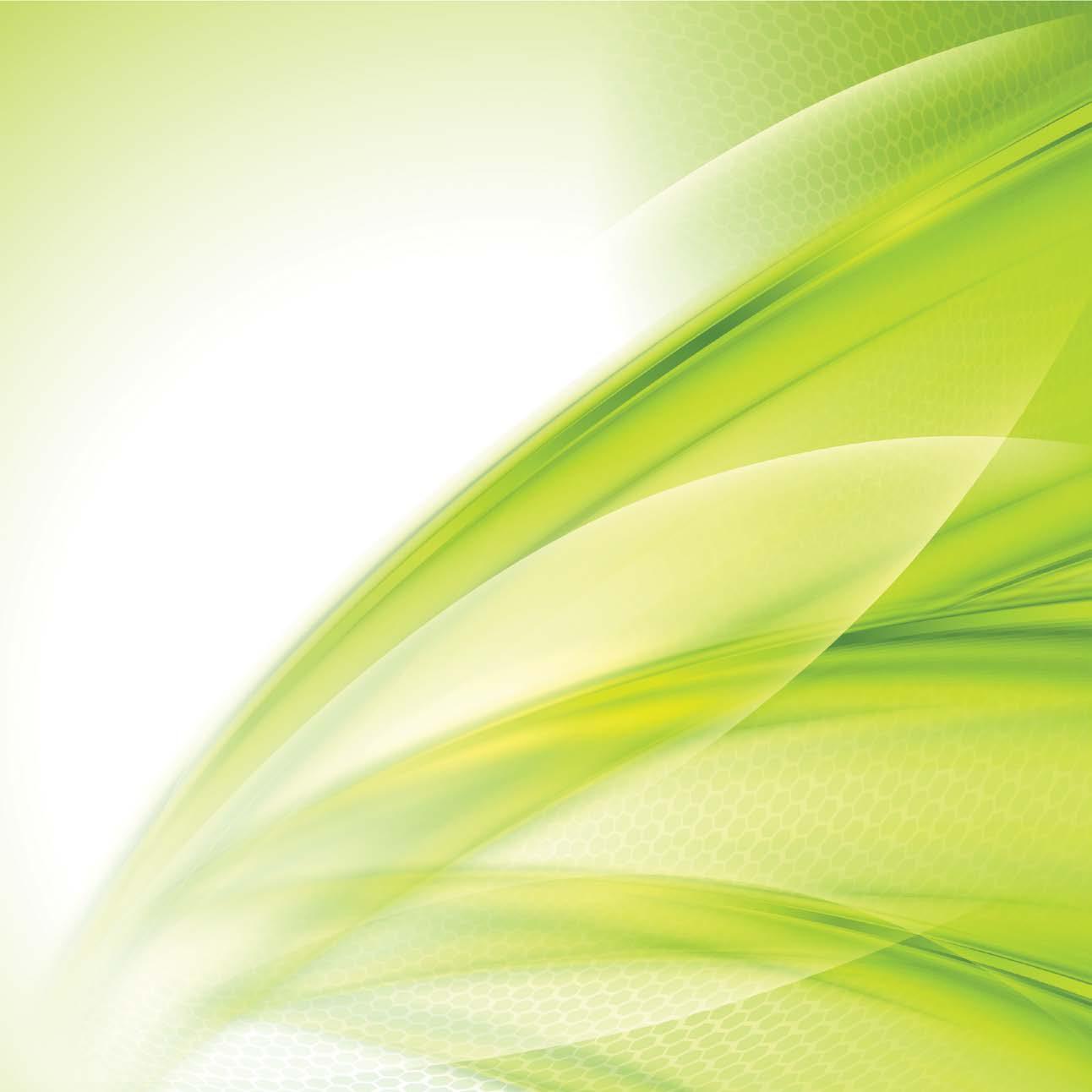

As I mentioned in a previous column, I’ve conducted more than a dozen meetings bringing together collision repairers with regional wholesale parts managers and other OEM representatives for an automaker. The key goal of this effort, for me, is to help both sides of the parts purchase transaction a better understand each other’s perspective, and to share information with one another that would give all of the participants a clearer understanding of how the parts processes work between the various stakeholders.
Over a number of columns, I’m trying to share the things I saw and heard at those meetings that clearly surprised some of the participants or opened their eyes to seeing something in a way they hadn’t previously. In particular, I realized the voice of the wholesale parts distributor is often missing in industry discussions, so that’s something I’m working to add to the mix.
Since my first column on this was published, I’ve received a lot of calls and emails from wholesale parts vendors providing me some additional insights.
But this column focuses on collision repairers, and what they said loud and clear about what they are looking for in a best-in-class OEM wholesale parts vendor. Some readers might be surprised — as some of the participants at these meetings were — that while things like “price” and “discount” might be on shops’ list of what they’re looking for, it’s not necessarily at the top of the list.
For example, I posed this scenario to shop representatives attending the meetings, making sure they knew I wanted them to answer truthfully, not just what they thought I wanted hear. Imagine you had a car you are repairing as part of a direct repair claim for Insurer A. Your parts wholesale dealer doesn’t have the part but could get it from another dealership – but they can’t do so and give you the same discount they do on parts generally.
“Nine times out of 10, I’d still buy it,” a shop manager at a meeting in Arizona said, echoing what I heard over and over again from shops at these meetings. “I need it fast, regardless of money.”
I see a lot of parts wholesalers not wanting to get the part from another dealership because they
can’t do so and honor the discount they offer that shop. But I’m telling you, parts departments need to have a conversation with their shop
He called the shop and said, “You told me this part was on backorder, but this other dealership says they have it.”
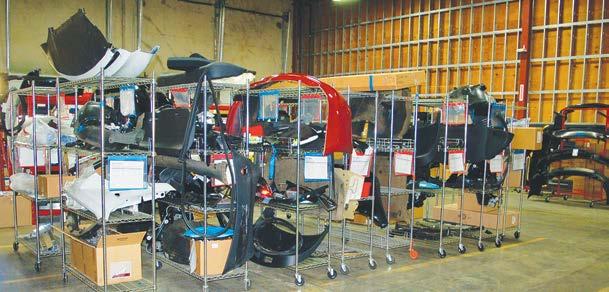
customers, because at the end of the day, cycle time often trumps discount. They may be very willing to make less on a part if they can get it fast.
For instance, under some DRP agreements, if a shop doesn’t meet cycle time and customer satisfaction metrics, it has to give the insurer a designated percentage rebate over a specific period of time. So a single long delay, even for a single part, could skew the shop’s average — even if they hit the cycle time requirement for every other vehicle — and cost a significant amount of money.
That’s why getting a part quickly might matter more to shops than discount. This is true for non-DRP shops just as much as DRP shops.
This highlights another item at the top of most shops’ list for what they want from a parts wholesaler: honest and accurate communication about parts availability. Based on what a shop is told about parts availability, they are making decisions about which vehicles to bring in for repairs and when, which vehicles to disassemble and completion dates they can promise to customers.
If a parts vendor gives them bad information and they make a decision on that, it could possibly cost them tens of thousands of dollars.
An experience I heard about involving a dealership body shop also highlights the need for good communication between shops and wholesale parts vendors.
I was in a dealership body shop in Florida that had recently told a customer a part for their vehicle was on backorder. But that vehicle owner found the part at another dealership.
The dealership body shop called that other dealership, but that dealership wouldn’t sell them the part. That’s a hard conversation to have with a customer. They don’t understand why the shop can’t get that part from another dealership.
That hurts the OEM brand, and it makes the body shop look bad. Dealerships need to learn to play nice in the sandbox together. They need to help each other.
Here’s another point about that: If there’s added costs to a wholesale dealer getting that part from another dealer — the time and money involved in physically going to pick that part up, for example — talk to the shop customer about that. They may be willing to pay a delivery fee added to the invoice for that. Again, it comes down to good communication.
Shops also want accurate information about parts pricing. Again, under some DRP agreements, shops get dinged by insurers for supplements based on parts price increases. Again, good communication is often every bit as important to shops as discounts. Look for more key takeaways about the relationship between shops and wholesale parts vendors in my next column.

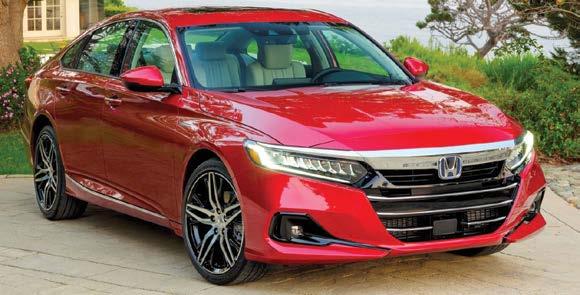
big changes to how body shops can charge for vehicle storage. Fees will under as-yet unadopted wording be based on various factors, keyed to area average rates, and would stay unchanged for one year. The next public comment hearing for this set of regulations is set for Oct. 17.
“Storage fee changes will have a dramatic effect,” Molodanof said. “We expect changes but we haven t seen them yet, and we’re working closely to address concerns.”
Moreno expressed concern as a shop owner about vehicles declared a total loss that take up space until they can be disposed of.
“If that vehicle is taking square footage in our shop, it costs us,” Moreno said. “We lose the opportunity to bring another vehicle in. If we don’t get the chance to repair a vehicle, it matters.”
The BAR is also revising current teardown disclosure requirements, Molodanof said. Body shops accepting payments for repairs from insurers will have to include that amount on the estimate.
“They’ve held workshops and no more are currently scheduled,” he said. BAR is now reviewing the rules.
“Customers often believe that other than their deductible, they won’t have to pay additional amounts. But BAR wants them to know they might have to pay the difference,” Molodanof said.
DTSC is in the final stages of issuing new regulations to “raise hazardous waste disposal fees for auto body shops and other automotive repair shops,” CAA said. Fee rates for the coming year are under review, according to California’s Office of Administrative Law.
“Costs are going up,” Molodanof said. For shops it “increases overhead, increases labor rates. They can pass it on to consumers, but it has to be related to the vehicle and can t be a profit center.”
“The key for the body shop owner is to know what their fees are for, and work with someone who understands this,” Moreno said.
He talked with Integrity Auto Collison Center’s paint distributor, for instance, to determine related fees. They looked at average vehicle counts, how many panels get painted, costs per unit, and so on.
“We came up with how much to charge and why we’re doing it that way,” he said. “We can’t just keep absorbing costs that keep going up.”
CPR Classic, a longstanding specialist in Porsche restoration and consignment sales based in Fallbrook, CA, is currently embroiled in numerous lawsuits, with claims amounting to $11.7 million, casting a shadow over its 40-year legacy in the automotive restoration industry.
The majority of the lawsuits originate from clients who allege that they have not received payments for cars sold through CPR Classic, or buyers who claim they paid for but never received their vehicles. One lawsuit accuses the company of illegally selling a 1960 356 Roadster, which was supposedly in for restoration, for $160,000 without the owner’s consent.
Hans Claassen, a former client from Montrose, CO, who had to sell his cherished silver Porsche 911 to support his wife’s dementia care, has not received the full payment promised to him by CPR Classic. “Seeing the car go, realizing this is it, there was sadness,” Claassen recounted the emotional farewell to his beloved car, which he never saw again.

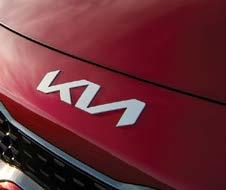
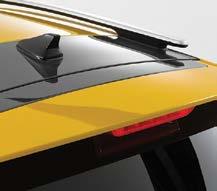
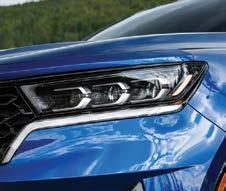
Despite initial communications from Andrea Doherty, owner of CPR Classic, claiming that a buyer had been found, the deal fell through, and subsequent updates ceased, leaving Claassen and others in distress.
Mark MacHale, a volunteer who assisted Claassen, expressed his disappointment, “Well the lies just started to pack up and the excuses.”
Claassen did not file a lawsuit, but he reached out to NBC 7 Responds, which investigated CPR. The news outlet found similar stories among other clients, leading to a deeper examination of CPR Classic’s business practices. The response from Doherty has been minimal, with her communications ceasing after initial contacts with the media.
The company’s financial and legal troubles have escalated to the point of eviction notices being posted at their premises. Doherty declined to speak to NBC 7 Responds. Local authorities, including the DMV and possibly the FBI, although unconfirmed, are reportedly looking into the allegations.
Unlock savings and precision fit with genuine parts
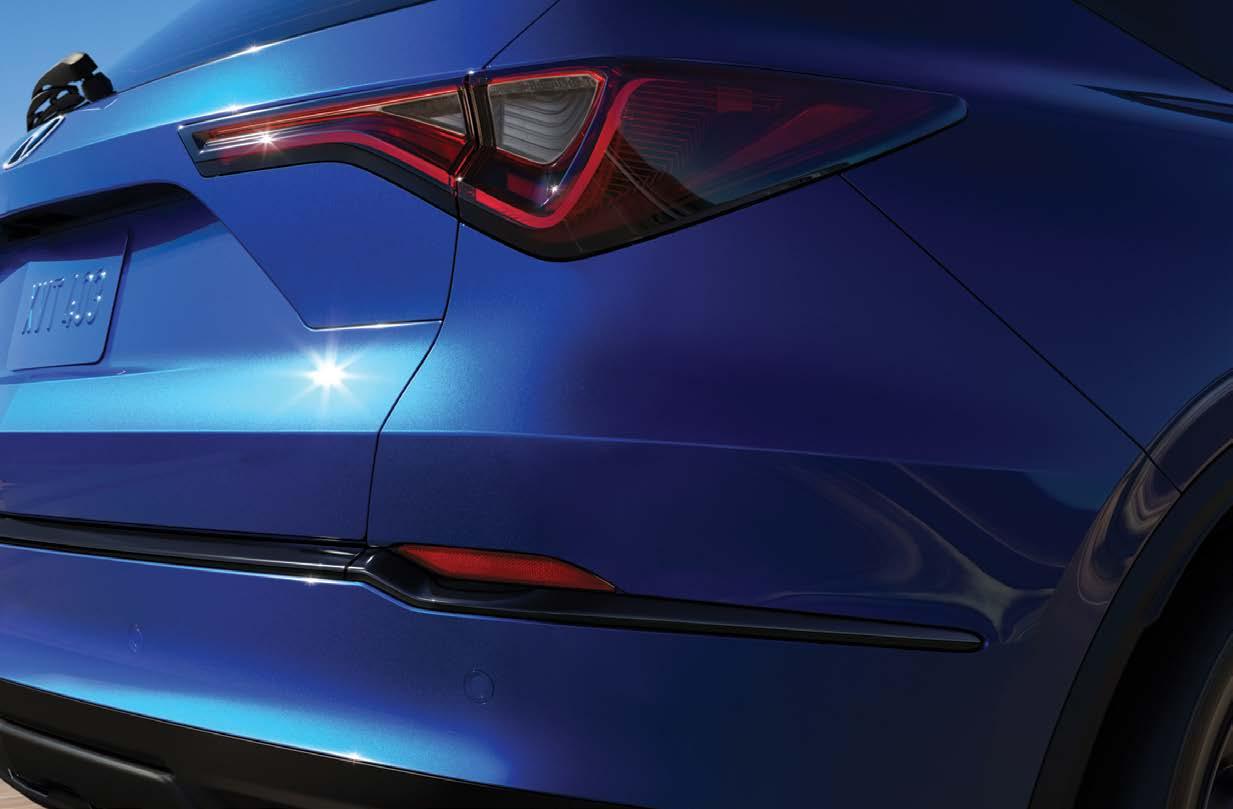
• Save time and money: reduce returns by up to 16%
• Faster ordering process
• More accurate orders
• Easier invoice processing
• Live information
• Seamless fit
• Competitive pricing
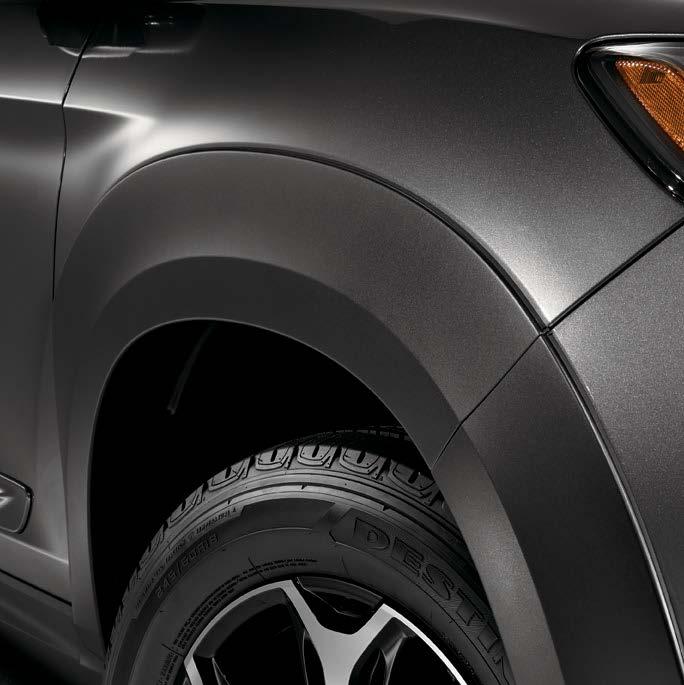
Please
Barber Honda
Bakersfield
661-396-4235
Dept Hours: M-F 8-5:30 bestchoice@barberhonda com
Capitol Honda
San Jose
408-445-4412
Dept Hours: Mon-Sat 7:30-6; Sun 8-5 sbettencourt@penskeautomotive com
Concord Honda
Concord
925-825-8016
Dept Hours: M-F 8-6 kevin valenzuela@concordhonda com
Galpin Honda
Mission Hills
800-GO GALPIN
818-778-2005
Dept Hours: M-F 7:30-6; Sat 8-2 mteeman@galpin com
Honda of El Cajon El Cajon
619-440-5851
Dept Hours: M-F 7-6; Sat 7-5 parts@hondaofelcajon com
Honda of Hollywood Hollywood 800-371-3719
323-466-3205
Dept Hours: M-F 8-6 parts@hondaofhollywood com
ACURA
Acura of Concord
Concord
925-680-4233
Dept Hours: Mon-Sat 7-6 keith�whisten@cacargroup�com
Acura of Fremont Fremont
888-435-0504
510-431-2560
Dept Hours: M-F 8-6; Sat 8-5 mike ohare@acuraoffremont com
Acura of Pleasanton Pleasanton
888-985-6342
925-251-7126
Dept Hours: M-F 7:30-6; Sat 8-6 mitch cash@hendrickauto com
Honda of Pasadena Pasadena
800-433-0676
626-683-5880
Dept Hours: M-F 8-6; Sat 8-4
Honda of the Desert Cathedral City
760-770-0828
Dept Hours: M-F 7-6; Sat 7-5 mpartridge@honda111 com
Honda Van Nuys Van Nuys
818-756-6549
Dept Hours: M-F 8-6; Sat 8-5 wholesaleparts@hondavannuys com
Larry Hopkins Honda Sunnyvale 408-720-0221
408-736-2608
Dept� Hours: M-Sat 8-5 parts1@hopkinsdirect com
Metro Honda Montclair 800-446-5697
909-625-8960
Dept Hours: M-F 7:30-5:30; Sat 7:30-4 wholesaleparts@metrohonda�com
Pacific Honda San Diego 858-565-9402 jgardiner@pacifichonda com
310-784-8664
310-539-3636
Dept Hours: M-F 7-7; Sat 8-5 alvaradow1@autonation com
Bakersfield Acura
Bakersfield
661-381-2600
Dept Hours: M-F 7:30-5:30 bakersfieldacuraservice@yahoo com
Marin Acura
Corte Madera
800-77-Acura 415-927-5350
Dept Hours: M-F 8-5:30; Sat 8-4 parts@marinacura com
San Francisco Honda San Francisco 415-913-5125
Dept Hours: M-F 8-5 partsws@sfhonda com
Scott Robinson Honda Torrance 310-371-8320
Dept Hours: M-F 7-6:30; Sat 7-5 mluna@scottrobinson com
Selma Honda Selma
800-717-3562
559-891-5111
Dept Hours: M-F 7-6; Sat 7:30-4:30 hondapartsmgr@selmaautomall com
Larry H. Miller Honda Boise
888-941-2218 208-947-6060
Dept Hours: M-F 7-6; Sat 8-5
Hinshaw’s Honda Auburn 253-288-1069
Dept Hours: M-F 7-6; Sat 7:30-4:30 rickb@hinshaws com
McCurley Integrity
Honda
Richland
800-456-6257
509-547-7924
Dept Hours: M-F 8-5:30; Sat 8-4 hondaparts@mccurley net
South Tacoma Honda Tacoma
888-497-2410
253-474-7541
Dept Hours: M-F 7:30-6; Sat 8-5 bgregory@southtacomahonda com
Metro Acura Montclair
800-446-5697
909-625-8960
Dept Hours: M-F 7:30-5:30 wholesaleparts@metrohonda com
Acura of Honolulu Honolulu
808-942-4557
Dept Hours: M-F 8-5; Sat 8-4 RayleenGarcia@lithia com
Hinshaw’s Acura Fife
253-926-3331
Dept Hours: M-F 7-6; Sat 8-5 johnny@hinshaws�com
By Brian Bradley Autobody News
The recent interest rate cut by the Federal Reserve could spur more real estate acquisition in the collision repair industry, but it may take months for this and other impacts of the decrease to materialize, according to analysts.
“Interest rate cuts tend to cause capitalization rates to decrease because lower rates can make financing more affordable for investors in commercial properties,” Focus Advisors Senior Associate Madeleine Roberts Rich told Autobody News. “More affordable financing drives up valuations.”
The Fed cut interest rates by 0.5 percentage points to between 4.75% and 5% on Sept. 18, the first cut since March 2020. The action may signal more repair shop expansion and investments on the horizon.
But Rich cautioned it can take a long time for business owners to plan and find financing for major investments such as real estate purchases or business acquisitions. “It certainly does not happen overnight,” she said. It can take a while for other industries to respond to interest rate shifts as well. For instance, experts
expect the Fed rate cut won’t create significant effects in the manufacturing industry until January, spurred in part by an anticipated spike in consumer sentiment as credit card interest rates come down, according to a Sept. 19 article in Manufacturing Dive.
Analysts noted many of the Fed rate cut’s impacts on collision repair industry investments are uncertain writ large. Still, analysts envision a few potential outcomes.
decreases, as borrowing costs for real estate become more affordable, she noted.
“If they own a property where Caliber is the tenant or Gerber’s the tenant or Crash Champions is the tenant, the cap rate on their property’s going to go down a good amount,” Rich said. “Or, if they’re considering … an entry into a lease with that consolidator, they’re going to benefit from the lower cap rates as well.”
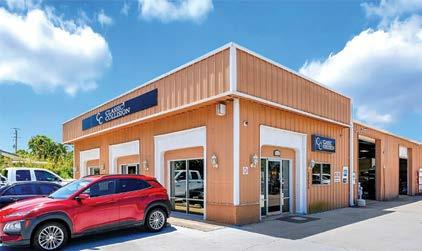
Rich said she believes the most significant impacts of the Fed rate cut will be on landlords who own shops occupied by consolidators.
Fed rate cuts generally coincide with real estate capitalization rate
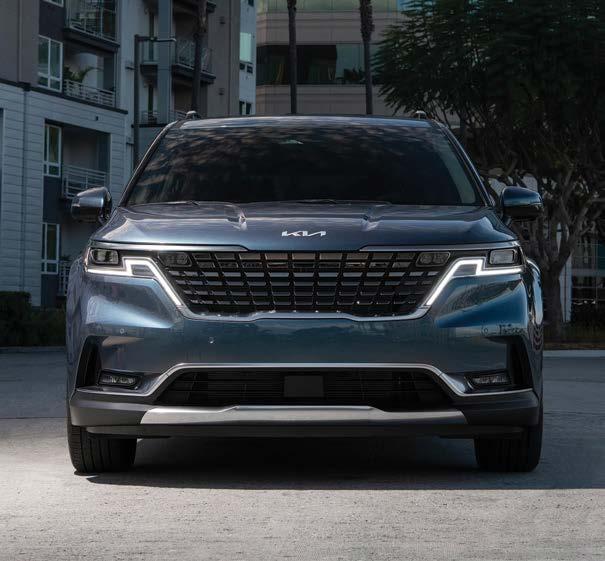
Scott Gould, senior vice president of investments at real estate investment brokerage firm Marcus & Millichap, said the Fed rate cut will likely propel “a little bit more” real estate investment in the collision repair industry.
“There’s still a lot of money on the sidelines just waiting to feel what’s going to happen next,” he said. “There’s that pent-up demand.”
With the rate cut, it could make more sense for high-leverage real estate investors in the collision sphere to snap up more real estate,
Gould said.
“I’m optimistic that that will kick up more activity from passive investors looking to buy body shop properties as income streams,” he said.
However, current construction costs may not yet be conducive to a sustainable greenfield strategy.
National construction costs were about 27% higher in the second quarter of 2024 than in 2019, the last full year prior to the COVID-19 pandemic, according to the most recent Overall Construction Cost Index by construction and real estate development firm Mortenson.
Gould cited some remaining stagnation in the market. Loans aren’t as cheap as they were three or four years ago, which has made financing these investments a lot less attractive.
“The buyers that want to see an adjustment in pricing that haven’t really gotten that from the sellers, so there’s that delta between expectations, which has slowed transactions,” Gould said.
Though the rate cut could catalyze some additional borrowing in the collision repair space, specifically for real estate, analysts believe it’s unlikely the move will directly spark
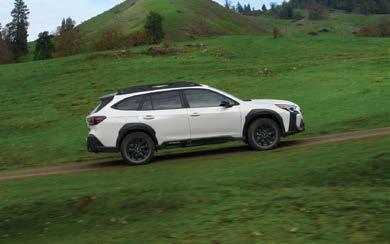


parts@subarusb.com www.sbsubaru.com Santa Cruz Subaru Santa Cruz (888) 844-7131 (831) 420-1402 (831) 420-1923 Fax Mon.-Fri. 7:30-6; Sat. 8-5 parts@santacruzsubaru.com www.santacruzsubaru.com
Parts Hotline (866) 662-2819 (360) 716-2553 24 Hr Fax Mon.-Fri. 7-6; Sat. 8-4:30 wholesaleparts@kendallauto.com scotteney@kendallauto.com www.kendallsubarumarysville.com
new company acquisitions.
Multi-shop operators (MSOs) have sought out some debt to drive their acquisitions during the 2020-2024 period of higher interest rates, but the industry can view debt-infused transactions as a gamble, according to Focus Advisors President Chris Lane
“First of all, it’s expensive,” he said. “Second of all, it’s risky.”
The disincentives of seeking debt, continuing high industrywide business valuations, and ongoing robust competition mean a rate shift in and of itself isn’t likely to sway consolidations one way or the other, Lane said.
“I don’t think that the cost of capital is going to influence the rate of consolidation,” he said. “It’s going to continue at the rate that it is. There’s just too much competition for shops that I don’t think the macro picture interest rates are going to matter that much.”
However, outside investors, such as private equity firms that acquire smaller mom-and-pop shops and MSOs, commonly use some bank debt alongside their existing equity to buy those shops and MSOs, Lane said.
Higher interest rates during the last four years have translated to banks scrutinizing private equity firms’ financials a bit more, and spending more time in vetting deals they lend
for, he added. So, if more capital opens, collision repair companies’ valuations could potentially see a modest uptick above their already strong levels.
Focus Advisors is a mergers and acquisitions (M&A) advisory firm for collision repair businesses looking to sell or acquire capital to grow. The firm represents the owners, not buyers, and has closed more than 30 MSO acquisitions.
Gould said he has already seen lenders start to quote lower interest rates in response to the Fed’s rate cut.
As of late September, some lenders were considering putting a floor on their five-year adjustments because they don’t know how low interest rates will go, he said.
“They don’t want to do a loan today at 6.5 [percent], and then [the Fed rate] goes back down to 4 [percent], and then they get readjusted much further south,” Gould said.
That said, not all interest rates have responded to the rate cut yet, he added. Lenders are all over the board.
Common real estate projects in the collision repair space, such as greenfield and brownfield investments, are generally more reliant on longer-term fixed rates

Audi Part Professionals are experts on collision parts, replacement components and mechanical items.
than they are on banks’ prime rates, Paul Knowlton, equipment finance sales executive for The Huntington National Bank, told Autobody News.
Banks’ prime rates are more closely tied to the federal funds rate.
“Prime doesn’t lower the 10year cost of money by half a point,” Knowlton said. “But in general, it’s trending the right way, and expectations are for rates to continue to drop and the yield curve to be normalized.”
Knowlton emphasized his opinions were only his, and not Huntington Bank’s.
A Sept. 23 Huntington Bank report noted longer-run rates have decreased for several months in anticipation of the Fed’s September rate cut, including for auto loans and home mortgages.
Further, the nationwide shift to electric vehicles and batteries is prompting a “boom” in factory construction, which is experiencing its highest spending level in decades, increasing from about $900 billion in 2013 to well over $2 trillion in 2023, according to the Huntington report.
“Rate forecasts are often wrong, so taking advantage of [longerduration] rates can reduce interest expense volatility and lock in the current outlook,” the report stated.
Audi Rocklin
Rocklin
866.948.0048
916.836.1286
916.836.1293 Fax
Order Audi Genuine Parts from these select dealers.
How quickly any macro effects of the rate cut spill into the collision repair industry depend on a range of factors, including the ones described above.
Additionally, despite the rate cut, some financial uncertainty has percolated in the collision repair borrowing space regarding the pending November presidential election, analysts noted.
Companies are waiting to see the fiscal and tax implications of the next administration, according to Lane.
“To people, it feels like, ‘I’m more afraid of who the next administration is going to be, and what’s going to happen to my tax rate,’” Lane said. “They feel more strongly about, ‘What are my cap gains rates; what is that going to look like?’ than they do about interest rates. I think a lot of that is probably driving economic decisions.”
Though the political cycle can damper repair equipment acquisition and expansion decisions, it appears the decreased Fed rate is eliminating some of those headwinds, Knowlton said.
“Anytime there’s an election cycle, there’s uncertainty, and uncertainty isn’t conducive to making future investments, whether it’s buying a business or financing equipment,” l CONTINUED ON PAGE 29
Audi Seattle
Seattle
206.634.8200
206.547.1581 Fax
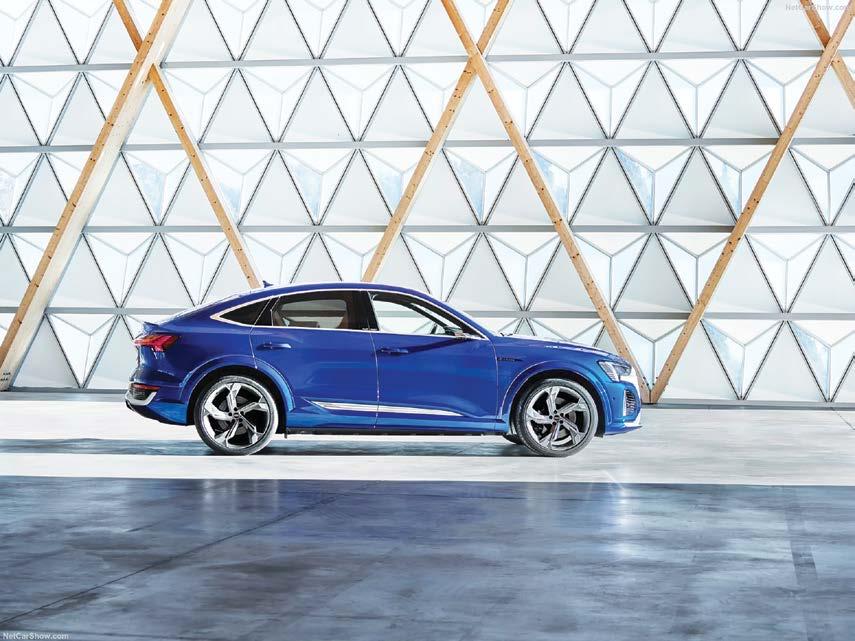
M-F 7:30am-6pm Sat 8am-5pm parts@audirocklin.com
Niello Audi
Sacramento
916-480-2851
916.483.1963 Fax
M-S 8am-5pm audi.parts@niello.com www.audi.niello.com
Santa Monica Audi
Santa Monica
310.481.8216
310.393.6982 Fax
M-F 7:30am-5pm wholesale@santamonicaaudi.com www.santamonicaaudi.com
M-F 7am-6pm parts@uvwaudi.com www.audiseattle.com
Regardless of the age of your customer’s Audi, Audi dealers have access to over 200,000 part numbers and are supported by a nationwide network of distribution centers to help ensure non-stocked parts are delivered the next day.
By Stacey Phillips Ronak Autobody News
In early June, Lucid Motors held its first Certified Body Repair Network conference in Scottsdale, AZ. Certified facility owners from across the country had an opportunity to meet Lucid team members, network with shops and tour the Advanced Manufacturing Plant-1 (Amp-1) in Case Grande, AZ, located between Phoenix and Tucson.
“As the industry’s leading electric vehicle (EV) in regard to range and charging, we have to be a leader in the collision space and have a presence,” said Jake Rodenroth, Lucid’s senior manager of the North American Body Repair Program.
“The future of Lucid is very bright. The scale of the operation and the wonderful people committed to its cause is truly impressive.”
many of their names but hadn’t met the people and were able to interact with them.”
Mike Anderson, owner of Collision Advice, also shared tips on providing excellent customer service.
“Collision repairers have to be doing more than just good work,” stressed Rodenroth. “That’s the expectation. We’re trying to coach to customer service.”
Rodenroth and Andy MacDonald, director of technical operations at Lucid, shared their appreciation for Anderson presenting and inspiring the people in the room.
Following the presentations, attendees toured the 3.85-millionsquare-foot AMP-1, one of two manufacturing facilities in Casa Grande.
“The tour was really a treat because they’ve only recently opened the factory to the general public,” said Rodenroth.

During the event, attendees met the people involved at Lucid on a day-to-day basis and heard from the various departments, including body, technical training, parts and paint.
For two years, monthly calls have been held with the network to exchange information. Following an in-person meeting during the 2023 SEMA Show in Las Vegas, NV, Lucid decided to plan a formal meeting in June 2024 with certified shops.
Rodenroth said it was a great opportunity to talk to shop owners one-on-one.
“It’s good to feel their handshake and see their smile, especially some of the new shops that I haven’t had a lot of interaction with and have only talked to on the phone,” he said. “You have a deeper connection when you get to know people personally.”
During the event, attendees met the people involved at Lucid on a day-to-day basis and heard from the various departments, including body, technical training, parts and paint.
“There are so many people who make our program successful and we wanted to highlight them,” said Rodenroth. “The shops recognize
17 minutes.
The Air has received numerous awards and accolades, including the following this year: the Top Gear Electric Award for 2024 Best Luxury EV, U.S. News and World Report’s 2024 Best Luxury Electric Car, and Car and Driver’s 2024 10 Best List.
The company has also announced it will be selling the Gravity SUV with a projected range of up to 440 miles, depending on trim level.
program’s specific requirements in the regional market that they operate in,” said MacDonald. “Collision repair experience in structural aluminum and EV repair is preferential and a proven track record in delivering best-in-class customer service is mandatory.”
“We aspire to be the best certified network a shop can be on,” said Rodenroth. “It’s not easy to get on the program or stay on it.”

After evaluating more than 60 sites in 13 states for the Lucid Motors Factory, a 500-acre site in Casa Grande was chosen.
“Casa Grande offered close proximity to critical utilities, an established transportation systems and strong support from state and local government,” said MacDonald. “The facility is the first purpose-built EV factory in North America.”
Based in Newark, CA, MacDonald said Lucid’s mission is to inspire the adoption of sustainable energy by creating advanced technologies and the most captivating luxury EVs centered around the human experience.
“Our commitment to efficiency has created one of the fastestcharging, longest range and most efficient EVs,” noted MacDonald. “By using fewer batteries and less grid electricity, we’ve reduced the demand for critical materials and their environmental impact.”
Introduced in 2021, the Lucid Air sedan is among the fastest-charging EVs on the market. The model has four trim levels: The Pure with 430 hp and 410-mile range, the Touring with 620 hp and 411-mile range, the Grand Touring with 819 hp and 516-mile range, and the Sapphire with 1,234 hp and 427-mile range. Depending on trim level, the vehicle charges up to 200 miles in about 12-
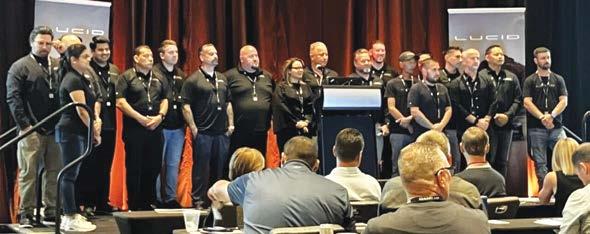
Lucid vehicles can be purchased over the Internet and at Lucid Studios in states where the auto manufacturer is licensed to conduct sales. The company provides services to customers through Lucid Service Centers and mobile service operations.
Entry into the Lucid Body Repair Program is by invitation from Lucid and subject to being committed to certain requirements. These include a rigorous business evaluation, sending technicians to extensive hands-on body repair and mechanical training program courses, meeting all body and mechanical repair tooling and equipment requirements and performing to Lucid Body Repair Program operating standards requirements.
“Lucid carefully vets any candidate body repair centers to ensure that they are the best fit for meeting our customers’ needs and can meet our
He said shops must have the required equipment, restricted parts and hands-on training to repair vehicles properly.
Rodenroth encourages collision repairer facilities to access Lucid’s online landing page, fill out the form and learn more about the program.
“We’ve had some good shops that have reached out to us, but they’re located in a populated market where we already have certified shops and that wouldn’t be fair to them,” he noted.
The goal is to keep certified shops busy.
“We want to have that same respect for every shop we onboard,” said Rodenroth.
He said certification is like a badge of honor.
“It’s not a membership. It’s a certification,” Rodenroth emphasized. “Companies like ours aspire to change how people drive and own cars. Our network aspires to change how the industry repairs cars and interact with owners.”
To learn more, visit techinfo. lucidmotors.com/landing
he said. Despite election timing, there are “a lot of tax benefits to buying equipment in the fourth quarter.”
To be certified to repair their vehicles, some OEMs require body shops to have specific types of equipment, whether it be certain welders, frame straighteners or measuring systems, to name a few.
Companies may have to invest as much as $50,000 to $150,000 in equipment if they want to work on a particular car brand, Knowlton said.
Buying equipment in the fourth quarter of a calendar year, just before tax season, can bring timely benefits.
Internal Revenue Code Section 179 allows businesses to claim lower current-year tax liability for depreciable assets, including equipment, instead of capitalizing an asset and depreciating it over time in future tax years.
“My guess is that the capital equipment people see a pretty good bump here through the year, irrespective of the election,” Knowlton added.
Though new equipment — along with real estate — is a major area that
collision repairers seek financing for, it can be “hit or miss,” as not every shop feels the need to make frequent or higher-end investments in new equipment, Lane said.
That said, the last time frame the collision repair industry found itself in a lower rate environment — during the heat of COVID in 2020 — shops borrowed substantially, including for equipment investments, Rich said.
“They got [Small Business Administration] loans during COVID that when rates were really, really, really low, a lot of collision repair entrepreneurs, fortunately, recognized that this is too good to pass up,” she said.
The Federal Funds Rate sat at 0% to 0.25% in March 2020. It didn’t rise until March 2022, to 0.25% to 0.50%.
Even though rates are nowhere near as low as COVID rates, this is the first rate cut in four years, and anytime there’s a business rate cut, it increases business confidence, Knowlton said.
“Lowering and decreasing rates creates some certainty, which allows companies to look forward a little further,” he added. “Whether it’s the brownfield investments or investing in equipment or buying that shop in the next town, it just makes that path a little smoother and that decision a


Classic Collision, LLC, headquartered in Atlanta, expanded its national footprint with the acquisition of Factory Finish, a key player in the collision repair industry in Bellevue, WA.
Factory Finish, known for its state-of-the-art facilities and commitment to quality, has served King County and its surroundings for over 75 years.
“Our team has been dedicated to making the repair process as simple and stress-free as possible. We are pleased to have found Classic Collision to continue this dedication to our customers,” said Jeff Casady, former owner of Factory Finish.
The integration of Factory Finish into Classic Collision’s operations is expected to streamline services and enhance the overall customer experience in the region. The combined expertise of both entities promises continued delivery of top-notch collision repairs, reinforcing their commitment to operational excellence and customer satisfaction.
“We are dedicated to offering high-quality, dependable repairs and providing excellent service. Adding this new location will help us achieve that goal. We are excited to welcome Factory Finish to the Classic Family,” said Toan Nguyen, CEO of Classic Collision.

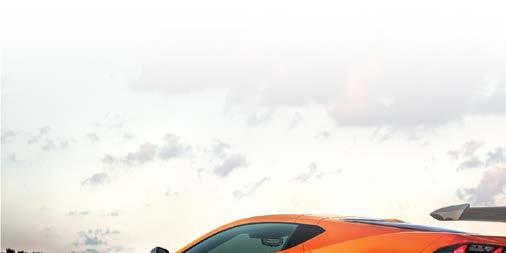
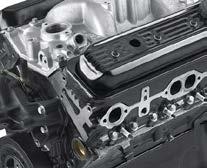


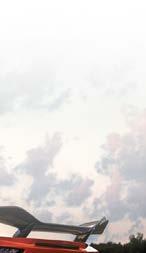
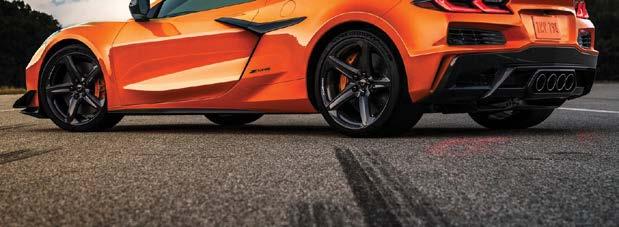
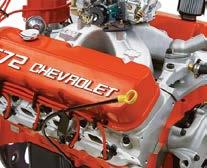





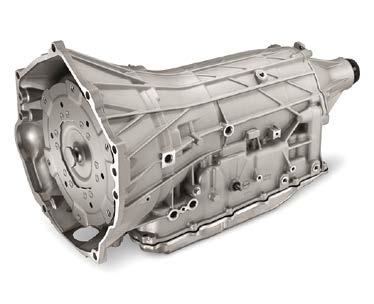


By Abby Andrews Autobody News
For collision repair shops, working with insurance companies on claims can be contentious and stressful.
Billy Walkowiak is the founder and president of Collision Safety Consultants, a team of independent appraisers specializing in vehicle diminished value, total loss assessments and pre-purchase and post-collision repair inspections.
He joined The Collision Vision podcast, hosted by Cole Strandberg and driven by Autobody News, to talk about how to negotiate with insurance companies, using the right to appraisal clause, the importance of documentation and ensuring shops do right by the consumer.
“I would say the No. 1 issue is ignorance,” Walkowiak said. “Ignorance on the part of the consumer, ignorance on the part of the adjuster. And believe it or not, ignorance on the shop.”
Educating all parties is important. “It seems like no one understands exactly what’s going on unless they’ve had some type of class,” he said.
Walkowiak said he has met shop owners who don’t know the difference between a first-party and third-party claim and how that affects the customer’s rights.
“A first-party claim is when you’re dealing with your own insurance company, who has a contractual obligation to work on your behalf,” Walkowiak said. “They have to be fair and equitable. If they’re not, that opens them up to unfair and deceptive trade practices, bad faith claims, etc.”
A third-party claim, on the other hand, is when the customer’s vehicle is damaged by another person, whose insurance company handles the claim. In that case, the insurance company is trying to protect its own customer by minimizing the amount the insurer has to pay.
“When you try and fight a thirdparty carrier, you’re beating your head against a wall and all you’re going to get is a headache,” Walkowiak said.
“I have to explain that to consumers and shops every day, all day long,” he said. “The reason you pay insurance is to be protected. You don’t pay insurance to pay someone else off.”
Walkowiak said collision repair associations are doing a better job




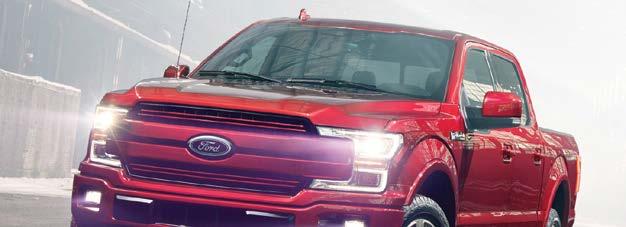






of educating its shop members on topics like contract law. Repair Appraisal Clause Appraisal clauses – which are not included in every policy -- allow a customer to challenge their insurance company on repair costs. Walkowiak said that benefits not only the customer, but the shop as well.
If an insurer writes an estimate of $10,000, but the shop says it will cost $15,000, the shop has to ask for the remaining $5,000 from the customer to fully complete the repair – unless the customer has an insurance policy with an appraisal clause.
In that case, an independent appraiser, like Collision Safety Consultants, is hired by the insurance company, and they negotiate the claim.
“We call that leveling the playing field,” Walkowiak said.
Walkowiak got into independent appraising thanks to his father-in-law, who co-owned a shop in Belmont, NC. He suggested Walkowiak could help customers dealing with total loss and diminished value claims, as well as post-repair inspections.
“I liked it because I was helping consumers overcome the shortfall between them and an insurance company,” Walkowiak said.
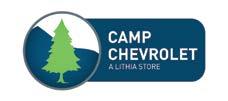
Collision Safety Consultants started with diminished value claims. The company then started doing post-repair inspections.
“We were checking other body shops’ work to make sure that it was done properly and safely,” Walkowiak said. “I was the bad guy. You can imagine what I was known as, and it sure wasn’t a sweetheart.”
Collision Safety Consultants handles shops found to be in the wrong differently, depending on the circumstances.
“If they cheated somebody or committed fraud, all bets are off. We were taking them to the mat. You get no mercy,” Walkowiak said.
But if it was found to be a matter of a tech who took a shortcut, or a new manager who didn’t know a process yet, the appraisal company would take another approach.
“We would educate them,” Walkowiak said. “Catching them doing something bad was probably the best thing that ever happened to them, because we showed them how they could make more money doing it properly.”
From Body Shop Adversary to Asset Strandberg pointed out Collision Safety Consultants seems to have
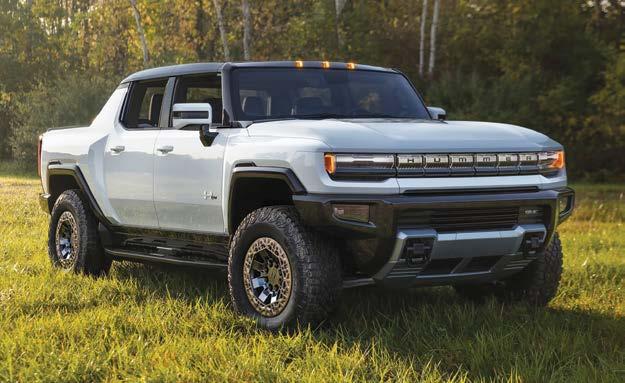










morphed into an asset for body shops, as it often helps shops get paid for what they believe is a proper estimate.
Walkowiak said shops certified to work on premium brands, like Tesla, Jaguar and MercedesBenz, have the most challenges, as insurers don’t want to pay for higher labor rates. He said that can almost be considered the insurance company’s violation of the contractual obligation between the customer and the shop.
“When you take your car into the shop, that contract is between the vehicle owner and the shop. The insurance company doesn’t come into play,” Walkowiak said. “Now the insurance company says they’re not going to pay the consumer.
“What I’m doing is helping the consumer. I’m not actually helping the body shop now,” he said. “It helps the body shop because they get paid and the consumer feels better about the body shop, and that they don’t have to pay out-of-pocket money.
“But my goal is to make a consumer whole. And in that process, the body shop gets made whole without the consumer getting injured,” Walkowiak said.
Strandberg asked if there are any best practices shops can deploy to negotiate with insurers to get fair compensation.
“Documentation, documentation, documentation, documentation,” Walkowiak said.
He recommended taking photos of every step of the process and printing them out, along with the written OEM repair procedures.
“You’re talking 80, 90 pictures. It’s a little cost of ink, but there is no question. Was it done?” Walkowiak said.
When an insurance company then says it won’t pay for a part of the process, the independent appraiser can point out where the OEM repair procedures called for it.
Insurance companies also challenge labor rates, but Walkowiak said his company fights for higher rates charged by shops that invest in the equipment and training to justify them.
The real key is to be a superior negotiator, Walkowiak said.
“I’m a hell of a negotiator,” he said. “Either people like me, they loathe me or they respect me. Any three of those pretty much gives me what I want.”
Perserverance pays off. Walkowiak suggested going up an insurance company’s chain of command. “Insurance company managers hate to get phone calls,” he said.

Some shop owners and customers believe lodging complaints about an insurance company with their state’s Department of Insurance doesn’t do anything, but if the same company is reported repeatedly, the managers will eventually make concessions.
“They’re going to come around and say if every consumer is filing a complaint about Jim the adjuster, because Jim doesn’t want to pay for everything, then eventually Jim’s going to get pulled away from that shop,” Walkowiak said.
Strandberg asked about the best approach when trying to negotiate payment with an insurance company.
“I used to come in like a bulldog. Now I’m pretty much nice to everybody, and until someone disrespects me or says something that I can’t live with, I’m still nice,” Walkowiak said. “When it comes to negotiating, just be nice, be polite, be respectful and see what they got. Feel everything out.”
He said there are cases where the issue is more of a clash of personalities rather than a question of procedure.
If there’s “bad blood” between an insurance company and a shop, and the insurer is challenging a repair estimate, Walkowiak said the first option is to check to see if the
customer’s policy has the appraisal clause.
If not, the next step is to ask the insurance company management to assign a new appraiser or adjuster. Or, Walkowiak said, the shop could have a sit-down with the insurance company employee to try to clear the air.
Walkowiak said it is more important to complete every step of a repair procedure than it is to make concessions so the insurance company payment covers it, as improper repairs can cause serious injury or death in a future collision.
“Any shop that performs a repair on a vehicle is liable. Doesn’t matter what the insurance company wrote. Doesn’t matter what the insurance company said. Ultimately, liability falls on the shop owner,” Walkowiak said.
Every customer needs to be educated from the first consultation that their insurance company might tell them the shop charges for things no other shop does, and then how to challenge it.
Walkowiak said customers should be taught to ask which shops charge less, and then ask if those are DRP shops that make concessions so the insurer sends them business.
l CONTINUED ON PAGE 33
By John Yoswick Autobody News
Donny Seyfer of the National Automotive Service Task Force pointed out a variety of things collision shops and insurers should be aware of related to the lowvoltage batteries within electric and hybrid vehicles, including the fact there are a lot of different chemistries involved.
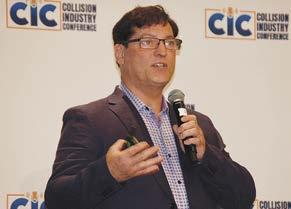
“It’s very critical that you are aware of what you’re working on, because they’re not all the same,” Seyfer said.
Battery chargers, for example, need to be designed for the type of battery being charged.
Second, battery management systems, even on internal combustion engine (ICE) vehicles, have become much more sophisticated.
“Battery life also is a big issue, depending on where the vehicle lives,” he said, noting that cold and hot climates are hard on batteries.
“So keep in mind that many times you may have a vehicle come in with a pre-existing condition that you [need to] catch on the front-end.”
A pre-repair scan helps ensure a shop and insurer are “not on the hook for things that weren’t related to the accident, nor something that happened in the shop, particularly given the cost of some of these batteries.”
Alternators or generators are battery maintainers, not battery chargers, he cautioned.
“So if you are jumping vehicles and then expecting that alternator to do all the work, you’re beating the living hell out of that alternator,” Seyfer said. “It was not designed for that. In fact, you can cause damage to the battery because the alternator will
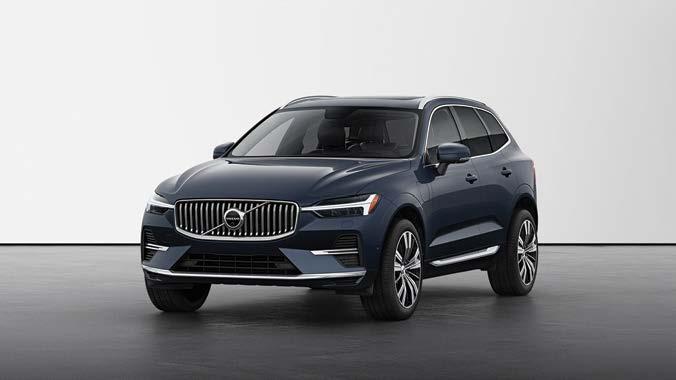
work so hard to do a job that it wasn’t intended to do.”
It’s also very important to know what “fully-charged” means for the different types of batteries.
“A 100% charged 12 volt battery is actually sitting at about 12.7 to 13.2 volts, not 12 volts,” he said.
the only things that can be damaged by an undercharged low-voltage battery on an electric or hybrid vehicle, Seyfer said.
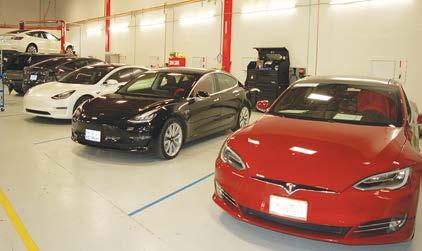
“In fact, if that battery is down to 12 volts, it’s basically discharged. EVs that have lithium ion or lithium iron chemistry functions usually are looking for a 40% to 80% charge. That’s where they work the best. If you overcharge or undercharge them consistently, it hurts them.”
Alternators and generators aren’t
“If the charging system voltage or the battery voltage is low, the starter will work way harder to do its job against that low voltage and it will draw more current, which can just tear up starters,” he said. “Of course, it damages the battery, particularly if they run at these low charges constantly. And most importantly, it can create diagnostic trouble codes that you will have a really hard time diagnosing. If you’re starting vehicles consistently that have low voltage, they start to get a little upset with you.”
Seyfer recommends always looking at the OEM service information to confirm the type of battery the vehicle has.
“Yes, they’re marked, but you might have to take the entire battery
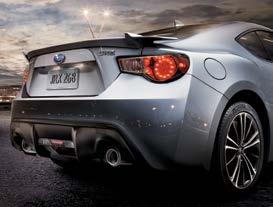
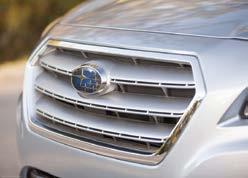
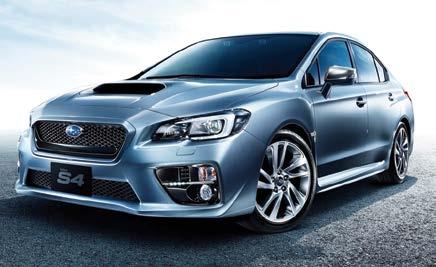

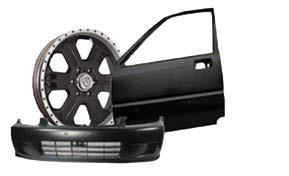

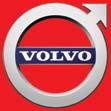





out,” he said. “Many of them are in cases to keep the temperature regulated so they don’t get too hot. So your best bet is to look up the battery in the service information.”
The charging systems often draw current while the vehicle is just sitting, he said.
“And it’s kind of big numbers these days, so you may actually want to maintain a battery while the vehicle is waiting for parts or things that might take a while to get there,” he said. “Make sure you get a [good] battery charger, and the prices are rather stunning. But the nice part is that many of them are capable of doing all different [battery] chemistries for you.
“You may also want to get a power supply, if you don’t already have one, so that when you’re doing remote scanning or you are doing calibrations and things like that, you can maintain that battery voltage in the system continuously, and it replicates what the charging system does while that vehicle is sitting static for a while during operations,” he added.
Charging has to be current-, voltage- and temperature-regulated, Seyfer said.
“If any one of those three parts of the triangle are off, you can damage the battery, any kind of battery,” he
said. “This is why modern chargers are really important, because if you just put the right voltage to it, you could be putting stunning amounts of current in it with some of the old push-around batteries.”
His final caution related to lowvoltage battery systems could come as a surprise to shops.
“It seems to be becoming a more and more common issue: vehicles that are really pretty new that have batteries that are not up to the task, that can set diagnostic trouble codes and give you a major headache trying to diagnose them,” he said. “We [check] this with a scope, but you can easily do this with a volt Ohm meter that has min/max recording capabilities on it. If you start a vehicle while it’s sitting there with what you would consider a correct charge, a battery sitting at, say, 12.7 volts, and you go to crank it, watch to see if that voltage drops too low.
“We had a Subaru recently that was only one year old, and the battery went down to six volts,” Seyfer said. “It was setting diagnostic trouble codes. Tech couldn’t figure out what was going on. That can cause modules to brown out and not work correctly. So just keep that in mind if you’ve got inexplicable things happening, particularly right after a start.”
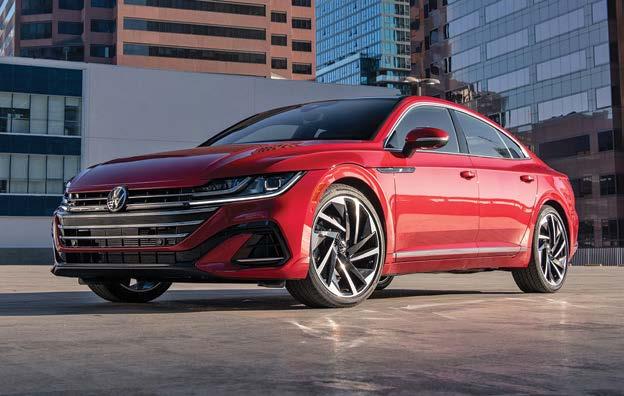
“I’ve seen it in multiple shops that are doing it this way, and they set that customer up and prepare them, and then they’ll go, ‘Oh man, that adjuster said exactly what you told me they were going to say before they said it,’” Walkowiak said. “That stops the insurance companies telling the consumer that the shop is overcharging for stuff.”
Never trust the person that owes you money to determine how much money they owe you. Walkowiak said that is his company’s tagline.
Do your homework. Use resources like I-CAR, ALLDATA and OEM1stop.com to research OEM procedures and get those documented in the repair process, so there’s less pushback when the estimate is sent.
Protect the consumer. That consumer is going to tell others, and it’s going to build your business. You’re going to do a better, safer, complete repair without your customer being out of pocket money.
Repairify announced two new additions to its leadership team: Mike Gugino as chief revenue officer and Kennedy Taylor as senior vice president of marketing. Gugino joins asTech bringing a distinguished background across the military, investment banking and technology sectors, and a track record in driving business outcomes and strategic growth. Before joining asTech, he served as head of international operations and strategy at Axon, where he managed a global sales force and oversaw business operations, sales enablement and strategic partnerships across more than 30 countries.
Taylor brings more than a decade of marketing expertise to her new role as senior vice president of marketing, and a strong track record in developing and executing innovative marketing strategies that drive growth and enhance brand recognition. Her career highlights include leading rebranding initiatives, digital marketing transformations and successful product launches across various industries.
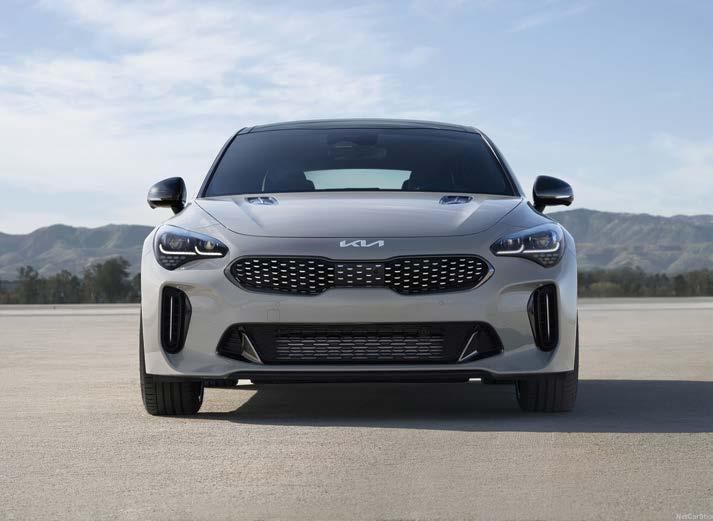



By Paul Hughes Autobody News
California Gov. Gavin Newsom vetoed two key bills at the end of September, giving collision centers breathing room on new rules that separately would have amped up future shop work required on Advanced Driver-Assistance Systems (ADAS) and electric vehicles.
The state’s 2024 legislative session saw passage of SB 615 and SB 961. The first would have mandated the proper disposal of EV batteries, overseen by a state agency. The second would have required, in 2030 or later models, that most vehicles come equipped with ADAS tech alerting drivers when they exceed posted speed limits by 10 mph.
Both were approved handily in the legislature, both turned back by the chief executive.
Speed Limiter Alerts Likely to be Left to Feds
at this time risks disrupting these ongoing federal assessments.”
This is also why the Specialty Equipment Market Association (SEMA) opposed the bill.
“It’s a federal jurisdiction,” said Karen Bailey-Chapman, SEMA vice president of public and government affairs. “It’s their role to set vehicle safety standards.”
Bailey-Chapman said the trade group’s general approach on ADAS and other vehicle technology issues is that new regulations — standards,
“Our components need to be able to talk to the systems, to calibrate correctly, so they continue to function,” she said.
Bailey-Chapman noted the aftermarket is where much new technology takes its debut bow, with manufacturers devising possible enhancements that sometimes eventually become new standards and mandates. “We are the innovators,” she said.

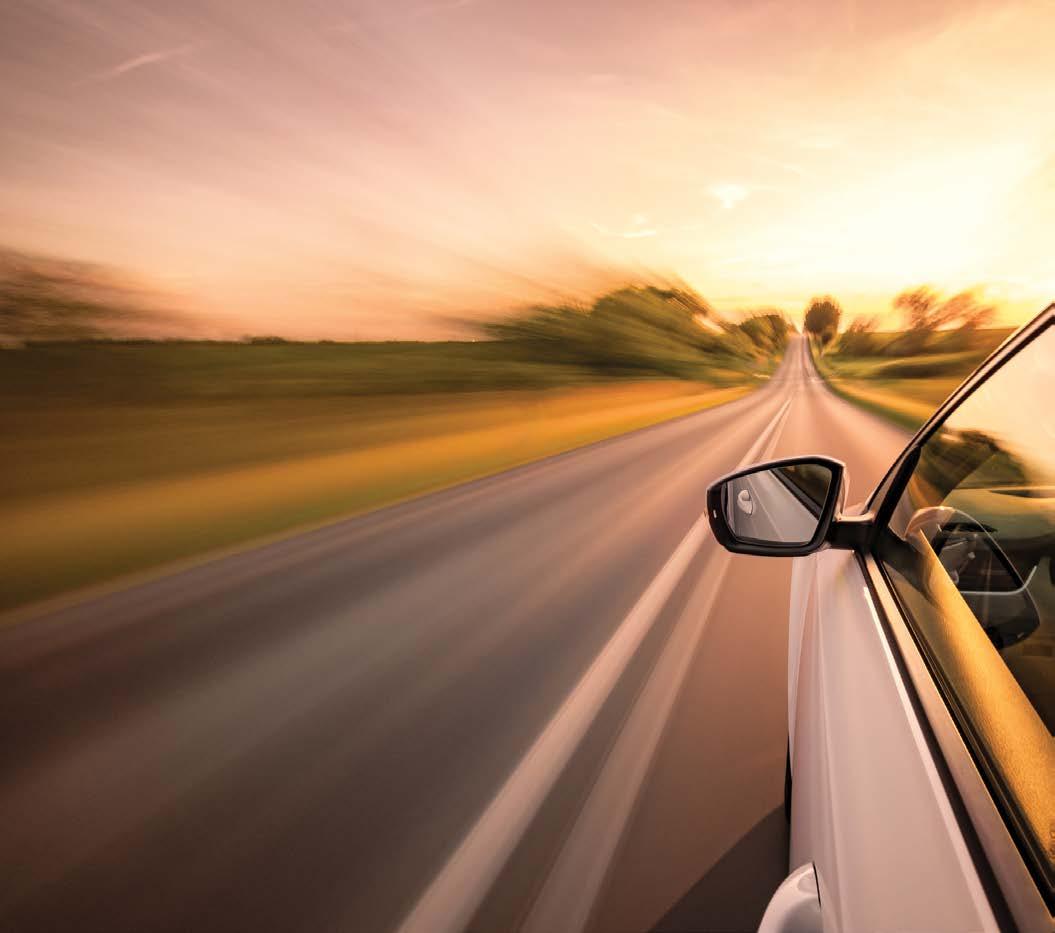
In vetoing SB 615, Newsom expressed support for the concept but indicated he wanted battery recycling to skew more decidedly toward “a producer responsibility organization” (PRO), a recycling term for manufacturers. A framework known as EPR — for “extended producer responsibility” — means product makers accepting more obligations to design, pay for and run recycling programs.
This approach has been gaining steam in California. Legislative sources Autobody News talked with
referenced a 2022 bill pertaining to the plastics industry as a recent model for this. Final regulations for SB 54, the Plastic Pollution Prevention and Packaging Producer Responsibility Act, are expected Jan. 1, aimed at reducing plastic waste, establishing minimum content standards on packaging, and requiring $5 billion in expenditures over 10 years, affecting up to 13,000 manufacturers. Food and drink makers and other packagers — Coca-Cola, PepsiCo, Amazon, Walmart, General Mills, Nestle, P&G — are the PRO.
SB 54 compares to the battery recycling push, said Jack Molodanof, a lobbyist who works with the California Autobody Association (CAA) on legislation and regulation. “Sounds like producer-responsibility — the governor’s pushing for it,” he said.
SB 615 co-sponsor State Sen. Benjamin Allen, through a spokesperson and via email, seemed amenable.
“While I am disappointed by the veto, we believe we are close to a workable solution to a serious problem,” he said. “I would like to reintroduce the bill and am looking forward to meeting with the


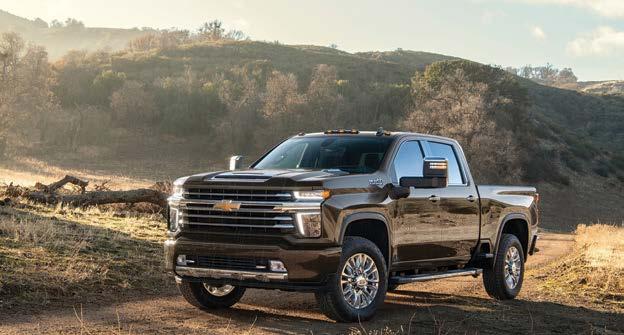






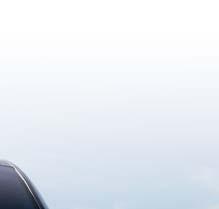




Genuine Kia Parts* are specifically manufactured from original engineering specs to ensure the same exceptional quality, performance and safety as when you first drove your Kia off the lot. Plus, they’re covered by our 12-month Replacement
Concord Kia
Concord (888) 811-3058 (925) 685-2952 Fax
M-F 8am - 5:30pm Sat 9am - 1pm
Hayward Kia
Hayward (510) 999-8432
M- F 8am-5pm Sat 9am-4pm slparts@carnamic.com
Rosesville Kia
Roseville (916) 783-8129 (916) 783-1005 Fax
M- F 7am-6pm Sat 8am-4pm parts@rosevillekia.com www.rosevillekia.com
AllStar Kia
San Bernardino (909) 763-4755 (909) 763-4744 Fax
M-F 8am - 6pm Sat 8am - 2pm parts@allstarkia.net www.allstarkia.net
Car Pros Kia Glendale
Glendale (818) 745-1103 (818) 244-0017 Fax
M-F 7am - 6pm duncan@carpros.com


Car Pros Kia
Huntington Beach
Huntington Beach (714) 274-6178 (714) 847-4410 Fax
M-F 7am - 6pm Sat 8am - 4pm jasonr@carpros.com
Citrus Kia
Ontario (800) 583-7042 (909) 390-0948 (909) 390-0982 Fax scunningham@citrusmotors.com www.citrusmotors.com
M-Sat 7am - 6pm Free Local Delivery Ask for Ike, Jimbo, Chris, Juan, Sean, Jeff Se Habla Español
Covina Kia
Covina (626) 736-4291 (626) 736-4294 Fax
M-F 7am - 8pm Sat 7am - 5pm parts@covinakia.com
Kearny Mesa Kia
San Diego (800) 635-6669 (858) 560-5033 (858) 560-9648 Fax
Largest wholesaler in San Diego with 17 delivery trucks
Kia of Alhambra Alhambra (626) 289-7803 (626) 289-8807 Fax kip@kiaofalhambra.com
Kia of Carson Carson (310) 221-9101 (310) 507-8595 Fax
M-Sat 7am - 7pm Sun 8am - 5pm www.KiaofCarson.com
Kia of Downtown LA
Los Angeles (213) 342-0923 (213) 342-0980 Fax M-F 7am - 7pm www.kiaofdtla.com
Kia of Irvine Irvine (855) 847-3592 (949) 777-2342 Fax
North County Kia
Escondido (760) 945-9939 (866) 888-3074 Fax parts@autogrp.com www.northcountykia.com M-F 7am - 6pm In San Diego Over 10 Years
Valley Hi Kia Victorville (888) 264-6075 M-F 7am - 6pm Sat 7am - 4pm smeyer@valleyhi.com www.valleyhikia.com
Jim Marsh Kia Las Vegas (877) 274-3820 (702) 946-6084 Fax M-F 8am - 6pm Sat 8am - 2pm johnd@jimmarshauto.com
Towbin Kia
Henderson (702) 868-1234 (702) 567-0037 Fax M-F 7am - 6pm Sat 7am - 4pm jmoore@towbinkia.com www.tkwholesale.com
Car Pros Kia Renton Renton (425) 204-6635 (425) 793-3889 Fax M-F 7am - 6pm Sat 8am - 5pm jgaeir@carpros.com
Lee Johnson Kia Kirkland (425) 823-0188 (425) 284-1790 Fax M-F 7am - 5:30pm Sat 7am - 5pm tthompson@leejohnson.com
By Abby Andrews Autobody News
The California Autobody Association’s San Diego chapter is coming back to life after lying dormant for several years post-pandemic.
The chapter has now held two meetings this year – its first two since 2019. The first was in May, and the second was held Sept. 24 at Admiral Baker Golf Course, sponsored by 19Industries.
Members reviewed the notes from a “Who Pays for What?” meeting the chapter held in 2018, comparing progress local collision repairers have made in getting paid by insurers in some areas, while identifying new pain points that have since developed.
Chapter President Juan Martinez, who owns European Coach Works in San Marcos, CA, led the meeting, along with members Hop Sanchez, sales manager for Martin Auto Color; Luke Burger, senior solutions specialist with Mitchell; and Daniel Carrillo of Carrillo and Sons Collision in San Diego.
“It’s asking the body shops that are in the room: what are they encountering? What are they seeing? What are they not getting paid for?”
Martinez said.
Refinishing material calculators (RMCs), like in Mitchell’s Cloud Estimating system or EagleMMS, is a more accurate way to calculate how much material goes into a paint job.
Rather than using an older multiplier formula in invoicing systems, RMCs use a per-ounce formula to submit to insurance companies for payment.
Martinez acknowledged some DRP agreements do not allow shops to use RMCs – and body shop owners in the room confirmed they all had one or two DRPs that would not — but otherwise, he recommended using one.
“I use it, it works, I get paid, I don’t have a problem with it,” he said.
Using an RMC can protect a shop from legal trouble with the California Bureau of Auto Repair (BAR), as it has been identified by law as an “industry standard method” for charging for refinish materials.
Martinez explained that if an insurance company files a complaint on behalf of its customer about a shop’s invoice with the BAR, a shop using an invoicing system will lose.
“The reason you will lose is
because the invoicing system alone is not considered industry standard — it’s considered bait and switch,” Martinez said.
When the invoice is created using an RMC, it bases it materials calculations on the specific paint line the shop is using. It also takes into account materials like sealers, fillers and sandpaper.
“When your customer signs your work order, if you have an RMC from the gate, then you’re golden,” Martinez said.
When the first “Who Pays for What?” meeting was held in 2018, Martinez said, a lot of shops weren’t using OEM procedures to research repairs.
In the past six years, more shops are doing so, especially after they became more successful in getting insurers to pay for the time required to do the research. Most shop owners in the meeting said they are now being paid to research OEM repair procedures.
One owner said they only charges non-DRP insurers, because their shop’s DRPs won’t pay.
Clear coat needs to go “up and over”
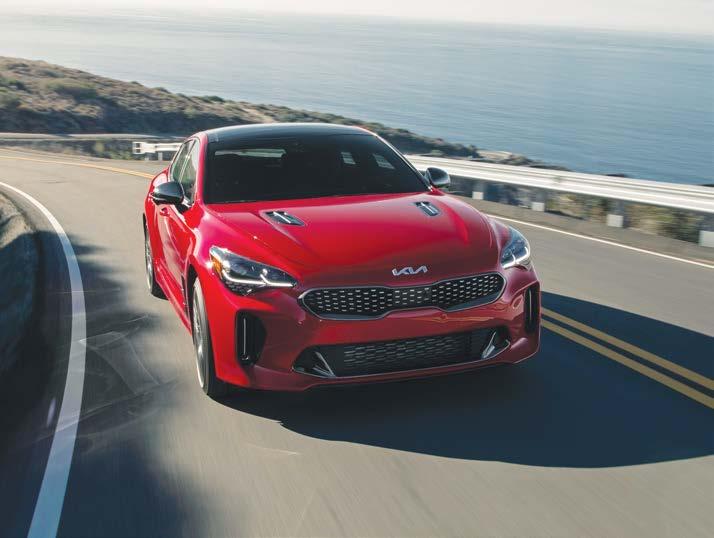
to the next natural break or it won’t be covered under warranty if it starts to delaminate due to UV exposure, Martinez said.
One shop owner said they doesn’t see it as a big issue, as their shop doesn’t see those types of warranty claims, but Martinez said he has worked at a shop that was getting claims on paint jobs it had done 20 years earlier.
“I think it just is demographical based on the community where you’re at,” he said.
In 2018, not a lot of vehicles had aluminum panels, but in 2024, more shops are seeing it.
One shop owner said their shop replaces more aluminum than it repairs, because it’s “so flimsy.”
Another shop owner agreed, but said when they do repair aluminum, they charge double the labor rate.
Martinez said he ran a body shop consulting company before opening his shop in San Marcos. He trained shop owners and estimators on how to negotiate with insurance companies.


“I trained them on how to the tactics that the insurance carriers were going to use against you — how they’re trained to use psychological terms, how to make you feel bad for charging for things or try to make you feel better for charging for things, how to use the day’s hours against you, how to manipulate the conversation into paying less for everything,” Martinez said.
He recommended finding a course, perhaps at a local community college.
One shop owner asked how to deal with “desk reviews” of supplements, which often don’t give the shop a chance to negotiate. Another shop owner suggested documenting every line item with thorough notes and photos to justify the supplement.
Martinez said shops also aren’t required by the BAR to copy the insurer’s initial estimate; they can write their own after disassembly.
Martinez asked how many shops in attendance get pushback from insurance companies performing necessary procedures on ADAS features.
One owner said their shop is “getting paid for everything,” but they have different rates with different
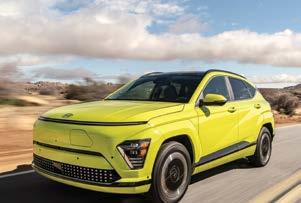


Another said they “do different things depending on who [the customer’s] insurance carrier is and what ADAS is on their car.” For instance, a 2017 model with no ADAS features will get an aftermarket scan, but a 2022 Subaru with all the bells and whistles will get an AirPro scan that uses the OEM information.
EV batteries will start to degrade if they sit uncharged in a shop for weeks waiting on repairs. Martinez recommended every shop invest in a battery charger to prevent that.
Even when the repair is complete, some systems cannot be correctly “read” if the battery voltage is too low.
“You’ll get a clean health check, the car goes down the road and then, once the battery cycles up to where it needs to be, it comes on when the customer is 30 miles away. That’s a quality issue,” Martinez said.
Keeping the batteries charged also prevents the repairer from needing to buy a replacement.
Martinez encouraged all San Diego-area repairers to join the CAA. Members receive regular information, including updates on proposed legislation making its way through the California Assembly and
Senate. Banding together as a larger group also gives all repairers more of a chance of influencing the legislators voting on bills.
He spent a part of the meeting reviewing some of those bills currently up for consideration.
SB 615: This bill, among other things, requires automotive repair dealers who remove EV batteries from a vehicle for repair, remanufacturing or recycling to ensure the battery is disposed of properly, adhering to the end-of-life requirements specified in the legislation.
The bill was passed by both the California Assembly and Senate on Aug. 31, and was scheduled to be presented to Gov. Gavin Newsom on Sept. 11. The CAA has concerns.
AB 518: This bill would expand the definition of “family member” for purposes of the Paid Family Leave Program to allow workers to take time off to care for a seriously ill designated person.
The bill was scheduled to be presented to Newsom on Sept. 12.
Martinez said most members of CAA are small business owners who struggle to pay for labor when employees are not physically in the shop performing it.
AB 2751: This bill requires employers to establish a workplace policy that provides employees

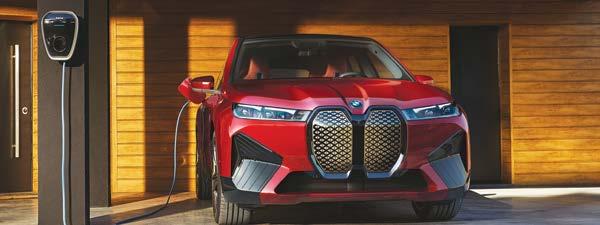
the right to disconnect from communications from employer during nonworking hours. CAA is concerned about the bill. It has been held in an Assembly committee since May.
AB 2188: This bill would create an exemption allowing owners of newer vehicles, no older than five years, to replace a stolen catalytic converter with a similar federal EPA compliant model, rather than a California ARB compliant converter.
CAA supports this bill, which has been held in an Assembly committee since February.
“This is a really good one. It would speed up your cycle time,” Martinez said.
SB 961: This bill requires 50% of certain vehicles, beginning with the 2030 model year, to be equipped with an intelligent speed limiter that would alert the driver when the vehicle’s speed is 10 mph over the speed limit. It is currently being held in an Assembly committee.

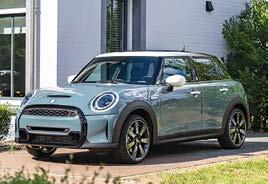
BMW of San Diego
San Diego
858-223-5060
858-277-7928 Fax
M-F 7am-6pm Sat 9am-2:30pm jwood@penskeautomotive.com
Century West BMW North Hollywood
818-432-5819
5596 N. Blackstone Ave. 800-462-2231
559-436-6041
559-436-0743 Fax Mon-Fri 7am - 6pm; Sat 8am - 4pm etaylor@lithia.com
818-769-1520 Fax
M-F 8am-6pm Sat 8am-5pm eperez@centurywestbmw.com
New Century BMW Alhambra
626-576-2867
626-457-2027 Fax M-F 7am-7pm Sat 8am-5pm jason.rodriguez@ncbmw.com www.ncbmw.com
818-452-1219
818-508-5082 Fax M-F 8am-5pm Sat 8am-5pm allanv@miniuniversalcity.com
The California Bureau of Automotive Repair (BAR) is holding a regulatory workshop on proposed storage and towing fees for automotive repair dealers, including collision repairers, 2-4 p.m. Oct. 17.
The workshop is open to the public and will be held inperson at the Department of Consumer Affairs, Evergreen Hearing Room, 2005 Evergreen St., Sacramento, CA 95815.
It will also be available via teleconference and webcast. For information on how to watch, visit www.bar.ca.gov/publicworkshops/202410-Storage.
This is BAR’s third public workshop to discuss the proposed regulations on storage and towing fees charged by automotive repair dealers, which would bring together and clarify existing statutes governing storage and towing fees as authorized by AB 1263.
BAR held previous public workshops in April and July.
Jack Molodanof, a business

law attorney and lobbyist on automotive and body shop issues, told Autobody News in an interview, “This is kind of a big deal for California shops.”
The proposed new regulations would require shops to set a storage rate and maintain it unchanged for one year; get guidance on setting towing and
“The economics of my business are so, so much different,”
GARY HERNANDEZ OWNER, MARTINEZ AUTO BODY
storage rates; provide access to stored vehicles; not charge storage fees while cars are repaired; present an itemized list of storage fees charged; and require vehicles be stored at the shop’s place of business or meet guidelines when storing it somewhere else.
During the July workshop, Molodanof said that requiring shops to maintain the same rate for a year would be “unreasonable” because of varying factors throughout the year — labor, rent, insurance — that could affect this.
Gary Hernandez, who owns Martinez Auto Body in Martinez, CA, said during the same workshop he had to buy residentially zoned land to store vehicles for “excess work or a [project] waiting for parts” to arrive. “The economics of my business are so, so much different,” than a storage facility, he said.
Hernandez said the proposed new regulations would steadily bring average rates down, meaning shops would have to regularly lower their fees. It would also influence what insurance companies will be willing to pay for storage.
The process doesn’t require new legislation. BAR is authorized to set new regulations after review and public comment.



Department [of Toxic Substances Control] and others soon to see what needs to be tweaked and to chart out the best path forward.”
Molodanof expects a bill and said CAA wants to work on one.
“We’ve worked with Sen. Allen in the past; his office is very open to listening to concerns,” Molodanof said.
“Right now they’re being returned to the manufacturer anyway,” he said of the batteries. “Recycling is going to happen.”
A new bill seems likely to include more EPR.
California Nearly Never Overrides a Governor’s Veto
One bill unlikely to be seen again is SB 961.
“The governor says ‘it’s a federal thing, so let’s move on’,” Molodanof said.
Also unlikely: an override of either veto.
The Senate has 60 days to try, through the end of November, but the legislature isn’t in session. There are enough votes, but overrides are deemed highly unlikely; none have occurred in the state since 1979.
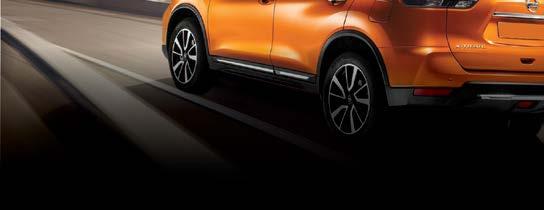




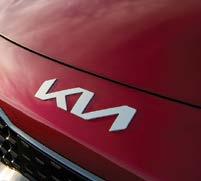
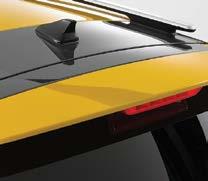
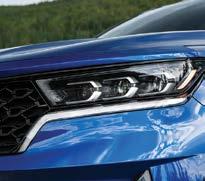
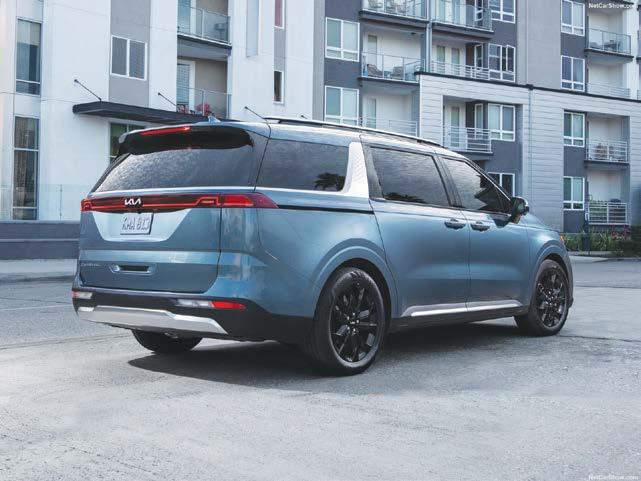
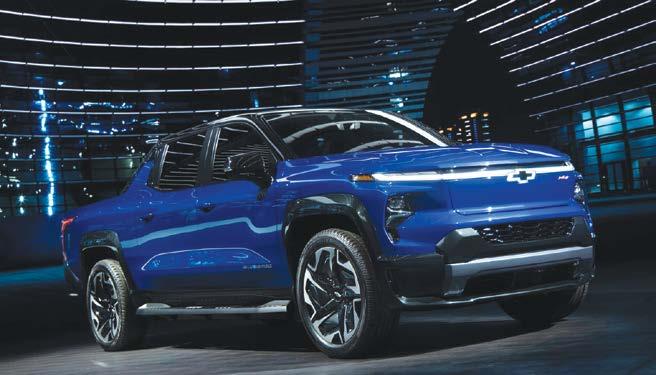
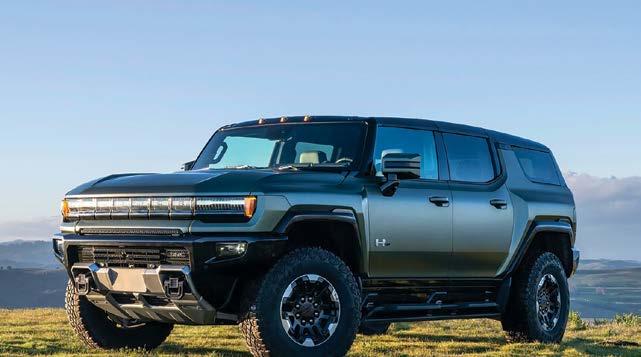
American Chevrolet MODESTO
209-491-7810
209-575-2564 Fax
M-F 7:30 am - 5:30 pm Sat 9 am - 2 pm gmparts@americanchevrolet.com www.americanchevrolet.com
Blackstone Chevrolet Wholesale Parts FRESNO
559-438-5875
559-438-4345 Fax
M-F 7:30am – 5:30pm Sat 8am – 4:30pm bharman@blackstonegm.com
Chase Chevrolet STOCKTON
209-475-6620
209-475-6708 Fax
M-F 7am - 5pm Sat 7:30am-4:30pm cesar@chasechevrolet.com
Dublin Chevrolet Cadillac Buick GMC DUBLIN
925-828-8251
925-829-2941 Fax
M-F 7am - 6pm dublinchevyparts@cacargroup.com www.dublinchevrolet.com
FH Dailey GM Parts Center
SAN LEANDRO
800-4A-GMPART
510-351-0534
M-F 8 am - 5 pm Sat 8 am - 4 pm parts@fhdailey.com www.fhdailey.com
Michael Stead Cadillac
WALNUT CREEK
925-934-5022
925-934-0336 Fax
M-F 8 am - 5 pm Sat 8 am - 3 pm steadparts@gmail.com
Courtesy Chevrolet SAN DIEGO
800-336-1404
619-297-4023 Fax
M-F 7am - 6pm Sat 8am - 5pm www.courtesysandiego.com
Paradise Chevrolet VENTURA
888-5-CHEVY-5 (888-524-3895)
805-642-0134
805-644-7214 Fax
M-F 7:30am - 6pm Sat 8am - 3pm


626-795-6872 Fax M-F 7:30am - 6pm Sat 8:30am - 2pm parts@thorsonmotorcenter.com
406-896-3111
406-896-3924 Fax M-F 7 am - 6 pm tsoltis@dennymenholt.com
Corwin Buick GMC RENO
775-333-8777
775-322-1837 Fax

M-F 8am - 5:30pm ahardie@corwinauto.com www.corwinbuickgmc.com
Michael Hohl Motor Company CARSON CITY
775-884-8619
775-884-8645 Fax
M-F 7 am - 6 pm Sat 8 am - 5 pm gmparts@michaelhohl.com
Camp Chevrolet
SPOKANE
509-456-7860
509-458-3792 Fax
M-F 7:30am - 5pm zacharydeason@lithia.com www.campchevrolet.com Nevada

By Toby Chess Autobody News
It has been nearly a year since I found some new and improved tools at the last SEMA Show. If you are at SEMA this year, take a few minutes to check out these tools in person.
I purchase these tools, most of the time, and I do not get paid or take any compensation from sales. There are competitors with similar items and you may want to do your homework before purchasing. If anyone has a similar product, send me an email; I would like to check it out. Moreover, if anyone has a neat new tool, I would like to hear from you.
I recently wrote about Car-Rep’s 2K Epoxy Primer. It is a true 2K material. When one sprays the product, moisture in the air will mix with the catalyst, and that starts the crosslinking process. The product has a 3-year shelf life and it is at the right price point.
Since the last time I wrote about this new technology, the company came out with two different products, a top coat (three colors) and DTM primers (five colors). Both are 2K epoxies.
Requiring no primers or clear coats, Car-Rep 2K Top Coats are easy to apply and are the only 2K Top Coats which require no mixing and feature unlimited pot life. They are
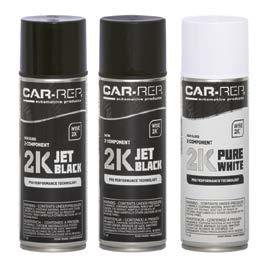
available in high gloss jet black, satin jet black and high gloss pure white.
The other products from Car-Rep are OEM match DTM primers. Same technology, 2K epoxy primer. There are five colors to match OEM colors: light green, olive green, black, white and gray.
Polyvance has a hot air welder for $600. It’s a great starter tool for a shop that has no plastic bumper

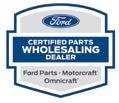

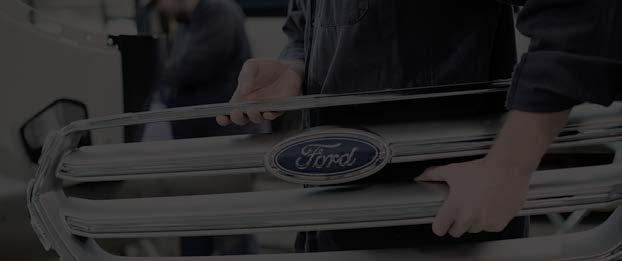
welder. They also have a bumper pliers kit that makes repairing broken tabs much easier.
Technicians often have difficulty restoring the correct dimensions of the slot, which is critical for proper bumper installation. This kit will allow the tech to quickly and accurately repairs torn slots and recessed bolt holes in automotive bumpers.
Last year, I showed a drill bit set from Astro Pneumatic. Everyone I have shown them to has gone to Amazon and purchased the kit.
At the same time, I purchased their in-line 4-inch Quick Change Cut-Off tool. It is one of the easiest tools to use to cut a straight line. (I also have the long corner grinder from Dent Fix,
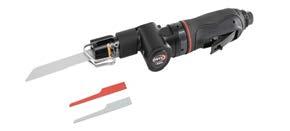
— less than $80 at Amazon — and you do not have to think twice about purchasing it.
I also purchased Astro’s #936 Onyx Gear Driven Heavy Duty Air Saw. I have seen the Snap-on air saw used on the structural steel test and it is one of the best, but it is a little pricey. The Astro air saw is just as good and sells for less than $150 on Amazon. I found a substitute cut-off disc at SEMA from Millner-Haufen Tool Co. I featured this 4-inch cut-off wheel in my SEMA tools report a few years ago. It is still cutting like when it was new. I used my Astro 4-inch cut-off tool with the Millner-Haufen 4-inch disc to cut some 3/16 metal and it sliced right through it. I also used it on a cinder block, as I was installing a fence extender on a cinder block wall. It also has a 40 grit surface on the side of the disc for grinding. Best of all, it has a lifetime warranty.
My next item is a specialty center punch for self-piercing rivets (SPRs).
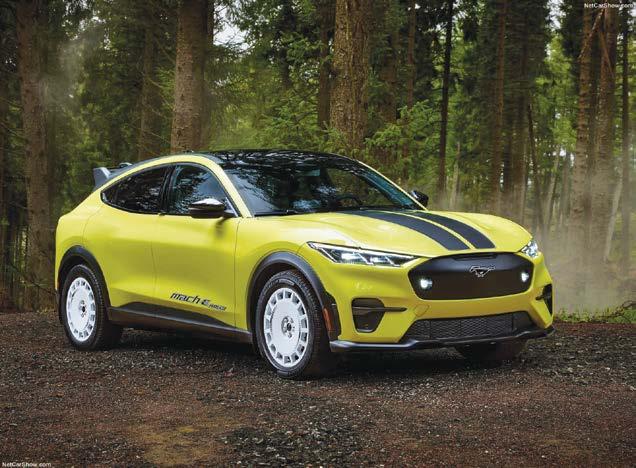
backside SPR. If it is not centered, there is a good chance of breaking the die, and they are not cheap.
A center punch tool was designed to remove SPRs. One end fits over a 3 mm installed SPR and the other end fits over a 5 mm rivet. The hardened spike is hammered on the end, forming a dimple in the backside of the SPR. Now the extraction tool spike is placed over the rivet and pushed out the front. I purchased mine from Reliable Automotive Equipment.
Next, a tool every technician should have in their tool box: a leather leadshot dolly. When hammering from the back side of the part, this dead blow, non-marring dolly will not leave any of the panel damage you would get with a traditional steel dolly. Mine is made by Majestic Hammer & Dollies, and I purchased it from online retailer Tool Source for less than $70.
It is amazing how one company changed the way we repair major panel damage. I was with Dale Matsumoto in Hawaii in 2018 when he told me about KECO. He said he could pull out large dents with glue. I thought he was crazy until I watched him use the glue tab system to pull out a large dent on a Toyota Tacoma
without removing the paint. I was at SEMA in 2018 and found Chris White, owner of KECO, in a small booth in the middle of nowhere. I bought the kit — I still have it — and proceeded to make it a Kool Tools of SEMA 2018 after using it on a number of vehicles. Six years later, a couple of OEM certification programs state that a glue dent pulling system equivalent to KECO’s is required.
In my opinion, there a number of
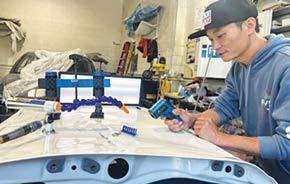
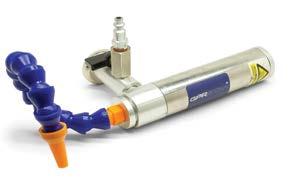



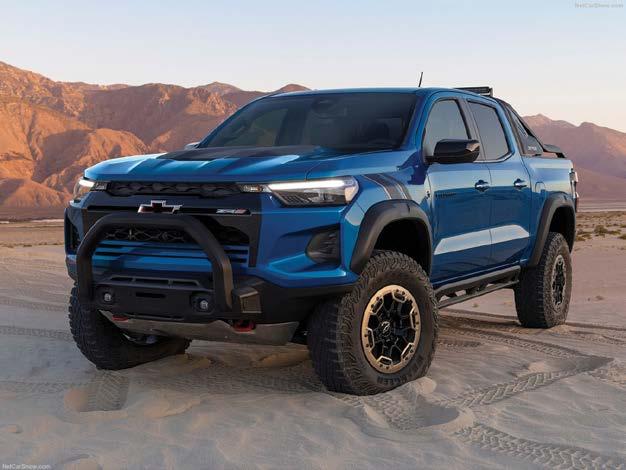
very good glue dent pulling systems, but KECO is at the top today and here is what sets them apart. KECO has three fulltime engineers designing and producing new equipment, tools and tabs. The company will do extensive testing before releasing the products. They give a lifetime warranty on most of their tabs.
Finally, they listen. They have a tool that will pull out door, fender and quarter panel lips. I pulled out a quarter panel with the leverage bar and proceeded to bend the steel part of the puller. I welded a spline on it and it worked OK, but I told the company it needed to be stronger and have a larger lip. I received the updated version and it still would bend. Again I told Chris White, and he sent a new one to try. It worked like a charm.
Enough of the background info. I want to show a couple of new KECO tools.
The first tool is the GPR Star Vortex Cooler. The biggest complaint I get from techs is it takes too much time for the glue to set up for pulling. This tool will accelerate the glue set-up time to about two minutes. It has a magnet attachment so it can be set up without anyone holding it. It only works for steel parts. The only caution is the glue can get too cold and fracture, which leads to a tab
failure.
The other tool is the KECO K-Tower. There are a number of these new towers that use air to create a vacuum seal to hold the tower in place for pulling. You have the GUNIWHEEL Fast Puller XL, GYS’s AirFix Draw Aligner, Pro Spot International’s VacU-Pull, Spanesi and KECO’s.
I have tried all of the above towers, and each work as advertised. What set apart KECO from the rest is its tower articulates to the left and right, whereas the other units are secured to the base and cannot be moved once the tower arm is tightened down. The articulating tower gives the tech a more precise pull that is faster than the stationary towers. It also has a larger base, and I was told this allows for a stronger pull. KECO has a number of accessories that give the unit more versatility.
There are a number of new tools and products that will help you speed up production and improve the quality of collision repairs. If you have ideas, procedures or tools that will make a difference, send them to me and I will get it out to all the readers of Autobody News. Remember we are all in the same boat and if we can help each other, the consumer will be the winner. Have a great time at SEMA. Toby Chess can be reached via email at tcspeedster@gmail.com.
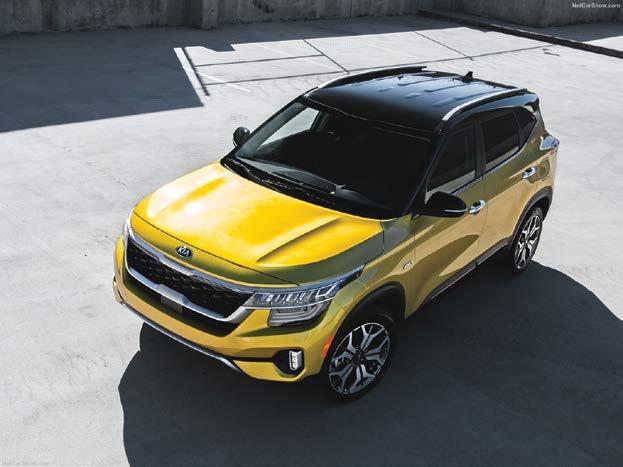




By Elizabeth Crumbly Autobody News
An unexpected contribution has bolstered an education program nurturing bright-eyed new talent through the industry pipeline. San Diego-based Mitchell, a company that specializes in claims technology solutions, recently announced a $1.5 million in-kind donation to the Collision Engineering program, which serves students at seven colleges across the nation.
“What a surprise it was to receive that donation from them,” said
Advanced software like this, Mahoney said, can be difficult to integrate into a curriculum because of the training needed. To curb that challenge, Mitchell is providing ondemand training for instructors, along with product guidance and live webinar training sessions for students hosted by Mitchell trainers.
The technology should go into use in the next few months: Instructors, Mahoney said, are “ecstatic.”
“They were so excited, and they just saw so much more value for the student, and so much more

Mary Mahoney, vice president for Enterprise Mobility, which launched the Collision Engineering program in partnership with Ranken Technical College in St. Louis, MO. The program includes eight weeks in the classroom and another eight in a body shop apprenticeship.
“They are a valuable partner of ours,” she told Autobody News of Mitchell. “They believe in the mission. They believe in trying to build, recruit, coach and develop that next generation of collision repair technicians.”
‘So Much More Opportunity’
The donation, Mahoney explained, will provide more students with access to its advanced technology solutions, including Mitchell Cloud Estimating with Integrated Repair Procedures and Mitchell TechAdvisor.
New vehicle innovations mean body shop technicians need software knowledge alongside collision repair skills. Through Mitchell’s technology donation, students receive realworld experience using the same advanced solutions as collision facilities do today to restore vehicles to pre-accident condition, she said. Students’ access to the system in the program will enhance the employability of graduates.
offer,” said Karina Badillo, a College of Lake County CEP graduate. “When I first started college, I bounced around through welding and through automotive technology, but they didn’t have a program that was similar to this … you can really connect the bookwork to the actual hands-on experience that the real world has to offer … It is really nice being able to have a team behind you.”
Expansion means the need for more industry collaboration and partnership.
Enterprise Mobility Foundation has provided most Collision Engineering funding thus far, Mahoney said, with expenditures per student coming in at just over $10,500. That number covers tools, PPE equipment books and other supplies.
The foundation also funds school needs like instructors and training equipment, and it subsidizes student pay during their shop participation by adding to the amount employers can provide. Additionally, funds support the professional and personal development of students and their mentors.
“We want these students to understand how to operate successfully in a work environment, and develop strong relationships,” Mahoney explained. “The idea is to help build a culture where people feel more comfortable. That has been a wonderful add, and people want more of that.”
A significant contributor has been the Ford Fund, which provided nearly half a million dollars allowing the collision program at Parkland College in Champaign, IL, to continue and relaunch as Collision Engineering.
Westmont, IL-based MSO Crash Champions has hosted program apprentices in shops, and CEO Matt Ebert has made the program the company’s charity of choice for an annual fundraiser, Mahoney said. AAA Northern California has also committed to contributions to the program, including vehicle donations.
“Our goal now is building off what we have learned and continuing to expand. What we recognize is we can’t do this alone, and we are looking for everyone in the industry to join the movement,” Mahoney said.
opportunity to inspire them and give them more confidence,” she said.
The Collision Engineering program began as a pilot endeavor in 2020 at Ranken and has since spread to seven colleges, including, most recently, Sandhills Community College in Southern Pines, NC. Since launching, the CEP has graduated 165 students, Mahoney said, and it maintains roughly an 87.5% retention rate.
A focus moving forward is on which schools to bring into the program and how to continue financial support for students and the colleges currently participating. Bringing more women into the program, and thus the industry, is also close to the forefront.
“They feel this environment is more comfortable for them,” she said. “We have 15 women that are either in the program now or have graduated, and those are the kind of the comments we’ve gotten from them.”
Indeed, feedback from women graduates has reflected positively on the support and structure the program offers.
“When I was picking a career, I knew I wanted to be passionate about it, but I also wanted to make an impact and the trades had that to
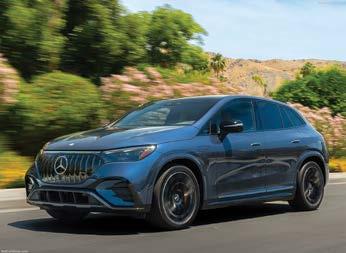

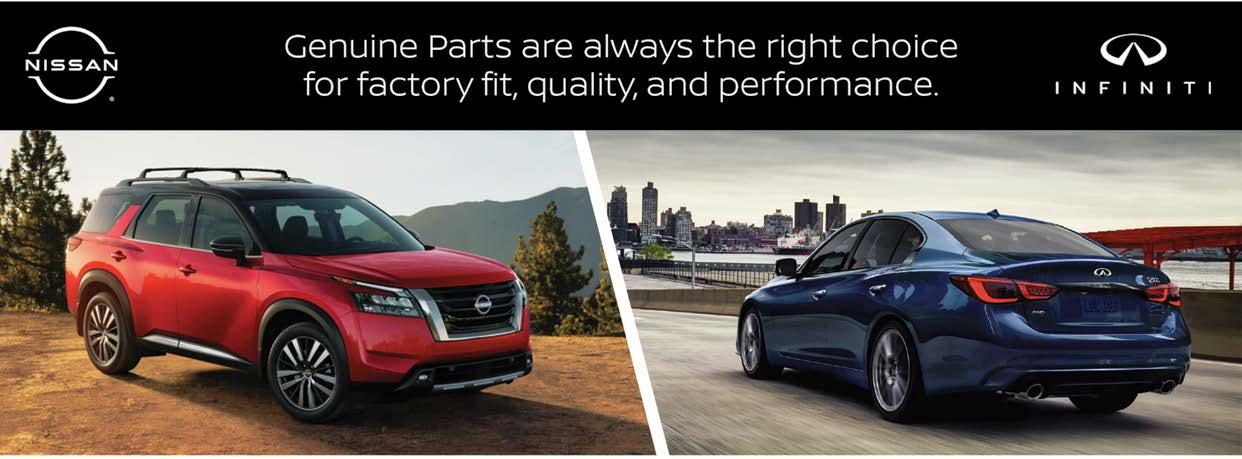
SO. CALIFORNIA
DOWNEY NISSAN
Downey 562-334-1188
(562) 334-1195 Fax
M-F 7-5 wholesaleparts@downeynissan.com
MOSSY NISSAN
ESCONDIDO
Escondido
888-292-0402 (760) 746-4300 (760) 739-5794 Fax
M-F 7:30-5 RonH2@mossy.com jlevitt@mossy.com
NISSAN OF BAKERSFIELD
Bakersfield 888-402-6915 (661) 835-0389 Fax M-F 7-6, Sat. 8-5 www.nissanofbakersfield.com
NISSAN OF VAN NUYS
Van Nuys
818-374-4421
(818) 787-8400 (818) 908-9520 Fax
M-F 7-6:30, Sat. 7-6 wholesaleparts@vannuysnissan.com www.nissanofvannuysparts.com
TEMECULA NISSAN
Temecula
951-972-8430 (951) 972-8396 Fax
M-F 7-6, Sat. 7-6, Sun. 8-5 wholesaleparts@temeculanissan.com
NO. CALIFORNIA FUTURE NISSAN
Roseville
916-677-5251 (916) 786-0743 Fax M-Sat. 7:30-6 wholesale@futurenissan.com Parts.FutureNissan.com
LITHIA NISSAN OF FRESNO
Fresno
559-436-6040 (800) 870-7779
M-F 7:30-5:30, Sat. 8-4 ETaylor@lithia.com
NISSAN OF VACAVILLE
Vacaville
707-455-4527
M-F 7-6, Sat. 7-5 wholesale@vacavillenissan.com
SO. CALIFORNIA INFINITI OF VAN NUYS
Van Nuys 818-374-4493 (818) 787-8400 (818) 809-2727 Fax
M-Sat. 8-5
wholesaleparts@vannuysinfiniti.com www.infinitiofvannuys.com
MOSSY INFINITI OF ESCONDIDO
Escondido 888-292-0402 (760) 746-4300 (760) 739-5794 Fax
M-F 7:30-5
RonH2@mossy.com jlevitt@mossy.com
By Leona Scott Autobody News
As electric vehicles (EVs), especially battery electric vehicles (BEVs), become more common, collision repair shops face many challenges, such as managing high-voltage batteries, thermal runaway risks and complex diagnostics. Advanced tools, proper training and realtime access to OEM repair data are essential for safely handling BEV repairs and ensuring shops stay competitive.
In this question-and-answer article, Craig Edmonds, president of asTech, prepares repairers for
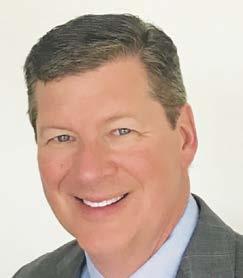
the challenges of repairing BEVs. In addition, we hear from a collision repair shop in Glendale, AZ, which is positioning itself as consumers’ goto repair solution for BEVs.
Q:As EVs become more common, how can collision repair shops address the unique challenges?
Edmonds: As EVs become more prevalent, collision repair shops face several challenges. A major concern is the complexity of high-voltage (HV) systems, particularly in battery electric vehicles. BEVs rely entirely on large HV batteries for propulsion, introducing safety and technical challenges during repairs. Unlike traditional internal combustion engine (ICE) vehicles, BEVs require specialized training and equipment to handle these powerful batteries safely.
One of the most significant challenges for repair shops is managing the HV battery, which stores substantial energy. Mishandling can lead to dangerous outcomes. Untrained technicians risk severe injury, while improper repairs could cause further damage to the vehicle. Another challenge is the risk of thermal runaway, where an unseen internal HV battery issue, such as
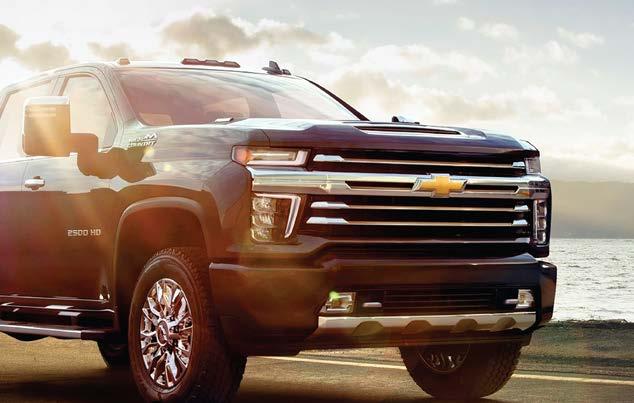




damage from an accident, could cause a fire. Shops must diligently monitor the battery’s condition, especially after a collision. What might look like minor damage to the battery shell could result in a catastrophic fire if not handled properly.
Moreover, BEVs depend on complex thermal management systems to regulate battery
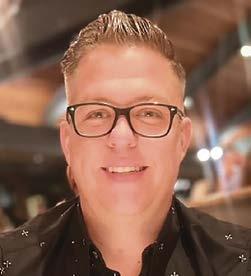
temperature. These systems must function correctly to avoid
understand and assess these systems during repairs to ensure battery health.
Technological tools can play a key role in identifying battery issues. Once it’s safe, performing an OEM or OEM-compatible pre-scan can provide insights into the battery system’s condition. However, while onboard diagnostics help, they don’t always capture physical damage sustained in an accident, so combining data from scans with a thorough visual inspection is essential.
Q: How important is it for shops to have a comprehensive repair plan when dealing with EVs, and what role do tools like asTech’s play in ensuring those repairs are efficient and accurate?
Edmonds: Developing a thorough repair plan is critical for any vehicle, but especially for BEVs. Their increased complexity means that even small mistakes can turn a repairable car into a total loss. Additionally, the rising costs associated with BEV components make precision in the repair process vital.
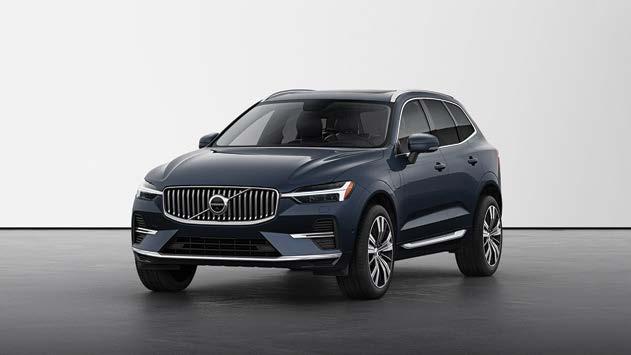

diagnostic methods to fit BEVs, helping their dealer networks avoid learning entirely new systems. However, newer BEV manufacturers are introducing more sophisticated onboard computers, integrating diagnostic tools directly into the vehicle. This shift requires technicians to adapt and learn to interpret data in new ways.
Tools like those provided by asTech can simplify this process. By connecting directly to OEM tools, shops can access the most up-to-date diagnostic procedures, ensuring technicians work with accurate data. These tools also help technicians understand complex reports and meet insurance carrier requirements, further streamlining the repair process.
Q:What are some key differences between traditional and EV repairs?
Edmonds: Safety is one of the main differences between traditional vehicle repairs and EV repairs. While conventional vehicles don’t pose the same level of risk, working on a damaged BEV introduces hazards like high-voltage electrocution or fire. Developing safety policies and ensuring all technicians are trained on BEV systems is essential. Shops cannot afford to take risks when it comes to EV repairs.
How can advanced diagnostic tools and real-time access to OEM repair data help shops avoid common issues?
Edmonds: Advanced diagnostic tools and real-time access to OEM repair data are invaluable for shops working on BEVs. Battery diagnostics and HV system repairs are complex and require up-to-date information. Before a BEV enters the garage, shops must have the right tools, equipment, training and repair data. Access to OEM repair data in real-time ensures that technicians know the latest procedures and can avoid common pitfalls in EV repairs.
Being “service ready” for BEVs means thoroughly preparing with the necessary knowledge, parts, and skills. Waiting until a BEV arrives to start learning puts the shop and its staff at significant risk. Instead, preparation is key to maintaining safety and ensuring accurate and efficient repairs.
Arizona Collision Shop Adapts to EV Repair Market by Being ‘Service Ready’
Leigh Vilcak, body shop manager at Sands Collision Center in Glendale, AZ, is preparing his team to work on BEVs. The facility has been partnering with asTech for many years, and its partnership has
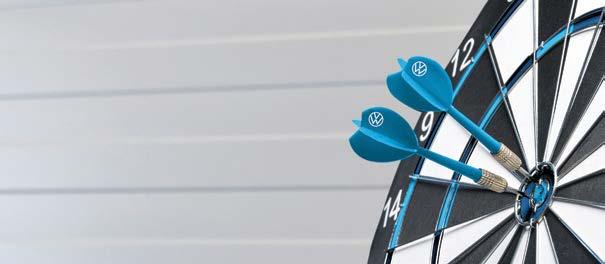
888 840-8416
Fax: 818-778-2090 www.galpin.com
626-577-0300
866-654-8591
Fax: 626-568-0387
M-F 7:30am-6pm; Sat 8am-6pm
Fax: 206-547-1581 M-F 7am-6pm parts@uvwaudi.com www.universityvw.com
encouraged it to be more “service ready.”
“At Sands, we’re just beginning to see BEVs enter our service department, though not many have come through the body shop yet,” Vilcak said.
Sands Collision is part of an automotive group that also owns Chevrolet and Kia dealerships. The collision center is becoming a GMcertified repair facility.
“Manufacturers are increasingly restricting the sale of BEV parts to non-certified shops, which has made certification a top priority for us,” Vilcak said.
In addition to becoming GM-certified, Sands Collision has significantly invested in upgrading its equipment. BEVs often come with heavier batteries, which require more substantial lift equipment. Sands plans to invest in a $68,000 frame rack to accommodate the structural needs of BEVs.
Vilcak said the body shop has created clean, dedicated areas for working on EVs, especially since many BEVs are made with aluminum. Aluminum is more susceptible to cross-contamination and galvanic corrosion, he explained, and it presents unique safety risks due to its explosive

tendencies in dust form. Therefore, high-voltage components and explosive dust are a huge risk when not properly handled.
Training has been a critical focus for Vilcak’s team. “We’re ensuring that our technicians are fully equipped, from using the correct safety gloves to learning how to store the large batteries that come with BEVs properly,” he said.
The collision repair industry must focus on continuous learning and adaptation. Although BEVs are gaining traction, they won’t dominate the market for several years. Meanwhile, hybrid vehicles will likely become more common as OEMs continue to develop and invest in them.
Repair shops must prioritize education and training in new vehicle technologies to remain competitive. Establishing standards for learning about electronics, advanced driver assistance systems (ADAS), programming and diagnostics is critical. By creating a strong foundation of knowledge in these areas, shops can ensure they are ready to service current and future vehicle technologies.
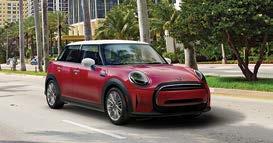
www.miniofsandiego.com


Co-President & Publisher
Nathan Gregory
Co-President & Publisher
Paul Stepanek
Editor
Abby Andrews
Contributing Writers
Mike Anderson, Brian Bradley, Elizabeth Crumbly, Paul Hughes
Stacey Phillips Ronak, Leona Scott
Ben Shimkus, Cole Strandberg
John Yoswick
Advertising Sales
Paul Ropski, Norman Morano, Steve Sklenar
Office & Media Manager
Kelly Cashman
Director of Digital
Bryan Malinski
Design Director
Vicki Sitarz
Art Director
Rodolfo Garcia
Accounting & HR Manager
Heather Priddy
Content Manager
Randi Scholtes
Serving Illinois, Iowa, Indiana, Kansas, Kentucky, Michigan, Minnesota, Missouri, Nebraska, North Dakota, Ohio, South Dakota, Wisconsin and adjacent metro areas. Autobody News is a monthly publication for the autobody industry. Permission to reproduce in any form the material published in Autobody News must be obtained in writing from the publisher.
©2024 Autobody News, LLC.
Autobody News P.O. Box 1516 Carlsbad, CA 92018 (800) 699-8251 (760) 603-3229 Fax www.autobodynews.com editor@autobodynews.com


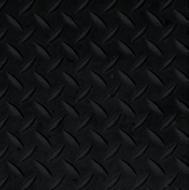

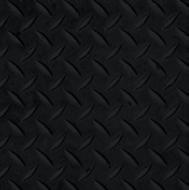
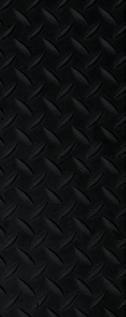

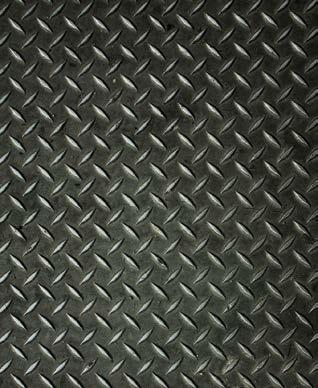

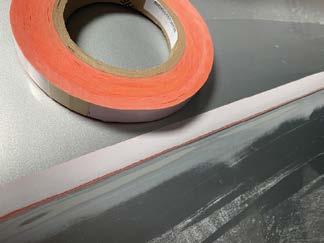



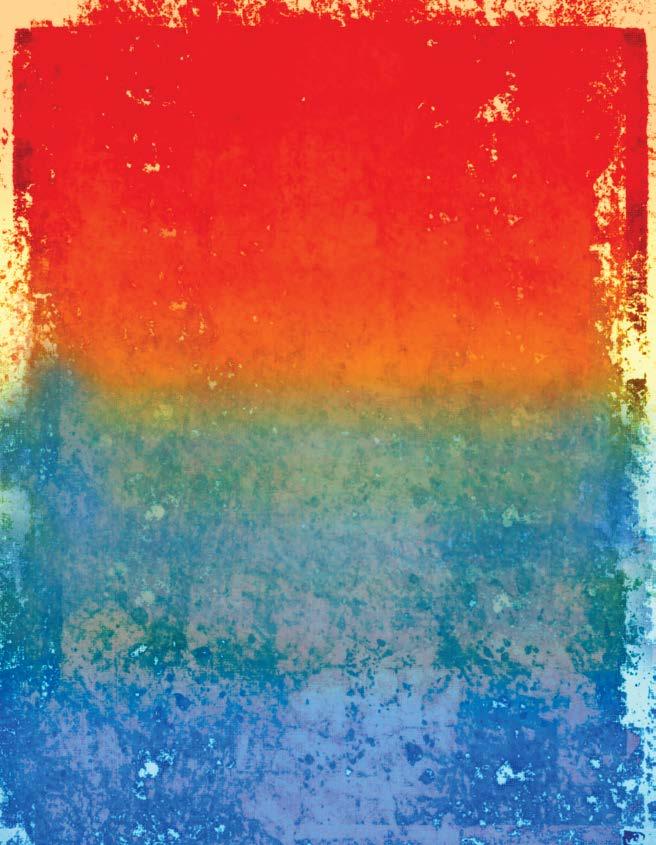




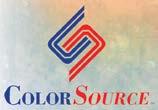




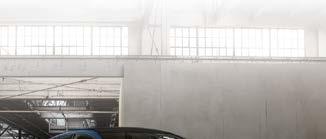
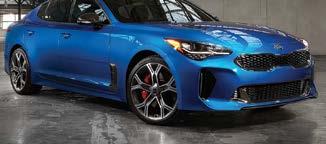





The Right to Equitable and Professional Auto Industry Repair (REPAIR) Act, (HR 906), did not receive the necessary committee markup to advance to the House floor.
The bill, which had been under consideration since last October, seeks to prohibit vehicle manufacturers from impeding a vehicle owner’s access to their vehicle’s data related to diagnostics and repair. It also would also prohibit automakers from impairing a nonOEM parts manufacturer from producing or selling compatible aftermarket parts.
According to House Energy and Commerce Committee Chair Cathy McMorris Rodgers, while the bill was not marked up, it still deserves recognition for the extensive groundwork laid by its proponents, including U.S. Rep. Neil Dunn of Florida and his team.
“I did want to mention one bill that we will not be considering today, the REPAIR Act, led by Dr. Dunn. I want to recognize the hard work that he, his staff and numerous stakeholders have done,” McMorris Rodgers said. “While we aren’t marking it up today,
a lot of progress has been made, and I would encourage members and stakeholders to keep working together to find a path forward on this important piece of legislation.”
as hosting lawmakers at businesses and running awareness campaigns.
“The groundwork you’ve helped lay for federal right to repair legislation will be instrumental in
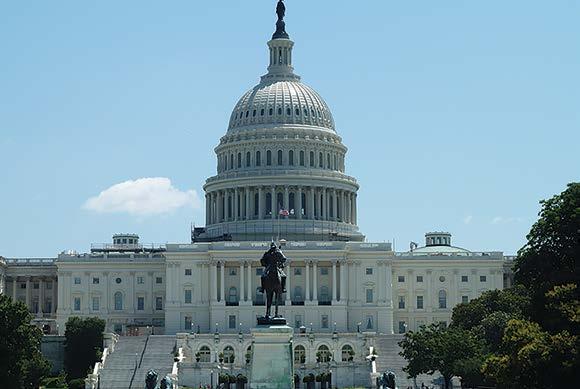
Advocates for the REPAIR Act have sent more than 100,000 letters to Congress, made more than 10,000 phone calls to representatives, and engaged in various grassroots activities such

our future success,” the Auto Care Association said in a statement on the bill.
The Auto Care Association said it plans to provide updates on next steps at the upcoming AAPEX event
in Las Vegas, NV. The bill can be reintroduced to Congress in 2025.
Opponents of the bill spoke at the Collision Industry Conference in July, including representatives of the Society of Collision Repair Specialists (SCRS) and the Automotive Service Association (ASA).
They said the organizations backing the REPAIR Act, including insurance companies and nonOEM part manufacturers and distributors, are more focused on the aspects of the bill that would give those companies the right to produce non-OEM parts and use them in repairs.
They also pointed out that SCRS and ASA already have a voluntary agreement with the Alliance for Automotive Innovation, which represents automakers, guaranteeing independent repairers have access to OEM tools and information.
Wayne Weikel, of the Alliance for Automotive Innovation, said his organization, along with SCRS and ASA, had been meeting with members of Congress to explain their position on the REPAIR Act.


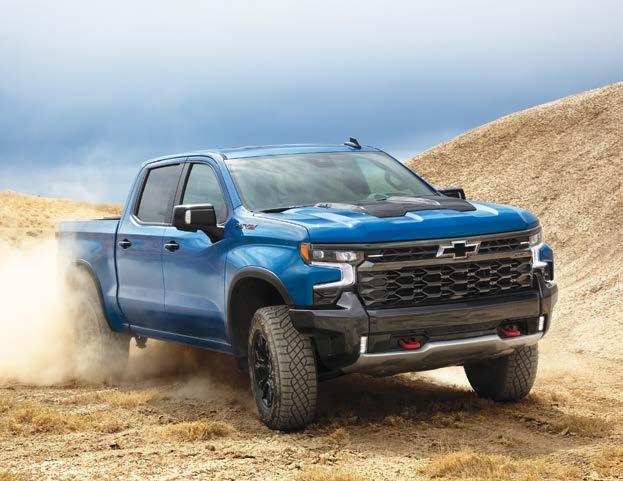




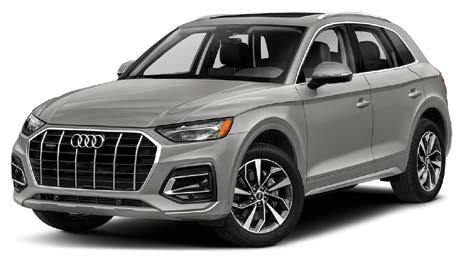





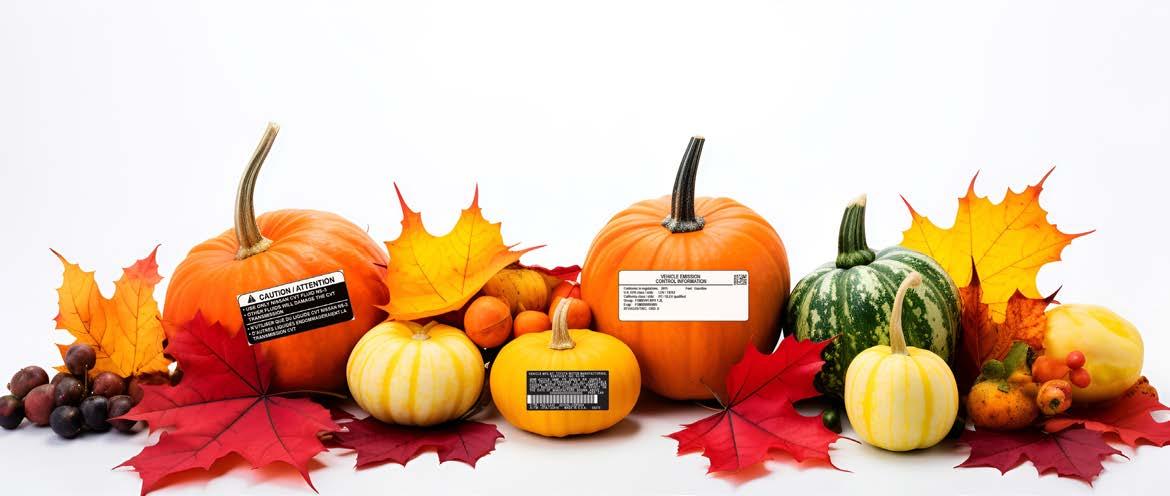
SRSSIDEAIRBAG COUSSINGONFLABLELATÉRAL (SRS)
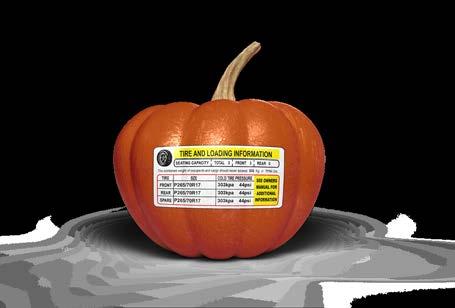
TOAVOIDSERIOUSINJURYORDEATH: •Donotleanagainstthedoor. •Donotuseseatcoversthat Seeblocksideairbagdeployment. owner’smanualformoreinformation.POURÉVITERDESBLESSURES GRAVESOUMORTELLES: •Nevousappuyezpascontrelaporte. •N’utilizezpasuncouvre-siège quipeutbloquerledéploiementdu Voircoussingonflablelatéral.lemanuelduconducteurpour deplusamplesrenseignements.
AVERTISSEMENT
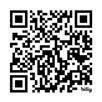
Conformstoregulations: 2015
VEHICLEEMISSIONCONTROLINFORMATION
Conformstoregulations:
U.S.
U.S.EPAclass/stds: LDV/TIER2 Californiaclass/stds: PC/ULEVqualified Group: FGMXV01.80111.2L
Evap:SFI/HO2S/TWCFGMXR0095805 , OBD:
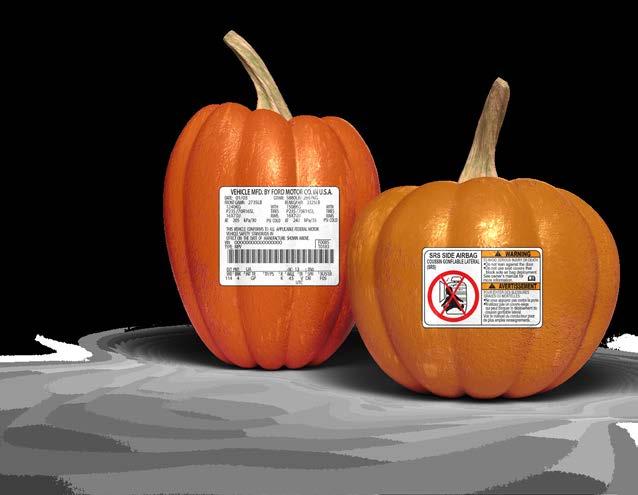

Thecombinedweightofoccupantsandcargoshouldneverexceed352kgor776lbs.
U.S.
